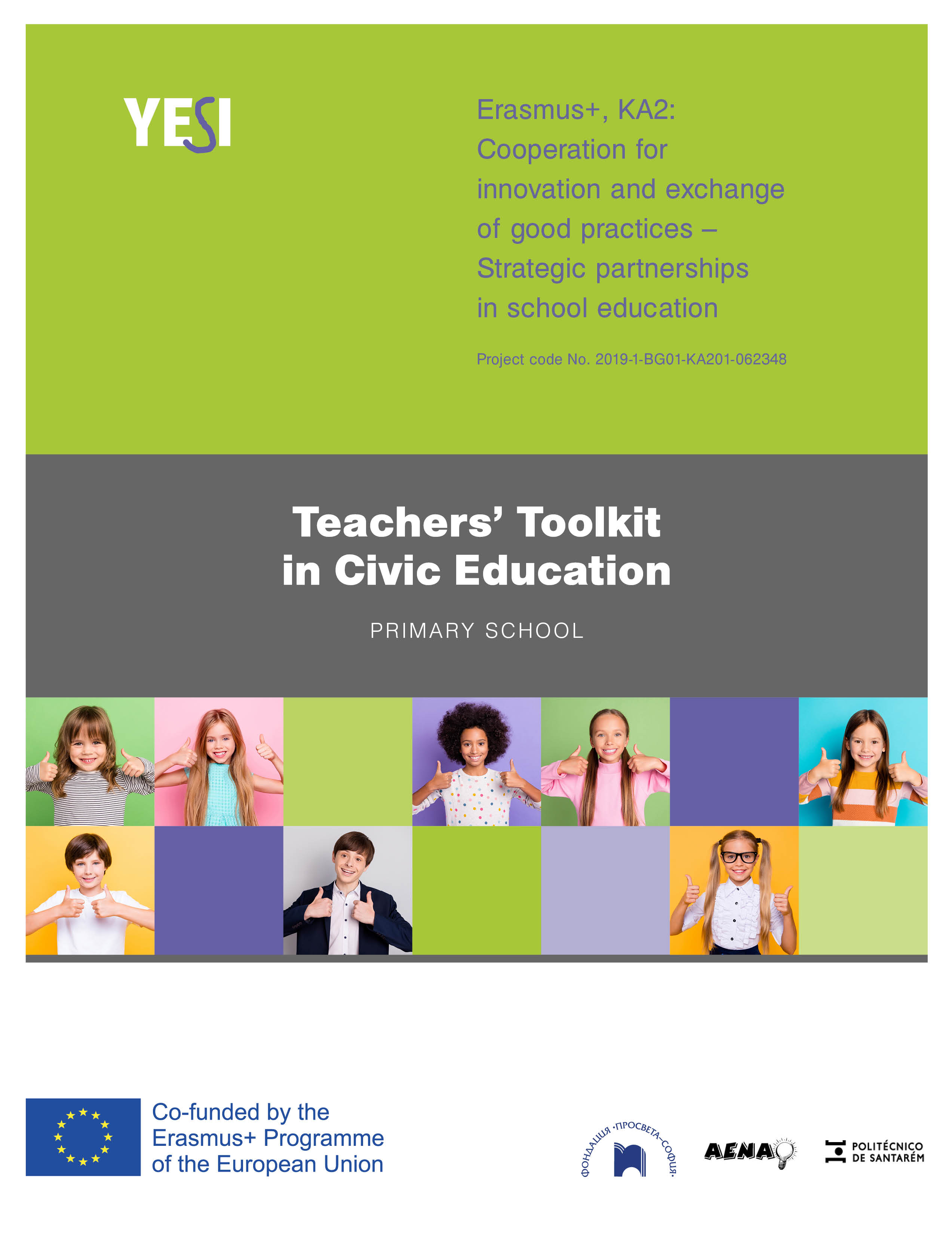 |
| 3 | ||
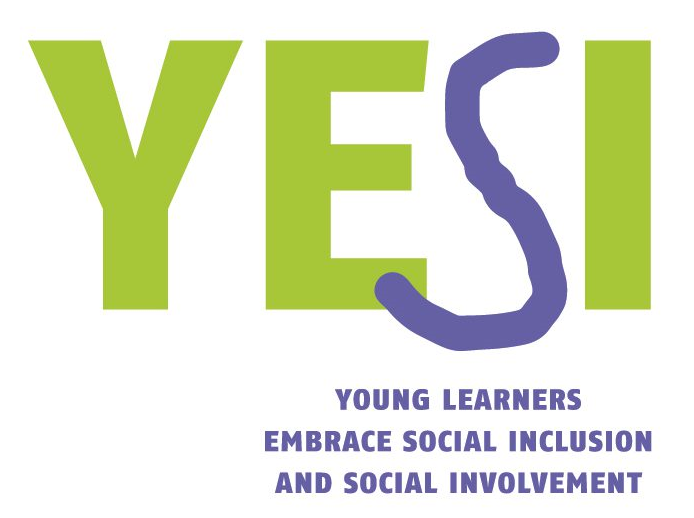 | ||
| Teachers’ Toolkit in Civic Education – primary school The publication is created within the European project "Young learners embrace social inclusion and social involvement" (YESI), which includes four organizations: Prosveta-Sofia Foundation, Instituto Politecnico de Santarém (Portugal), Center for non-formal education AENAO (Greece) and Osnovna škola “Hristo Botev” (Сърбия). The project is implemented within the Erasmus program according to Grant Agreement No. 2019-1-BG01-KA201-062348 with Human Resources Development Center, the Erasmus National Agency for in Bulgaria. Authors: © Ass. Prof. PhD Silviya Tsvetanska, Elena Lazarova. (for Prosveta-Sofia Foundation) © Ana Da Silva, Ana Torres, Bento Cavadas, Jose Maurício Dias ( for Instituto Politecnico de Santarém) © Anastasia Timologou (Center for non-formal education AENAO) Editor: Ass. Prof. PhD Silviya Tsvetanska National coordinator for the organization of piloting and validation of training resources in Serbia: Katarina Simeonov - Osnovna škola “Hristo Botev” (Serbia). The publication is available at http://yesii.eu/en/o1/ The images and graphics used are open and premium licensed by Shutterstock and original images of the partners. Reproduction is authorized provided the source is acknowledged. Publisher: © Prosveta-Sofia Foundation, Sofia, 2022 ISBN 978-954-01-4238-8 (pdf) This publication reflects the views only of the author, and the Commission cannot be held responsible for any use which may be made of the information contained therein. | ||
| 4 | ||
 | ||
| Acknowledgements We have the great chance to live in really interesting times. The world has been changing rapidly and we have been facing new challenges - with the COVID-19 pandemic, the migrant crisis which started in 2015 and has now escalated with the people fleeing the war in Ukraine. The world we live in differs quite a lot compared to the place we lived in even a few years ago. The social inequalities have rocketed due to the decline in numerous business resulting from the COVID-19 pandemic and the war conflict in Ukraine. Ethnic and religious backgrounds of the people populating the European countries have become drastically more diverse compared to any previous period in the history of the continent. Education, as many other aspects of our lives, has changed with the lockdown in European countries and the uncertainty we will have to live with having no vaccine for newly emerging viruses and war conflicts. This is the reality and we have to learn how to live with it. We have to learn to live together and to benefit from one another. We have to teach our children vital citizenship skills, teach them to be more cooperative, empathic and open to otherness. And schooling can play a vital role in this process. The mission of education is to counteract prejudices and discrimination, and to boost mutual respect and tolerance among groups of people with different lifestyles. To support teachers in their task, we created a Teacher’s Toolkit comprising ready-to-use resources for extracurricular trainings in schools. The project was inspired by the members of the management board of “Prosveta – Sofia” Foundation, who encouraged the Bulgarian team to involve primary school children in civic education trainings and to design a project aimed at bringing up young people who will make the world a better place to live in, a world of mutual understanding and respect. The Young learners Embrace Social Inclusion and Social Involvement project (YESI, as we call it) and My Europe – Your Europe – Your Say project are part of the large scale idea of “Prosveta - Sofia” Foundation to support the involvement of the whole 7 to 14 age group of students in civic education training activities. The YESI Teacher’s Toolkit resulted from the collective efforts of “Prosveta - Sofia” Foundation and our partners: AENAO – Greece and Instituto Politecnico de Santarem - Portugal. The final version of the toolkit is also the outcome of the invaluable contribution of the participating teacher-volunteers from Bulgaria, Greece, Portugal and Serbia, who piloted the created teaching resources with their students during school years 2020/ 2021 and 2021/ 2022. Teachers provided tips and suggested changes to the training materials and became co-authors of the digital resources by filming the activities they implement with their students as visual support for other teachers.
Elena Lazarova
Researcher and project manager
YESI project
Prosveta – Sofia Foundation
Bulgaria
| ||
| 5 | ||
 | ||
| | ||
| 6 | ||
 | ||
| Introduction
The Covid-19 pandemic and the unprecedented restrictive measures and lockdowns in most European countries have resulted in closing of many businesses and even greater social inequalities. Apart from that, globalization, wars and their inevitable consequences, have brought together people from different ethnic origins, nationalities, religious backgrounds, beliefs, traditions and languages. The world we are living in presently, and the world our children will live in, will be much more diverse considering the social status, ethnic backgrounds and beliefs of the people. On the other hand, sharing a common space does not automatically result in overcoming the boundaries of historically constituted communities; it does not necessarily involve opening yourself to otherness, trying to understand differences, valuing diversity and building common grounds for dialogue. But we live together and we should not only tolerate this diversity, we should value it as an opportunity through which we can learn from one another in order to build stronger, more dynamic societies. Human rights, diversity, tolerance and non-violence ways of solving issues have become even more important during the past few years considering recent events like the pandemics, wars, terrorist attacks and refugee crises. The existing beliefs, customs, practices and behavior rules within a community naturally come first and they play the most influential role in shaping one’s attitude to the surrounding world. However, schooling could play a key role in overcoming the historically developed negative attitudes to human differences, especially if we talk about young learners from primary school. It could support children in becoming open-minded, compassionate and understanding the ‘other ones’. The realization of this role suggests that teachers have the knowledge, skills and tools which will enable them to discuss with their students any emerging questions on existing notions of human differences in society and the expectations about the behavior towards their bearers rather than avoiding such questions or reaffirming as true the public valid impressions and expectations.
On November 20, 1989 the United Nations General Assembly adopted the Convention on the Rights of the Child, and it entered into force on 2 September 1990. With this document the United Nations has proclaimed that childhood is entitled to special care and assistance, "the child, by reason of his physical and mental immaturity, needs special safeguards and care, including appropriate legal protection, before as well as after birth". The Convention on the Rights of the Child consists of 54 articles. The countries which have signed the Convention have agreed to respect and ensure the rights set forth in the Convention to each child within their jurisdiction without discrimination of any kind, irrespective of the child's or his or her parent's or legal guardian's race, colour, sex, language, religion, political or other opinion, national, ethnic or social origin, property, disability, birth or other status. “The true character of society is revealed in how it treats its children” Nelson Mandela | ||
| 7 | ||
 | ||
|
| ||
| 8 | ||
 | ||
| Instruction to teachers
The “Young Learners Embrace Social Inclusion and Social Involvement” project was developed as an effort to support students so that they would respect the different, the diverse and the unique. It is addressed to students aged from 7 to 11 years old. This is the time when they start school where they spend a lot of time, so interventions such as this one can have an actual impact. Being educators you are given the opportunity to be flexible, deliver the knowledge and play a decisive role in the development, progress and successful completion of the training course. The key elements that can guarantee the successful implementation of the trainings are numerous, and they are all equally worthy - your knowledge about and your firm belief in the project ideas, the training you received, your skills to provide positive emotional atmosphere in the classroom during the training sessions and during everyday teaching, your skills to promote mutual respect among students, encouraging their equal participation and involvement as a way to ensure the effectiveness of the project. By joining the project you join a large international team of like-minded professional whose main objective is to enhance the development of children’s skills and self-esteem, which originate from their own personal skills. This way you will help students to develop a positive attitude and behavior towards the diversity of personalities and ideas in the world. In the YESI teacher’s toolkit you will be introduced to new teaching methods and methods typical for non-formal education. Using them in class may be stressful at the beginning. The following words of advice could significantly help you in order to properly implement the trainings.
| ||
| 9 | ||||||||||||
 | ||||||||||||
Class preparation for the training course and the training sessions
The HOPES&FEARS/ GROUP CONTACT session is to be held at the beginning of the school year prior to the planned training sessions making use of the resources in the Teacher’s Toolkit.Hopes & Fears / Group Contract>
| ||||||||||||
| 10 | ||||||
 | ||||||
| ||||||
| 11 | ||
 | ||
Opening a training sessionWe all know that if you eager to do an activity and start doing it with positive expectations, the outcomes are far more likely to be better and the intervention – to be more efficient. Students may come to class either with great interest, or not be interested at all. Sometimes the teacher may face notable resistance if he/she begins directly with the planned theme. The students in the class may at first need to calm down or to be stimulated. There is a series of methods that can be used to start a training session:
| ||
| 12 | ||
 | ||
| NON-FORMAL EDUCATION Teaching methods In European projects – particularly within the frame of Erasmus - it is preferable to apply non-traditional teaching methods, which create a pleasant atmosphere in the class and turn learning into an interesting experience. In order to choose a method we have taken into consideration the aims of the resource. An appropriate method encourages students to identify situations in the reality of daily life and it gives them the opportunity to discuss issues as seen from their perspective. To ensure success of the method it is necessary to prepare it in the right manner. This manual consists of 38 resources distributed in three modules: Children’s Rights - Human Rights; Diversity and Social Inclusion; and Identity, Active Citizenship and Social Involvement. Each training resource consists of two tools: (a) Non Formal Education (NFE) Tool and (b) Digital Tool (DT). The NFE tool describes the “exercises” (activities) which should be utilized with the group. The DT is an extra tool which is to be used to enrich the NFE tool. Depending on the resource, the DT could be used either prior, during or after the implementation of the activities. The NFE tools used are somehow “repeatable”; the same tool (method) can be used in a variety of resources. The same principle accounts for the DT’s. The methods (NFE tools), which are applied in the present toolkit, are described below:
It has been established that team work in small groups of 4-6 students is a very effective working method. In small groups students have the opportunity to acquire knowledge, to comprehend and apply such knowledge while shaping attitudes and making choices. By discussing, participating and communicating in the group, students can develop and exercise appropriate skills. Organizing the class into small groups can be achieved in different ways: The educator explicates an activity and students shape small groups of 4-6 persons in which they practice different activities.
The educator introduces the topic, students discuss it in groups and present their conclusions to all members of the class. Students could work individually and afterwards discuss their conclusions in their group. By discussing in the class, an issue is raised and students are divided into small groups in order to discuss and propose solutions.
| ||
| 13 | ||
 | ||
| 2. Brainstorming
Brainstorming is a creative method aiming at expressing a variety of ideas. It can be applied for several reasons; most commonly it is used in order to cover as many aspects of the topic under discussion as possible. Brainstorming does not mean simply asking for ideas from others. For an effective brainstorming session there are a few rules to be followed:
Brainstorming is quite simple to utilize. The educator writes the topic or question on the blackboard, then explains the rules to the class setting a time limit, e.g. 5 minutes. Students are asked to begin. The educator writes the ideas on the blackboard quickly. If there is a gap established, the educator can fill it in his/her ideas. Depending on the ideas, they could be categorized, i.e. a few ideas could fall under the same “major” category. The next step is to process the ideas and move on to action. In some cases it may be necessary to ask students to specify some ideas. At this stage some ideas can be clarified, evaluated, chosen and ranked. This procedure is necessary in order to differentiate the ideas, i.e. if there is no differentiation during acceptance of ideas, there will probably be the impression that all ideas are equal and acceptable.
| ||
| 14 | ||
 | ||
| 3. Role-playing games
In role-playing games a certain situation is carried over from the real world into the frame of the role-playing game. Role-playing games are useful when we wish to analyze certain behaviors or to test new or alternative behaviors within a controlled and safe framework. In order to use the role-playing games it is necessary to have a warm and open-minded atmosphere in the class. It is important that all participants are aware of the meaning of the role-playing games and that they agree on certain basic rules in order to work together in a structured manner. Therefore, the educator has to explain in brief the methodology of the role-playing games and further on, the class has to set some rules for the students playing the roles, and for the students watching the performance, before the game starts. Then, the topic is defined as a certain situation and the participating characters are described in detail in order to help all participants to understand their roles. The different scenes should not last longer than a few minutes. Students, not participating actively in the role-playing game, function as observers and they are the audience. The educator acts as the coordinator or “director” and he/she is responsible for planning, carrying out and evaluating the activity.
| ||
| 15 | ||
 | ||
| 6. Case study
A case study (UNSW Australia) is an account of an activity, event or problem that contains a real or hypothetical situation. Case studies can be used in order to help students understand how the complexities of real life influence decisions. A common case usually:
A case study is given to students as an example in order for them to implement an exercise, while at the same time trying to focus on the issue described. *All material used for the purposes of this project is located on the project’s website (http://yesii.eu/en/activities_en/). Educators, and in some cases students, will be instructed to use the materials given in the description of each resource.
In guided drama students are presented a case as far as general settings and characters are concerned. They are guided through the framework of the plot by receiving descriptions of planned events (meetings) and of their tasks in the respected meetings (messages). They are encouraged to step in the shoes of the characters and, keeping to the provided information, are free to decide on the story, i.e. details of the plot, characters’ speech, etc. The printed information is distributed to the students shortly before the events; students read it and plan their actions and speech right away, similarly to ‘speed dating’ techniques.
A mind map (Wikipedia) is a diagram used to visually organize information. A mind map is often created around a single concept, drawn as an image in the center of a blank page, to which associated representations of ideas such as images, words and parts of words are added. Major ideas are connected directly to the central concept, and other ideas branch out from those. Mind maps can be drawn by hand, either as "rough notes" during a lecture, meeting or planning session, for example, or as higher quality pictures when more time is available.
| ||
| 16 | ||
 | ||
|
9. Blue skies thinking | ||
| 17 | |||||
 | |||||
The more ideas, the better; strive for:
10. Snowballing Snowballing enables participants to think about their own responses and gradually reach out to those around them to consider the thoughts of others on an issue. How to do snowballing? The teacher asks a question and/or poses a scenario and gives the participants a few moments to reflect. Then, participants are asked to turn to the person next to them and discuss their thoughts. Depending on the activity, the teacher may ask participants to prioritize their ideas, come to consensus on their top priorities, etc. (allow several minutes). Then, each pair turns to another pair and discusses their thoughts. | |||||
| 18 | ||
 | ||
USE OF DIGITAL TOOLS
| ||
| 19 | ||
 | ||
EVALUATION
Evaluation is the process of estimating the effectiveness of a training course and it should be an integral part of every training and learning procedure. Evaluation deals with:
What is to be evaluated?
Within the Young learners embrace social inclusion and social involvement (YESI) project evaluation was carried out to examine the Teacher’s Toolkit (TT) comprising the Teacher’s Manual (TM) with the lesson plans and the e- resources from the Digital Tools Resource Pack (DT). | ||
| 20 | ||||||||
 | ||||||||
| Energizers
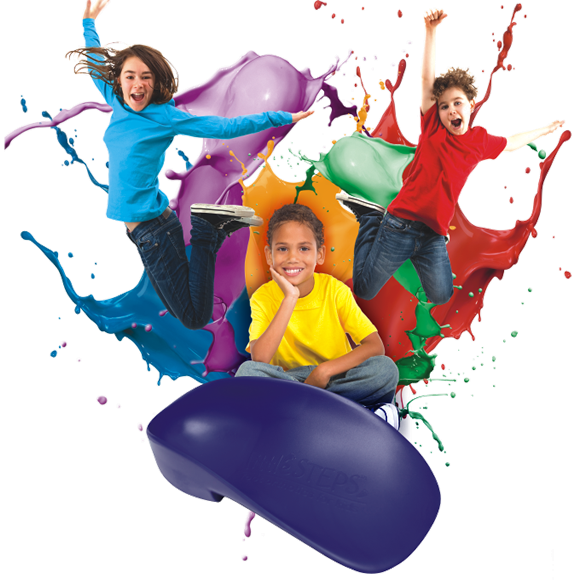 * The suggested energizers are different and some of them could take longer, but, as a rule, they are expected to last only a couple of minutes. With the preparation and the time needed to launch and do the described energizers, this is estimated to last 5 minutes. | ||||||||
| 21 | ||
 | ||
| Energizers | 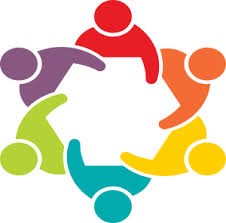 1 - Break the Circle 1 - Break the Circle The teacher assigns randomly a number to each student, depending on the group size, i.e. for 20 students, numbers 1-4 are ok, so each group has 5 people (groups could be synthesized by the students with the same number, i.e. all having been assigned number ‘1’ or by students where each one has his/her own unique number 1-4; similarly and more fun is grouping by ingredient for a Greek salad, where every student is i.e. ‘tomato’, ‘cucumber’, ‘onion’, ‘oregano’, etc.) Once the groups have been formed, they make circles and the teacher randomly picks a number (or an ingredient) to step out of the circle and try to break in, while the others remaining are instructed to not let go of their hands no matter what. This can be repeated once more with another number stepping out. | |
| Energizers |  2 - Moo!!! 2 - Moo!!! The teacher assigns randomly in a piece of paper (turned upside down on their desks) each student with farm animal, i.e. ‘cow’, ‘horse’, ‘sheep’, ‘rooster’, etc. Once the students are informed of their animal role, they are instructed to walk around the room acting like the animal they are assigned (i.e. making its sound), in order to find their kind. | |
| Energizers | 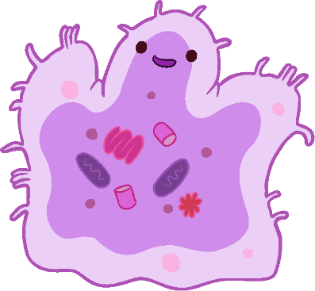 3 - Amoeba 3 - Amoeba An evolution game! Everyone starts off as an amoeba, with the purpose of evolving to a human. All students walk around acting like an amoeba and when they meet with another amoeba, they play one round of rock/paper/scissors. Whoever wins evolves into a worm. When two worms meet they play again rock/paper/scissors and whoever wins turns into a wasp, but whoever loses goes back to becoming an amoeba. This continues until one becomes human. The evolution stages are: amoeba à worm à wasp à chicken à monkey à human. | |
| Energizers |  4 - Human chain 4 - Human chain Everybody stands up in a circle. They close their eyes and start moving towards the middle of the circle, holding their hands up. Whoever they touch with their hands, they hold and do not let go, so they make a knot. Then the facilitator asks the students to open their eyes and try to untangle themselves (make a circle) without letting go of their hands. | |
| Energizers |  5 - Good morning or evening 5 - Good morning or evening Everybody walks around the room greeting each other (as if everybody was their close friends) using words and gestures (shake hand, kiss, hug). Then they repeat the greeting in silence using only their eyes. When the exercise is over, the teacher asks students how did they feel with the two different ways of greeting (eg was it difficult, how did they manage to communicate, etc). | |
| 22 | |||||||||||
 | |||||||||||
| Energizers | 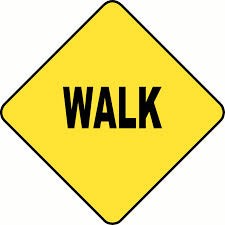 6 - Keep walking 6 - Keep walking The teacher instructs the students to walk in different manners covering the whole rook, i.e. walk like you are very happy, walk like a very heavy elephant, walk like you are 80 years old, walk like it’s raining cats and dogs, walk like a toddler, etc. | |
| Energizers | 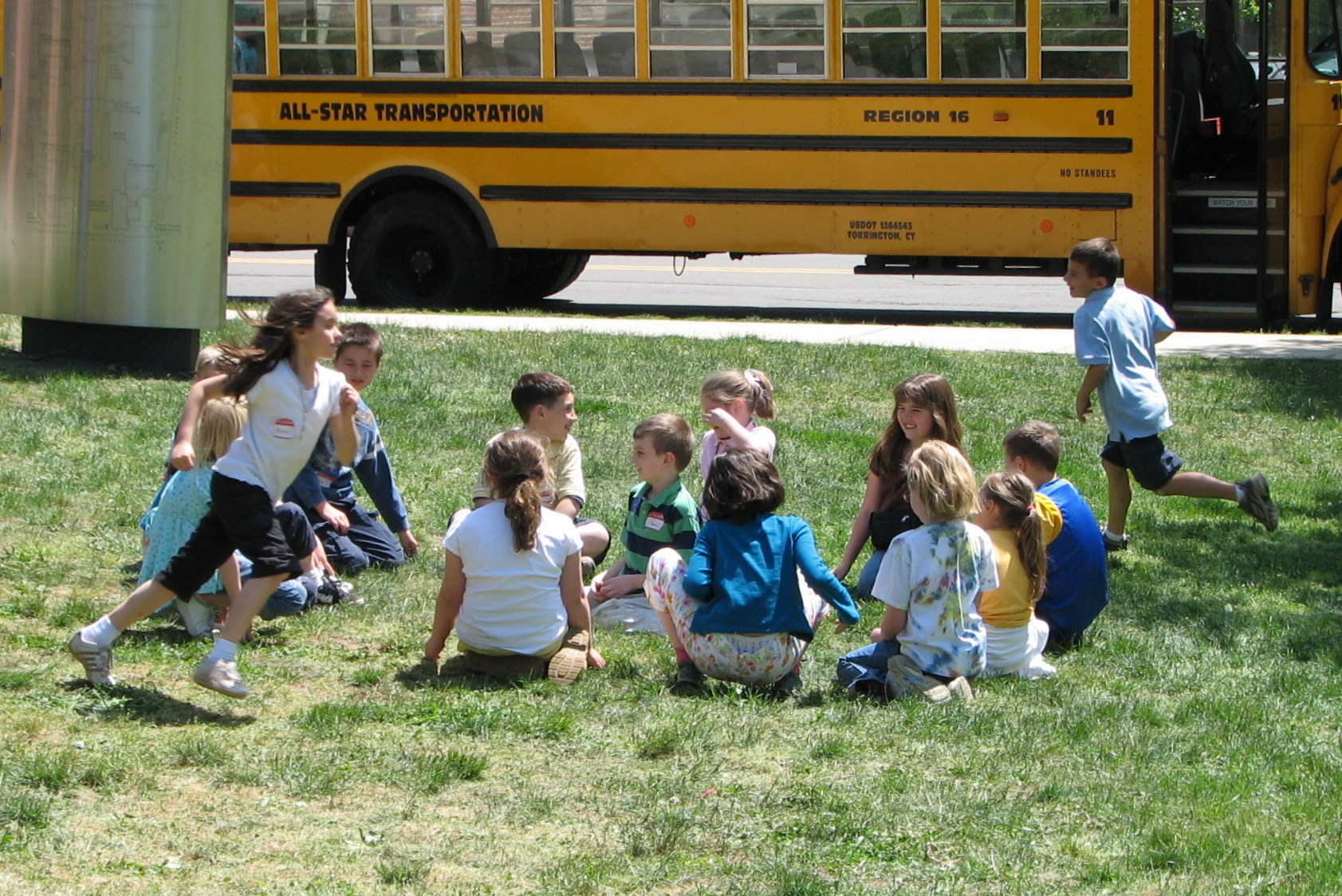 7 - Connecting eyes 7 - Connecting eyes Participants stand in a circle. Each person makes eye contact with another person across the circle. The two walk across the circle and exchange positions, while maintaining eye contact. Many pairs can exchange at the same time, and the group should try to make sure that everyone in the circle is included in the exchange. Tip: Begin by trying this in silence and then exchange greetings in the middle of the circle. Variations: If the teacher considers, knowing the class atmosphere, that some students might be left not participating, i.e. they try to make eye contact but nobody responds to them and they have no chance to move from their initial position, the moderator could divide the class in 2 groups and introduce a competitive element – after the activity each group will be marked on the ‘team spirit thermometer’ (which could be printed on a A4 paper and the teacher marks the degrees with a marker). The more people you have left not participating in the ‘eye contact’ activity – the lower the degrees to be marked on the thermometer. | |
| Energizers | 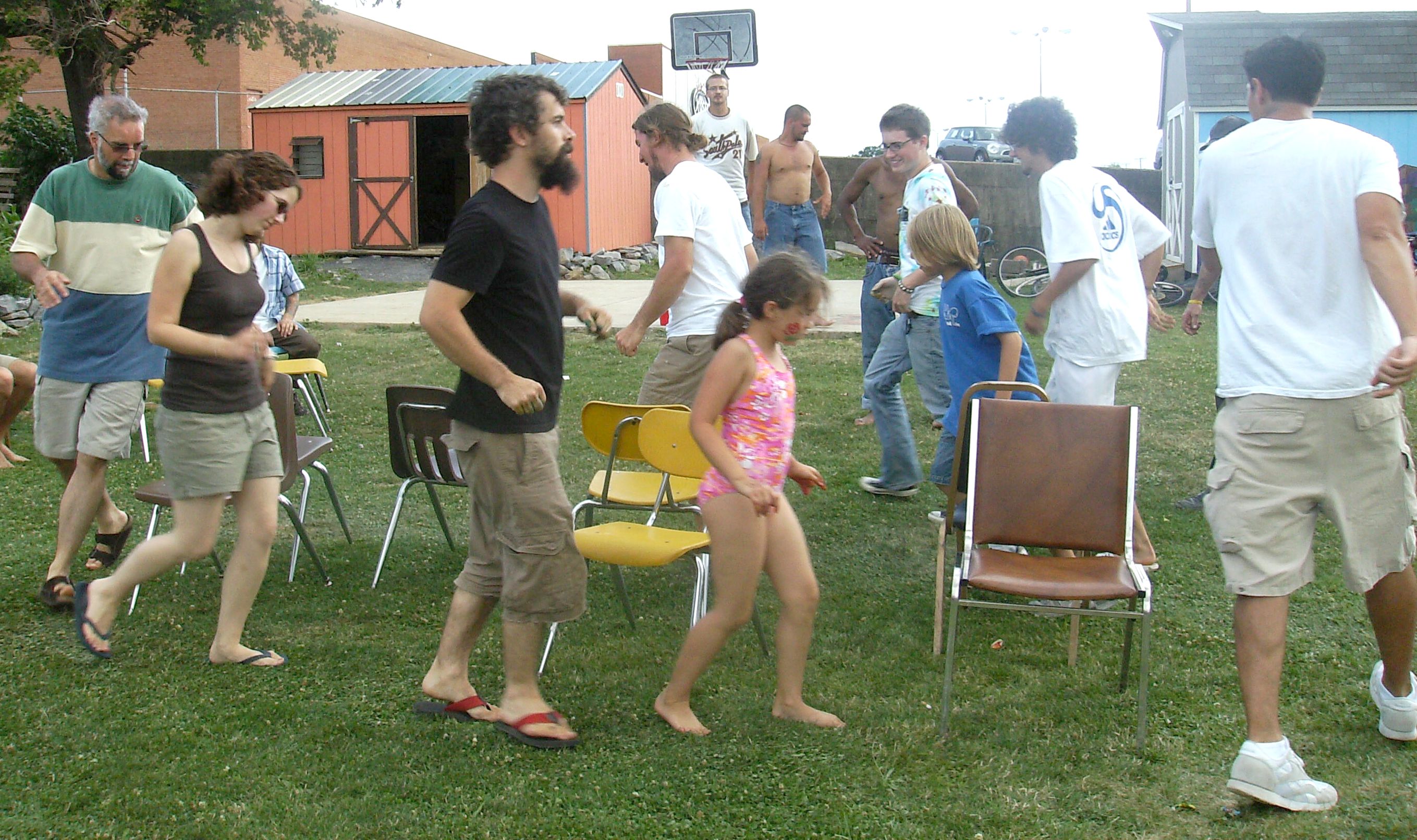 8 - Find another seat: 8 - Find another seat: Have the students sit on chairs in a circle, with the number of chairs being one less than the number of students. The student without a chair stands in the middle and tells their name. Then the student calls out a characteristic or a colour, or type of clothing, e.g. “Everyone wearing orange!”. All participants who are wearing orange must get up and find another seat, but not the one immediately to their right or left. The student in the middle races to find a seat and the person left standing becomes the next caller in the middle. | |
| Energizers |  9 - Balloon pop 9 - Balloon pop Have everyone form a circle. Instruct the participants to put one piece of information about themselves, e.g. I have 2 sisters, or my mother is called Samy, on a small slip of paper, fold it, and put it in a blown up balloon. Throw the balloons in the middle of the circle and then have people take turns popping a balloon, reading the piece of paper, and guessing to whom the information applies. Participants could wander round the room asking ‘yes/ no’ questions to the other participants but not exactly the statement from the paper slip, e.g. they cannot ask “Have you got 2 sisters? But could ask “Have you got sisters?” and then “Have you got more than 1 sister?’, “Have got less than 3 sisters?”, etc. Game finishes when all participants have identified the author of the paper slip they have. *Note: this exercise should be used if there is enough time. | |
| 23 | ||||||||||||||
 | ||||||||||||||
| Energizers |  10 - Rope game 10 - Rope game Have the participants stand on the middle of a space cleared of desks, chairs, etc. Divide the room in a way that allows them easily to move from one half of the room to the other, e.g. by placing a long piece of rope on the floor. The teacher stands at one of the ends of the rope and calls out a characteristic, or a colour or a letter, e.g. “Everyone having blue eyes!”; “Everyone having 3 brothers”, “Everyone whose name begins with B”, etc. and points to the part of the room where the participants wearing orange/ having 3 brothers/ having B names have to move to. All participants who are wearing orange/ having 3 brothers/ having B names move to the respective part of the room; the ones who are not , have to go to the other part. Questions have to be constructed so that the class does not divide in groups having comparatively equal number of students, i.e. one of the groups should consist (in most cases) of one, two or few students. Debriefing: Participants are asked to share how they felt when they were part of a big group; and when they were standing alone (or were part of a very small group); what did they feel of themselves (as part of a small/ big group), and what their feelings were towards the group they were not part of. | |
| Energizers | 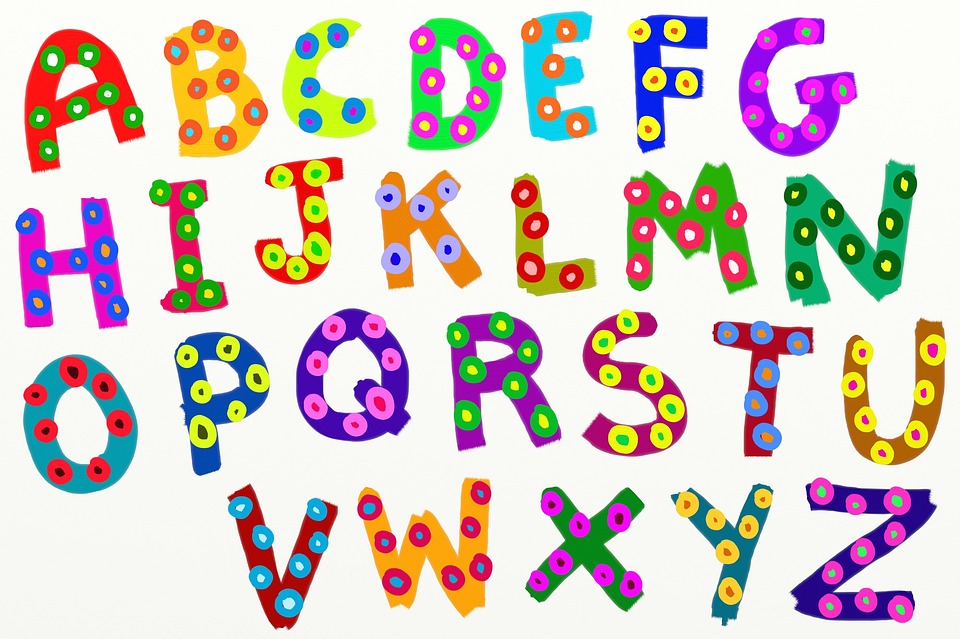 11 - Alphabetical order 11 - Alphabetical order Students make a circle with the chairs, take off their shoes and get on the chairs (one per person - the circle needs to be as close as possible). Standing on the chairs and just moving from one to another one without getting off, students have to arrange themselves in alphabetical order according to their name. As soon as they are ready, teacher will check if they are right; if not they continue until they are right. | |
| Energizers | 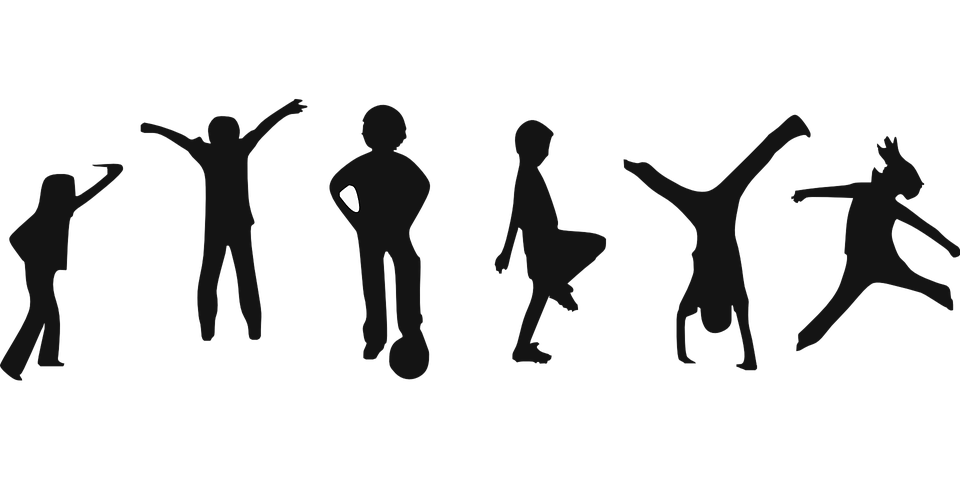 12 - Body spelling 12 - Body spelling Teacher asks students to write their name in the air using different parts of their body, for example with the hand/leg/elbow/nose. Optional: If time allows teacher asks to the class to spell out some words reproducing the letters with their bodies. Students can collaborate all together or can create different groups. | |
| Energizers | 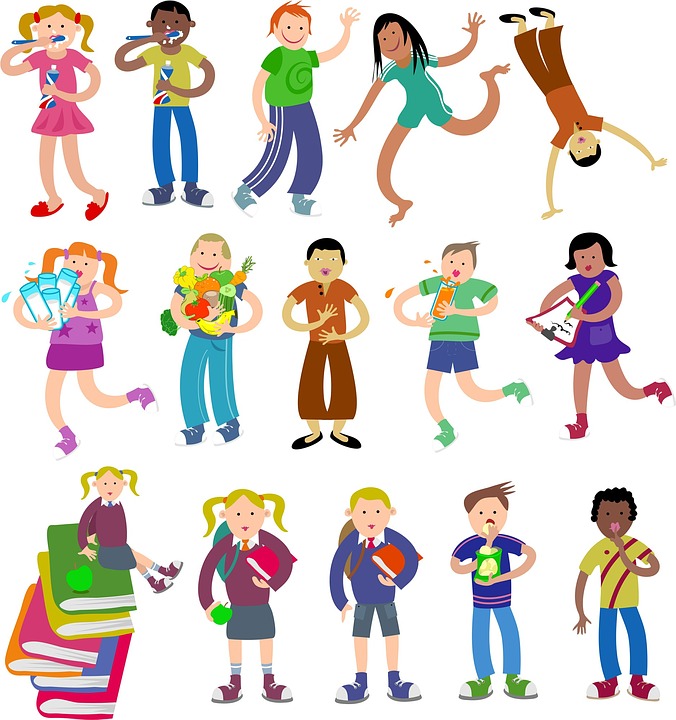 13 - Simon says 13 - Simon says Teacher tells the group that they should follow instructions when he/she starts the instruction by saying “Simon says...”. If the teacher does not begin the instructions with the words “Simon says”, then the group should not follow the instructions! The teacher begins by saying something like “Simon says clap your hands” while clapping their hands. The participants follow. The teacher speeds up the actions, always saying “Simon says” first. After a short while, the “Simon says” is omitted. Those participants who do follow the instructions anyway are ‘out’ of the game. The game can be continued for as long as it remains fun. | |
| Energizers | 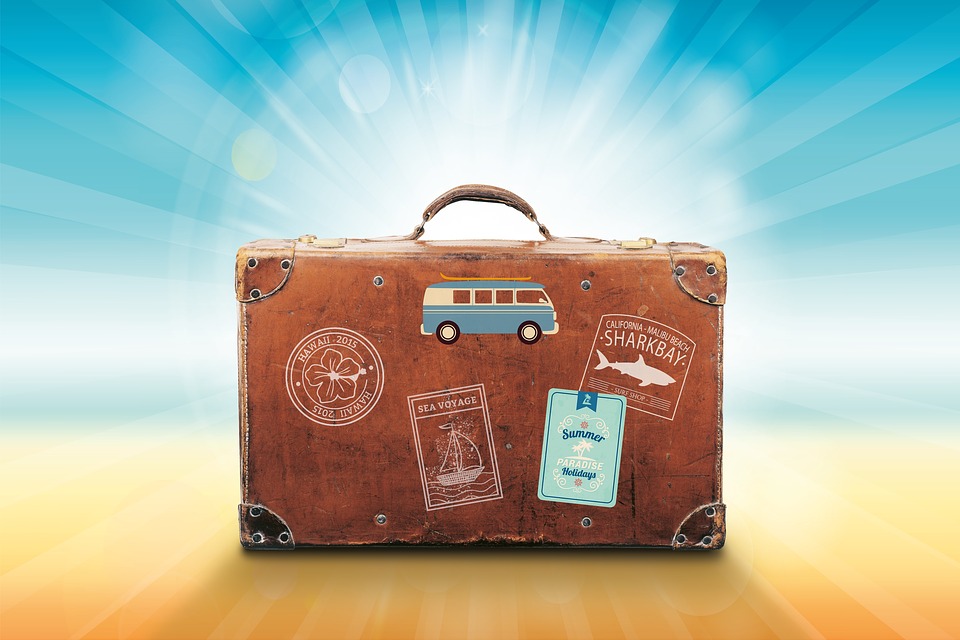 14 - I am going on a trip 14 - I am going on a trip Everyone sits in a circle. Start by saying “I’m going on a trip and I’m taking a hug”, and hug the person to your right. That person then has to say “I’m going on a trip and I’m taking a hug and a pat on the back”, and then give the person on their right a hug and a pat on the back. Each person repeats what has been said and adds a new action to the list. Go round the circle until everyone has had a turn. | |
| 24 | ||||||||||||||
 | ||||||||||||||
| Energizers | 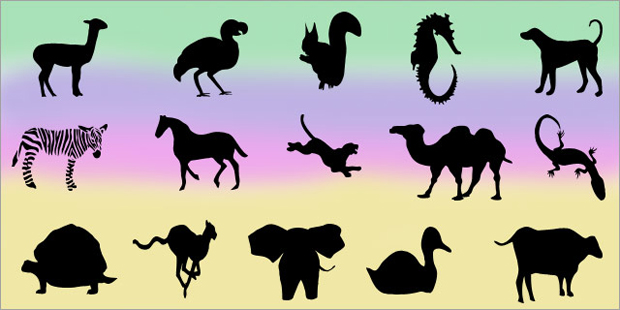 15 - Animal roundup 15 - Animal roundup The teacher tells to the class to silently think of an animal. Then he/she tells to the group that without talking, they need to arrange themselves on a line from largest to smallest animals. Group members can only make gestures and the noise of their animal. After they have finished, teacher ask to the students to say the animal they were supposed to be to see if the order is correct. | |
| Energizers | 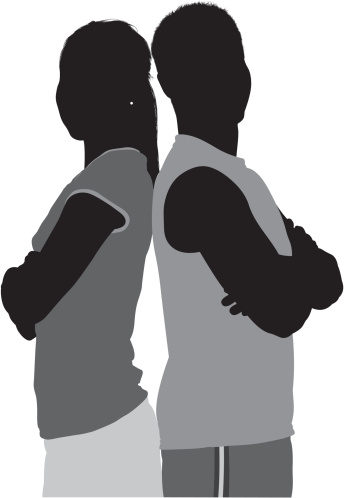 16 - Back to back 16 - Back to back Participants find a pair of similar size and weight. They sit on the floor, back to back with their pair. They hold their arms. They have to get up, while keeping the arms and backs together. After trying once-twice with their pair they switch pairs. They can repeat this process with other pairs for a few times. | |
| Energizers | 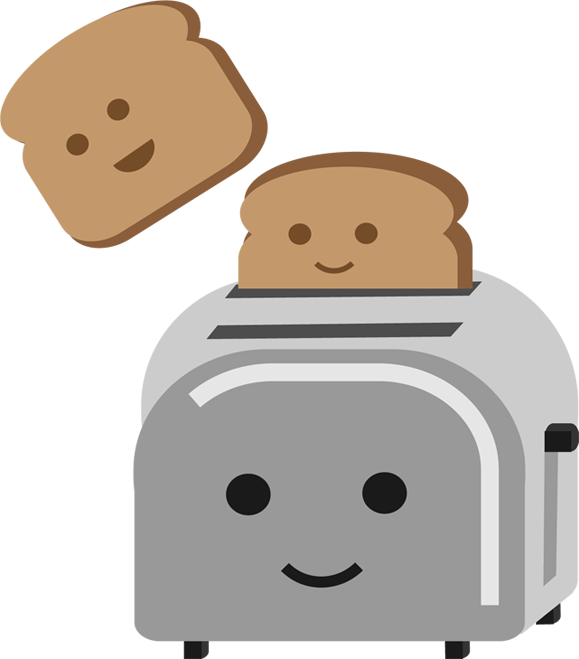 17 - Toaster or Rock Star 17 - Toaster or Rock Star The group starts in a circle with one person in the center. The person in the center points at someone in the circle and says “Toaster” or “Rock star”.
| |
| Energizers | 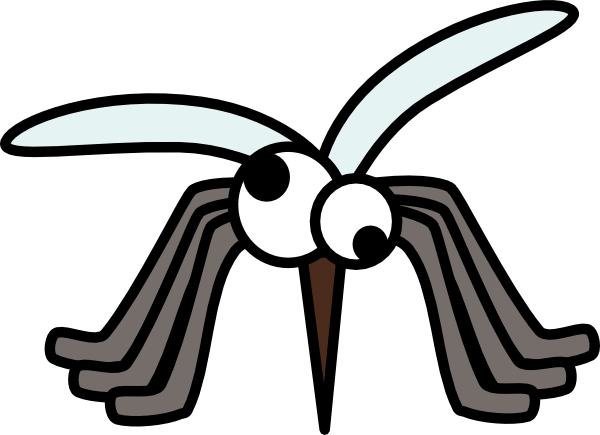 18 - Mosquito game 18 - Mosquito game The group stands in a circle and the facilitator tells a story about a plague of mosquitoes and that everybody has to kill the mosquitoes so as they don’t get malaria. The facilitator puts up a mosquito on the head of a person who must lower in order to avoid the mosquito. The two persons next to that person must clap their hands above his/her head to kill the mosquito, but the mosquito escapes and it goes on. When the group is already doing the game well and quickly, the facilitator will add more mosquitoes until it is almost impossible for the group to catch as many mosquitoes. | |
| Energizers |  19 - Grab the finger 19 - Grab the finger In a circle, place right finger on next person s left palm. Try to grab a finger before yours gets grabbed. After doing several times switch; place left finger on next person s right palm and repeat the process for a few times. | |
| 25 | |||||||||||||||||||||||||||||||||||||||||||||||||||||||||||||||||||||||||||||||||||||||||||||||||||||||||||||||||||||||||||||||||||||||||||||||||||||||||||||||||||||||||||||||||||||||||||||||||||||||||||||||||||||||||||||||||||||||||||||||||||||||||||||||||||||||||||||||||||||||||||||||||||||||||||||||||||||||||||||||||||||||||||||||||||||||||||||||||||||||||||||||||||||||||||||||||||||||||||||||||||||||||||||||||||||||||||||||||||||||||||||||||||||||||||||||||||||||||||||||||||||||||||||||||||||||||||||||||||||||||||||||||||||||||||||||||||||||||||||||||||||||||||||||||||||||||||||||||||||||||||||||||||||||||||||||||||||||||||||||||||||||||||||||||||||||||||||||||||||||||||||||||||||||||||||||||||||||||||||||||||||||||||||||||||||||||||||||||||||||||||||||||||||||||||||||||||||||||||||||||||||||||||||||||||||||||||||||||||||||||||||||||||||||||||||||||||||||||||||||||||||||||||||||||||||||||||||||||||||||||||||||||||||||||||||||||||||||||||||||||||||||||||||||||||||||||||||||||||||||
 | |||||||||||||||||||||||||||||||||||||||||||||||||||||||||||||||||||||||||||||||||||||||||||||||||||||||||||||||||||||||||||||||||||||||||||||||||||||||||||||||||||||||||||||||||||||||||||||||||||||||||||||||||||||||||||||||||||||||||||||||||||||||||||||||||||||||||||||||||||||||||||||||||||||||||||||||||||||||||||||||||||||||||||||||||||||||||||||||||||||||||||||||||||||||||||||||||||||||||||||||||||||||||||||||||||||||||||||||||||||||||||||||||||||||||||||||||||||||||||||||||||||||||||||||||||||||||||||||||||||||||||||||||||||||||||||||||||||||||||||||||||||||||||||||||||||||||||||||||||||||||||||||||||||||||||||||||||||||||||||||||||||||||||||||||||||||||||||||||||||||||||||||||||||||||||||||||||||||||||||||||||||||||||||||||||||||||||||||||||||||||||||||||||||||||||||||||||||||||||||||||||||||||||||||||||||||||||||||||||||||||||||||||||||||||||||||||||||||||||||||||||||||||||||||||||||||||||||||||||||||||||||||||||||||||||||||||||||||||||||||||||||||||||||||||||||||||||||||||||||||
| Energizers |  20 - Chief of clan 20 - Chief of clan Everyone stands in a circle. One participant closes his/her eyes or steps out of the room. He/She will have to guess who is the chief of the clan. One participant volunteers to be the secret Chief (quietly, so the "guesser" can't hear anything). The chief begins an action such as snapping fingers, patting the tummy, or slapping knees, and everyone in the circle imitates him/her. The guesser returns to the room and tries to figure out who the chief is. As the guesser looks around, the chief changes the action avoiding being detected. | |
| Energizers |  21 - Name game with balls 21 - Name game with balls Students stand in a circle. The teacher gives a ball to one of the students. He/she holds the ball, then says the name of another participant and passes them the ball. After a few passes, the teacher adds one more ball in the game, and then – another one. This way there will be 2/3/4 balls in the air at a time and all participants will be calling each other’s names | |
| Energizers | 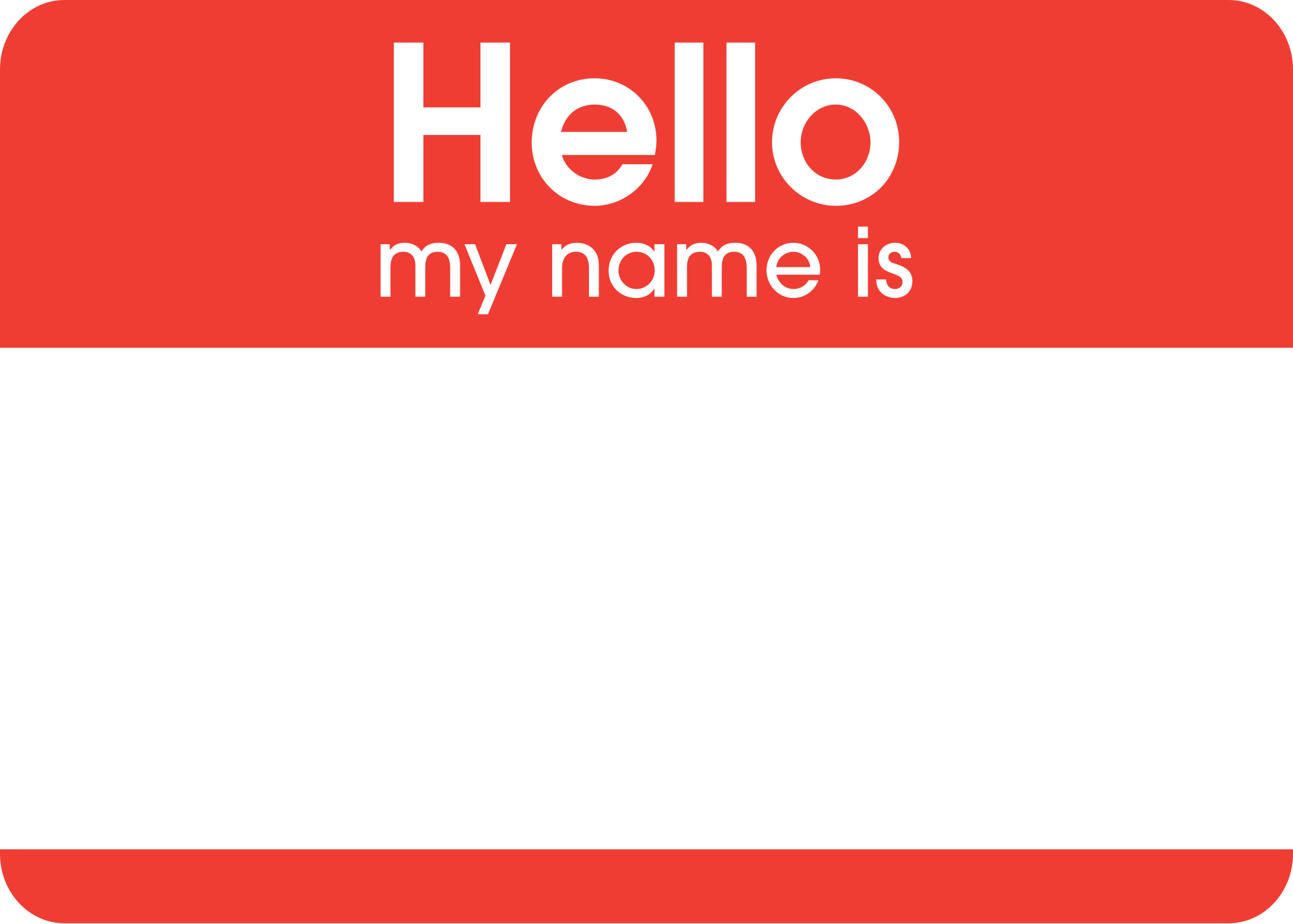 22 - Names and adjectives 22 - Names and adjectives Participants stand in a circle; they think of an adjective to describe character or how they are feeling. The adjective must start with the same letter as their name, for instance, “I’m Maria and I’m merry”. Or, “I’m Alexander and I’m amazing.” As they say this, they can also mime an action that presents the adjective in a meaningful way. (N.B. In the national language versions of the TM there should be used popular names for the country and relevant adjectives in the respective language). Variation (use if time allows): The game could also be used a memory game (concentration game) to check if the rest of the group has remembered the ‘name-adjective’ pairs. After several rounds (each participant repeating his name and adjective, the teacher/ a game master, checks if the group remembers the ‘names-adjectives’ fixed pairs by saying the name of one of the students, e.g. ‘Maria’; Maria steps forward to the middle of the circle and the rest of the group are expected to come up with the adjective previously linked to the name by saying “Maria is merry”. If they cannot guess, the participant in the circle (Maria) might mime again the adjective as a tip. | |
| 26 | ||||||
 | ||||||
| Relaxing Exercises
|  * The suggested relaxing exercises are different and some of them could take longer, but, as a rule, they are expected to last only a couple of minutes. With the preparation and the time needed to do the relaxing activities and to end the lesson, this is estimated to last at most 5 minutes. | |||||
| 27 | ||
 | ||
| Relaxing Exercises | 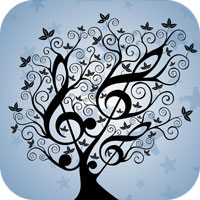 1 - Guided fantasy 1 - Guided fantasy Students are asked to close their eyes (if comfortable) and, with the guidance of the facilitator, slowly imagine a scene of the past or future event. More and more details are used to describe the event with all senses and thoughts. A suggested brief script could be à Begin by breathing slowly and deeply… Think of yourself in a place where you feel relaxed and at ease… Create all the details in your mind, what do you see… what the sounds are like, the smells and colors of this special place… Are there any people …? | |
| Relaxing Exercises | 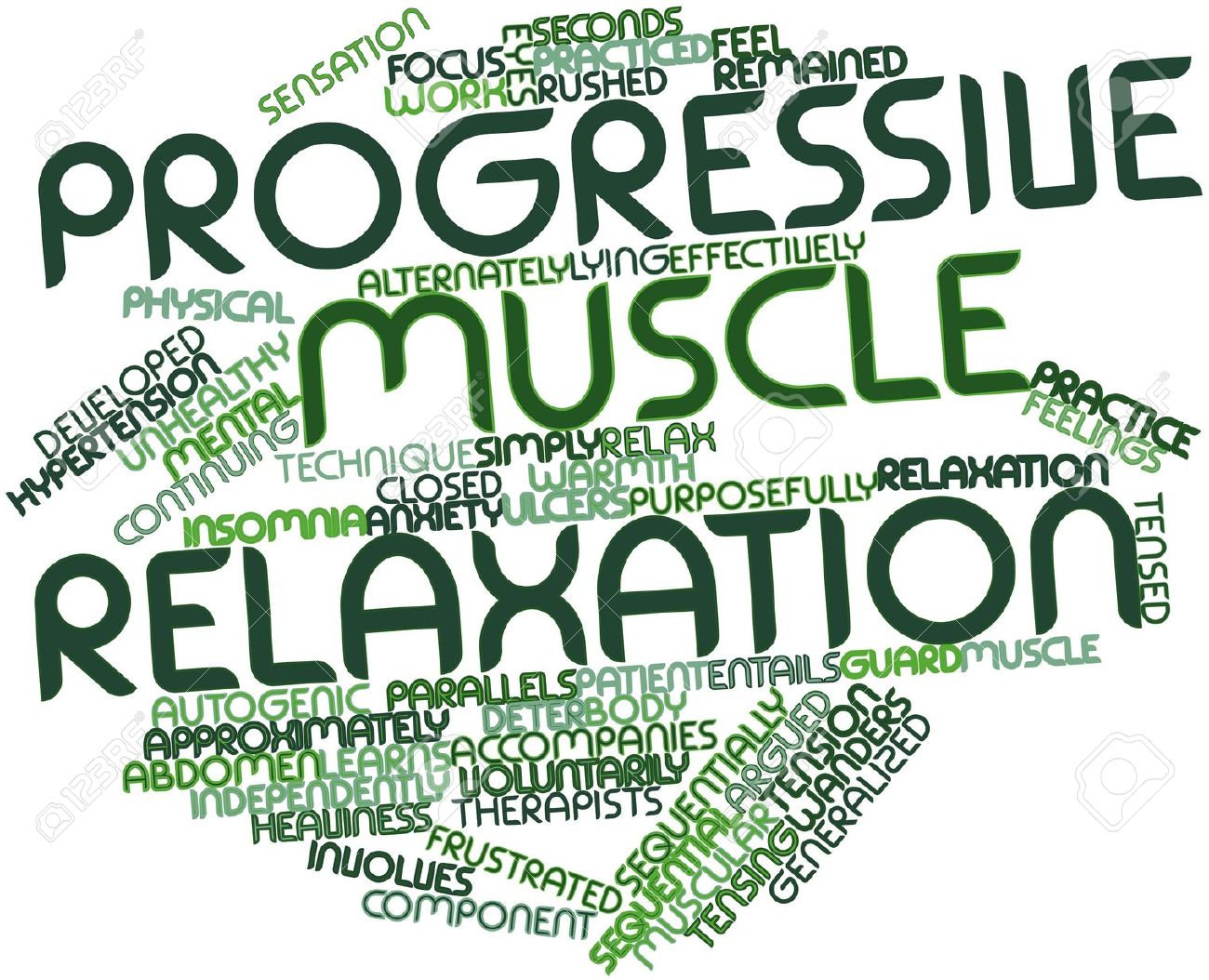 2 - Progressive muscle relaxation 2 - Progressive muscle relaxation To release tension from head to toe, students are asked to close their eyes (if comfortable) and focus on tensing and relaxing each muscle group for two to three seconds each. The teacher guides the students; he/she asks them to start with the feet and toes, then move up to the knees, thighs, rumps, chest, arms, hands, neck, jaw, and eyes—all while maintaining deep, slow breaths. Kelly Roper | |
| Relaxing Exercises |  3 - Guided breathing 3 - Guided breathing Teacher asks the students to close their eyes (if comfortable), inhale for a count of four, then exhale for a count of four (all through the nose, which adds a natural resistance to the breath). Then, with one hand on the chest and the other on the belly, the students can take a deep breath in through the nose and exhale through the mouth, ensuring this way that the diaphragm (not the chest) inflates with enough air to create a stretch in the lungs Jordan Shakeshaft | |
| Relaxing Exercises |  4 - Visualization using color/soothing sound 4 - Visualization using color/soothing sound Facilitator asks the students to imagine a favorite color that makes them feel peaceful and safe. They keep their imagine taking in that color with each breath and sending it throughout their entire body as they exhale. They continue until they visualize being filled with their special, relaxing color. The same exercise can be performed using soothing sound or aroma. Also, it is more effective if relaxing music is used. Kelly Roper | |
| Relaxing Exercises |  5 - Use a word that describes their feelings/thoughts 5 - Use a word that describes their feelings/thoughts Students are asked to close their eyes (if comfortable) for a minute and think of a word that describes their feelings/thoughts after finishing the resource. Then the students open their eyes and one by one say their word to the classroom | |
| 28 | ||||||||
 | ||||||||
| Relaxing Exercises | 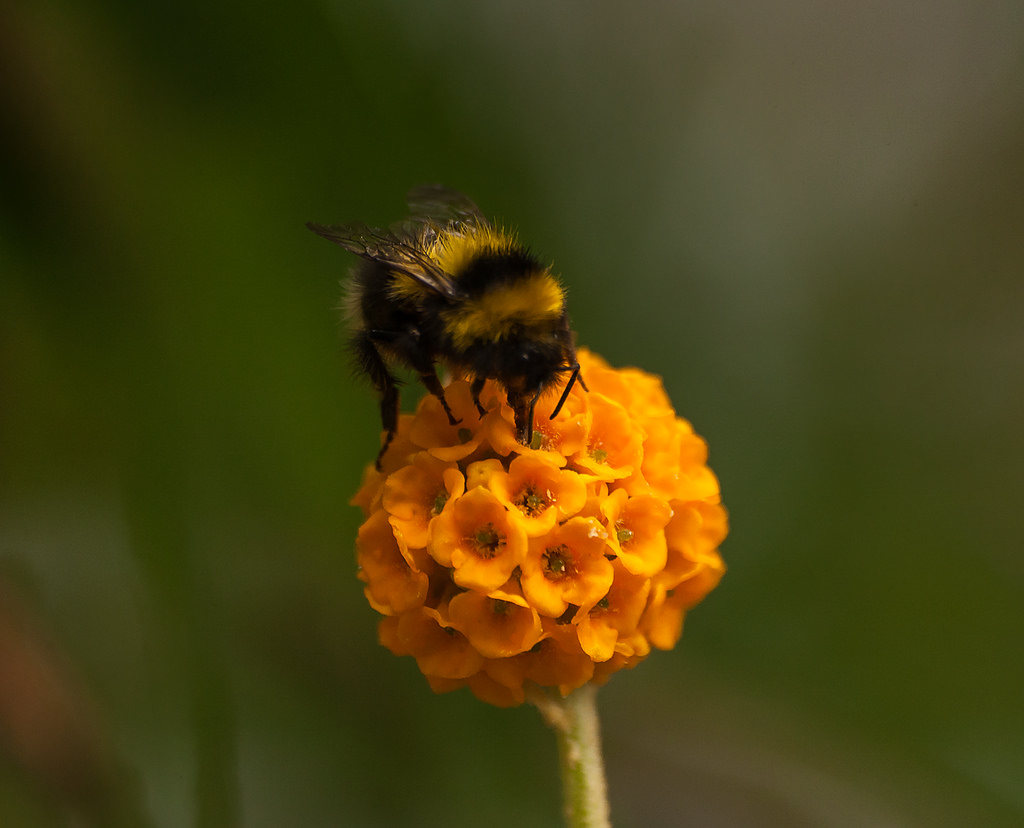 6 - Bee breathing 6 - Bee breathing The teacher instructs the students to get in a comfortable position to practice bee breathing. They have to imagine that they are sitting on a leaf or a flower petal, to sit straight and allow the leaf or petal to gently support them. The teacher gives students the following instructions: Breathe in, allowing the air to just gently come in through your nose, filling up your lungs. As you breathe out, buzz like a bee. See how long your buzz can last. See how far your bee is going to fly before sitting down and resting again. Buzz. Buzz. Buzz. On the next breath, see if your bee can fly with a loud, strong buzz. On the next breath, see if your bee can fly with a soft buzz. When the exercise is finished, the teacher gives time for a short discussion: Does it feel different with a strong or a soft buzz? How does your body feel? Optional (use if time allows): After breathing practice, draw a picture of a bumblebee and the leaf or flower that you were “sitting on” in your imagination. This picture can be used as a relaxation practice reminder. When you see the picture, practice being like a Bee on a leaf and practice a Bee breath. | |
| Relaxing Exercises |  7 - Strong as a tree 7 - Strong as a tree All students spread out in the room. With their feet firmly planted on the ground, they pretend they are trees that are slowly swaying back and forth with a breeze. The movements become stronger as a storm approaches. The students try to make their movements as strong as possible, but remember to keep their feet on the ground. Slowly the wind dies down and the trees can rest. | |
| Relaxing Exercises | 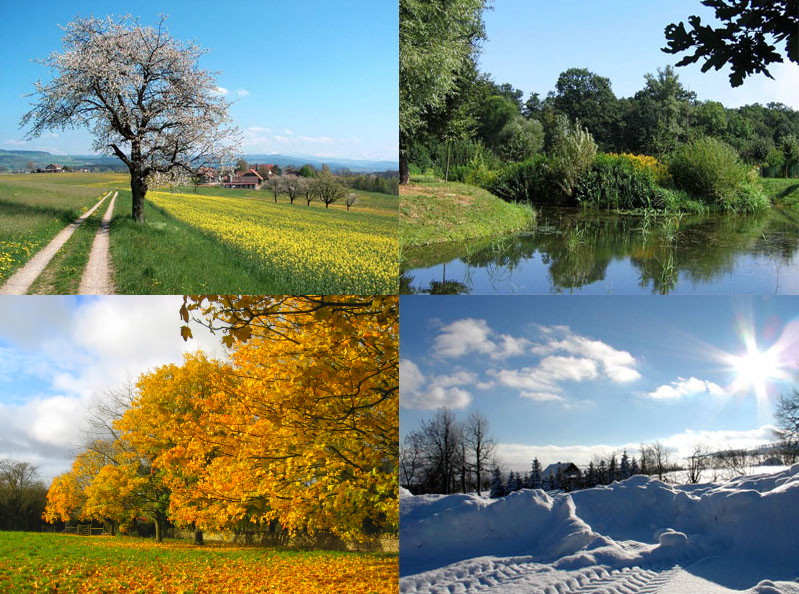 8 - Seasons of the year 8 - Seasons of the year All players sit in a circle, but not too close to one another. The teacher moves like a plant during the seasons of the year. Winter: the plants are small, weak and are crunched together on the ground. Spring: through the stronger sunshine, the plants grow slowly and slowly rise. Summer: through the warm sun, the plants slowly open their arms, the flowers open their blooms are stand up straight. Autumn: the sun rays become weaker. The plants begin to slowly shrivel, the blooms and leaves begin to fall away. | |
| 29 | |||||||||||
 | |||||||||||
| Relaxing Exercises | 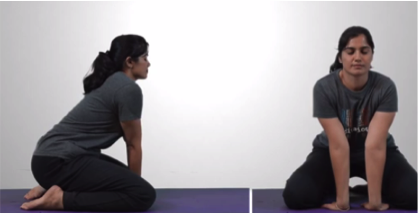 9 - Lion's breath 9 - Lion's breath Lion’s breath is a playful way to release and relax into more peaceful feelings. The trainer tells students that they are going to do a breath called the lion’s breath in order to let go of feelings or thoughts we no longer want. This breath is very helpful in getting those ideas out of us and pushing them far away. Instructions
| |
| Relaxing Exercises |  10 - Mountain range 10 - Mountain range Stand side by side in a line, in mountain pose, your feet hip-width apart. Each foot must touch the foot of the person on each side. Walk (as a group) across the room without separating their feet from your partner’s. Variation: Ask the students to walk on their toes. | |
| Relaxing Exercises | 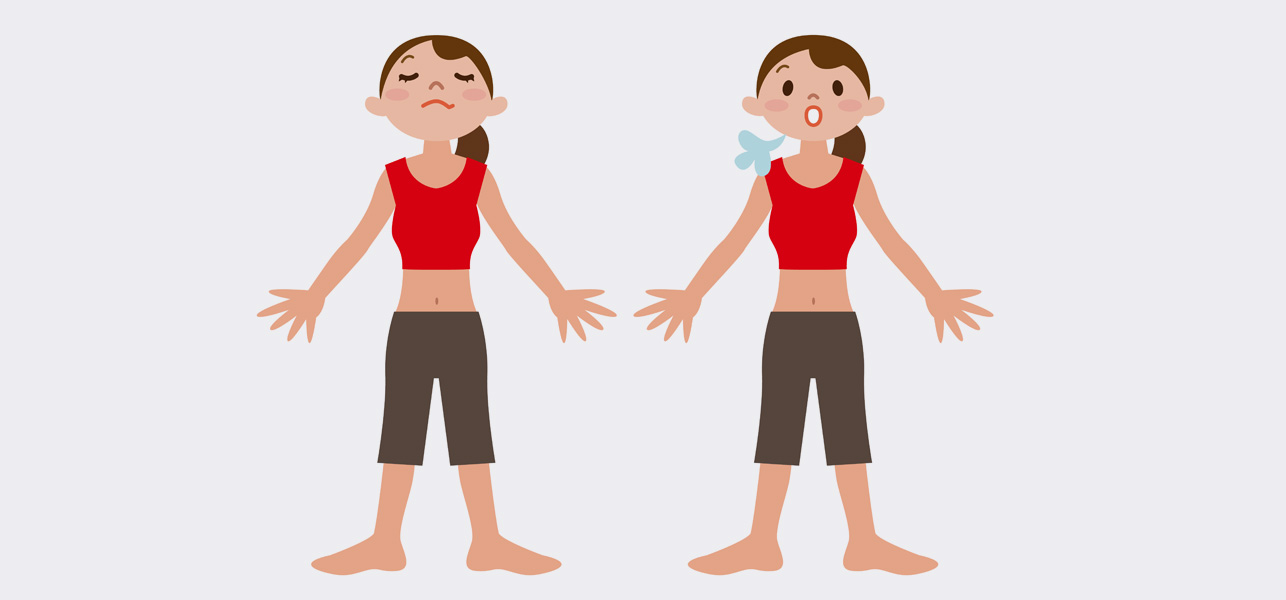 11 - Breathing exercise 11 - Breathing exercise Teacher asks students to make a circle and do the following exercises, repeating each one few times and alternate them. Teacher can also add new ones. Breathing in raise your arms above your head and say “Elevator Up!” Breathing out, float your arms back down to your sides, saying “Elevator Down.” Repeat. Take three quick breaths in while wiggling your nose. Wiggle your nose on each breath in. Then wiggle your nose on each breath out. Hold your hand in front of your nose and hiss hiss hiss while breathing out. | |
| Relaxing Exercises |  12 - Warm back 12 - Warm back A piece of paper is stuck to each student’s back and they are given a pen. The paper is already prepared. Each piece of paper says: “I like………..”. Slow music is played and the students walk around and write characteristics about the person whom they like on the paper. Each child is allowed to look at the paper at the end and take it home. | |
| 30 | ||||||||||||||
 | ||||||||||||||
| Relaxing Exercises | 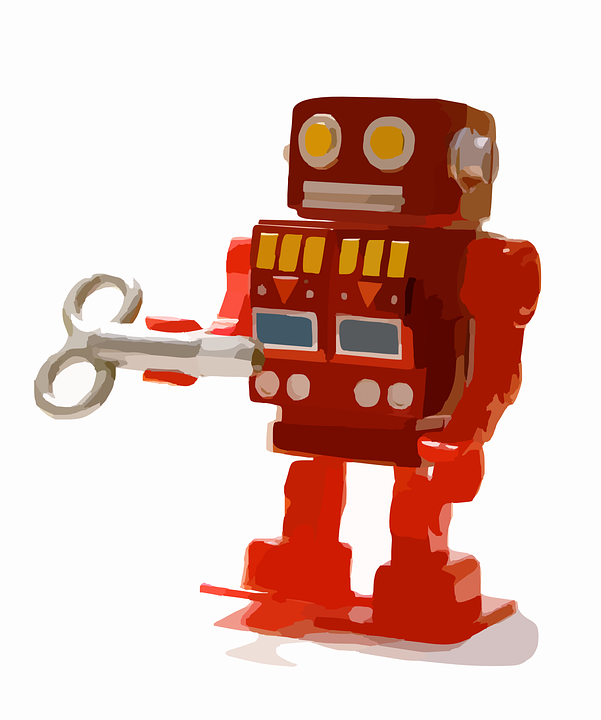 13 - Body massage 13 - Body massage The students stand in a circle: they need to follow all the movement the teacher does and massage themselves. The teacher starts to massage different parts of his/her body, starting from the head till the feet (it’s better if they take off their shoes). The teacher explains how the massage needs to be done, if delicate or more energetic. Optional: The teacher can also ask to the students to massage another classmate. | |
| Relaxing Exercises | 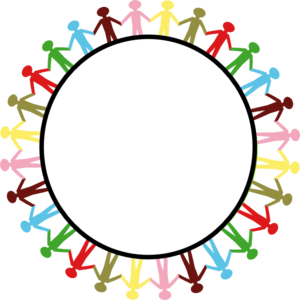 14 - Give me your energy 14 - Give me your energy The students stand in a circle. The teacher starts, pretending he/she is holding a ball on the hands and passing it to the student on his/her right; this one do the same, until the ball comes back to the teacher. The ball needs to be passed in a gentle way, as it is very precious. At the second round, the teacher passes the ball to students in another side of the circle, making a gesture and a noise. The students will do the same until everyone will have touched the ball at least once. The ball can be passed in any way (in form of kick, kiss…), pretending it becomes bigger or smaller depending on the will of the students. | |
| Relaxing Exercises |  15 - Moving like a toy 15 - Moving like a toy The teacher uses a magic word to change the students into many string-loaded (wind-up) toys. At the teacher’s signal, the toys start to move across the class, as many robots, to get their sits. They have to move more quickly at the beginning and then gradually more and more slowly, because their charge is finishing. Some of them will be frozen in the middle of the room, and the teacher has to give their cranks one more turn to help them reach their seats | |
| Relaxing Exercises | 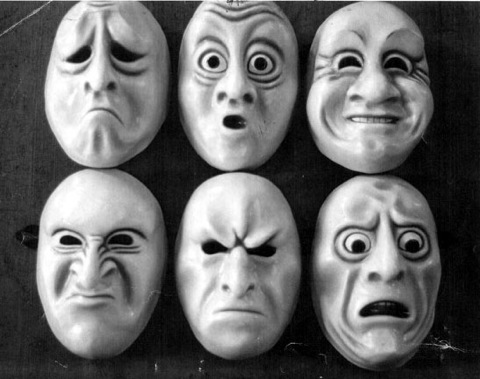 16 - Pass the face 16 - Pass the face It is like the game "telephone" but instead of passing a word or sentence around the group, participants pass a facial expression. | |
| Relaxing Exercises | 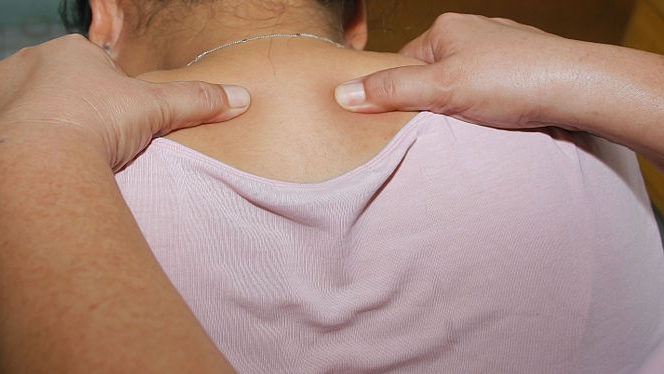 17 - Circle massage 17 - Circle massage The group forms a circle and faces one direction. Each participant places his/her hands on the shoulders of the person in front of her/him. Each person then gives the person who is in front a shoulder massage. The person being massaged can give a feedback. After a few minutes, the group turns the other way so that the person who has been making the massage is then receiving it in return. | |
| 31 | |||||||||||||||||||||||||||||||||||||||||||||||||||||||||||||||||||||||||||||||||||||||||||||||||||||||||||||||||||||||||||||||||||||||||||||||||||||||||||||||||||||||||||||||||||||||||||||||||||||||||||||||||||||||||||||||||||||||||||||||||||||||||||||||||||||||||||||||||||||||||||||||||||||||||||||||||||||||||||||||||||||||||||||||||||||||||||||||||||||||||||||||||||||||||||||||||||||||||||||||||||||||||||||||||||||||||||||||||||||||||||||||||||||||||||||||||||||||||||||||||||||||||||||||||||||||||||||||||||||||||||||||||||||||||||||||||||||||||||||||||||||||||||||||||||||||||||||||||||||||||||||||||||||||||||||||||||||||||||||||||||||||||||||||||||||||||||||||||||||||||||||||||||||||||||||||||||||||||||||||||||||||||||||||||||||||||||||||||||||||||||||||||||||||||||||||||||||||||||||||||||||||||||||||||||||||||||||||||||||||||||||||||||||||||||||||||||||||||||||||||||||||||||||||||||||||||||||||||||||||||||||||||||||||||||||||||||||||||||||||||||||||||||||||||||||||||||||||||||||||
 | |||||||||||||||||||||||||||||||||||||||||||||||||||||||||||||||||||||||||||||||||||||||||||||||||||||||||||||||||||||||||||||||||||||||||||||||||||||||||||||||||||||||||||||||||||||||||||||||||||||||||||||||||||||||||||||||||||||||||||||||||||||||||||||||||||||||||||||||||||||||||||||||||||||||||||||||||||||||||||||||||||||||||||||||||||||||||||||||||||||||||||||||||||||||||||||||||||||||||||||||||||||||||||||||||||||||||||||||||||||||||||||||||||||||||||||||||||||||||||||||||||||||||||||||||||||||||||||||||||||||||||||||||||||||||||||||||||||||||||||||||||||||||||||||||||||||||||||||||||||||||||||||||||||||||||||||||||||||||||||||||||||||||||||||||||||||||||||||||||||||||||||||||||||||||||||||||||||||||||||||||||||||||||||||||||||||||||||||||||||||||||||||||||||||||||||||||||||||||||||||||||||||||||||||||||||||||||||||||||||||||||||||||||||||||||||||||||||||||||||||||||||||||||||||||||||||||||||||||||||||||||||||||||||||||||||||||||||||||||||||||||||||||||||||||||||||||||||||||||||||
| Relaxing Exercises |  18 - Making room 18 - Making room Participants are asked to raise their arms with palms facing up, imagining that they are pushing up the ceiling and are asked do a lot of strength in that direction to increase the space of the room where they are. Then they are asked to turn the arms down with palms facing down thinking that they are pushing down the floor. They are asked to push away the walls turning their left arm and palm to the wall on their left and their right arm and palm to the wall that’s on their right. | |
| Relaxing Exercises | 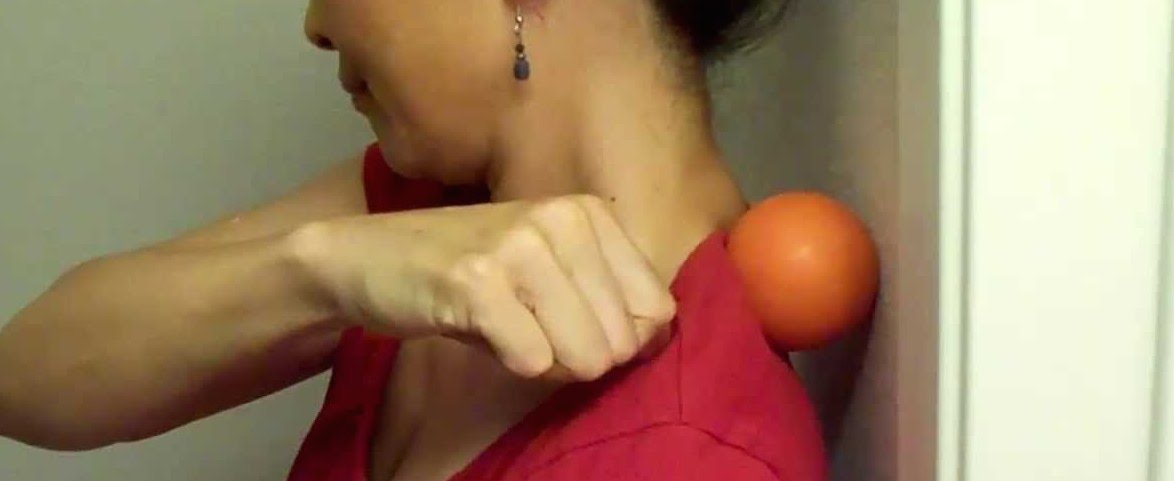 19 - Massage ball 19 - Massage ball One ball is given to each participant and, following the rhythm of a soft music, they place the ball between their back and a wall. They bend their knees slightly to relax the legs and better place their back. Then they move their body from top to bottom and from right to left and vice versa, moving the ball around their back. When making movements of their body, they will notice some more tense (and sometimes painful) spots. When they notice this they should stop and stay quiet keeping their back against the wall, making the desired pressure and holding for a while. Variation: Do not use the wall. Participants work in pairs and one holds 1 or 2 balls in their hands and makes the massage to the other and then they switch. | |
| Relaxing Exercises | 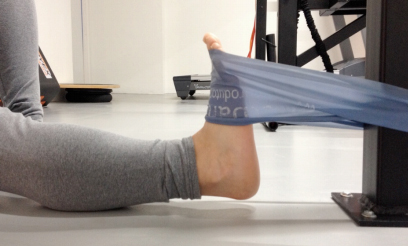 20 - Holding legs 20 - Holding legs Participants work in pairs. And you can put a quiet and relaxing music (or sounds like water falling down, sea waves, etc.). Half of the participants are asked to lie down face up, eyes closed, with their left leg extended on the floor and their right leg elevated. Another participant stands up and loops a towel around the heel of the other’s right foot and holds the ends of the towel in his/her hands, and makes soft and gentle movements (upwards and downwards, and sidewards) while the other totally relaxes his/her leg. Then they repeat the same process with the left leg. Then the participants switch roles. | |
| 32 | |||
 | |||
| Activities
|  | ||
| 33 | ||
 | ||
| Human Rights - Children's Rights
| ||
| 34 | ||||||||||||||||||||||||||||||||||||||
 | ||||||||||||||||||||||||||||||||||||||
| 1 | 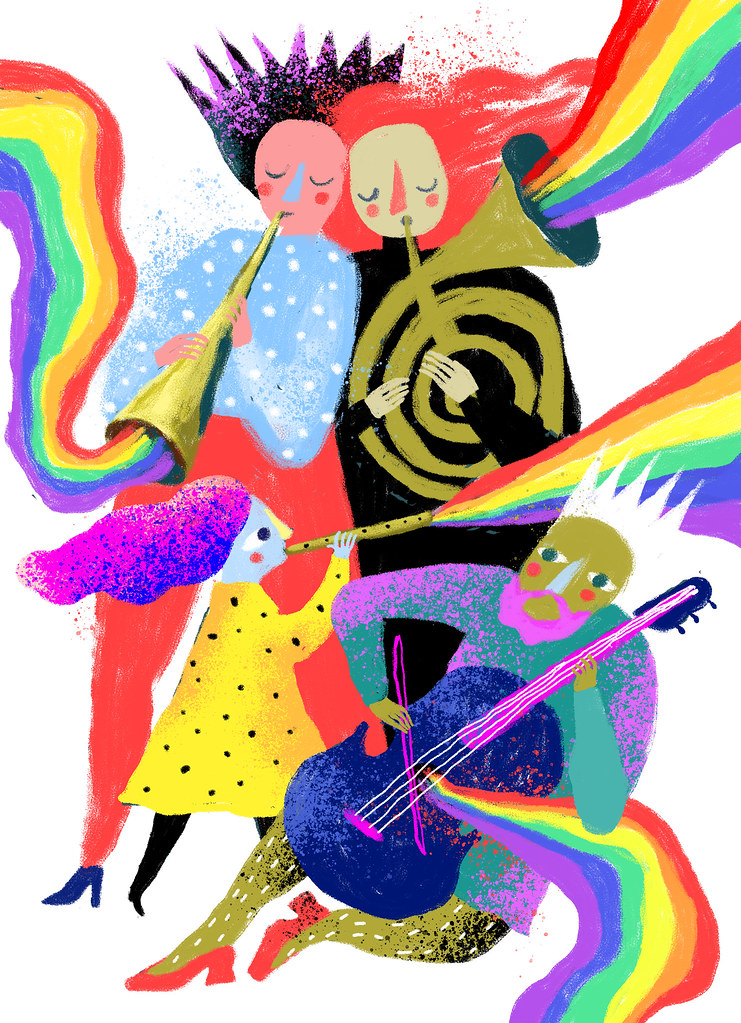 Human Rights – Children’s Rights / Freedom from discrimination Human Rights – Children’s Rights / Freedom from discrimination | |||||||||||||||||||||||||||||||||||||
| Developed by | AENAO | |||||||||||||||||||||||||||||||||||||
| Duration | 65 | |||||||||||||||||||||||||||||||||||||
| Energizers |  8 - Find another seat: 8 - Find another seat: Have the students sit on chairs in a circle, with the number of chairs being one less than the number of students. The student without a chair stands in the middle and tells their name. Then the student calls out a characteristic or a colour, or type of clothing, e.g. “Everyone wearing orange!”. All participants who are wearing orange must get up and find another seat, but not the one immediately to their right or left. The student in the middle races to find a seat and the person left standing becomes the next caller in the middle. | |||||||||||||||||||||||||||||||||||||
| Relaxing Exercises |  1 - Guided fantasy 1 - Guided fantasy Students are asked to close their eyes (if comfortable) and, with the guidance of the facilitator, slowly imagine a scene of the past or future event. More and more details are used to describe the event with all senses and thoughts. A suggested brief script could be à Begin by breathing slowly and deeply… Think of yourself in a place where you feel relaxed and at ease… Create all the details in your mind, what do you see… what the sounds are like, the smells and colors of this special place… Are there any people …? | |||||||||||||||||||||||||||||||||||||
| Objectives |
| |||||||||||||||||||||||||||||||||||||
| Preparation | Materials Computers, whiteboard/flipchart, markers, Projector (optional) | |||||||||||||||||||||||||||||||||||||
| Introduction | According to Article 2 of the Convention on the Rights of the Child, every child shall be protected against all forms of discrimination including his or her parent's or legal guardian's race, colour, sex, language, religion, political or other opinion, national, ethnic or social origin, property, disability, birth or other status. “No one is born hating another person because of the color of his skin, or his background or his religion. People learn to hate, and if they can learn to hate, they can be taught to love, for love comes more naturally to the human heart than its opposite.” Nelson Mandela | |||||||||||||||||||||||||||||||||||||
| Methodology | NFE Tool Quiz, Discussion, Brainstorming, Word Search Puzzle, Movie Introduction Step: Students watch the introductory video of Children's Rights prior to the activity HR_Intro.
Note: The quiz is given in the animated movie, and in a separate link HR1 - L.A. Trip Quiz
- Those that had resulted in a negative result and therefore “lost” the trip to L.A. how do they feel as “discrimination” victims. How do they feel that they do not meet the criteria of the quiz (which are of course arbitrary). - Those that had resulted in a positive result and therefore “won” the trip to L.A. how do they feel that are “favored” among their peers. How do they feel that they meet the criteria of the quiz (which are again arbitrary). Other questions / concerns could be: if the students feel injustice with this test, if there is something to be done in order to minimise this injustice. (10’)
Tip: The puzzle can be completed either by each student or the teacher can show it on a projector and students can search for the words all together. (5’)
| |||||||||||||||||||||||||||||||||||||
| Reflection | Optional (see Notes below) | |||||||||||||||||||||||||||||||||||||
| Notes | Since there is discussion in the plenary right after the two DT’s (quiz and movie), it is not necessary for the teacher to do a reflection - it is optional. Reflection could include a summary of the discussions and the brainstorming. | |||||||||||||||||||||||||||||||||||||
| Digital Resource | ||||||||||||||||||||||||||||||||||||||
| 35 | ||||||||||||||||||||||||||||||||||||||
 | ||||||||||||||||||||||||||||||||||||||
| 2 |  Human Rights – Children’s Rights / The right to life, liberty and personal security Human Rights – Children’s Rights / The right to life, liberty and personal security | |||||||||||||||||||||||||||||||||||||
| Developed by | PROSVETA | |||||||||||||||||||||||||||||||||||||
| Duration | 60 | |||||||||||||||||||||||||||||||||||||
| Energizers |  6 - Keep walking 6 - Keep walking The teacher instructs the students to walk in different manners covering the whole rook, i.e. walk like you are very happy, walk like a very heavy elephant, walk like you are 80 years old, walk like it’s raining cats and dogs, walk like a toddler, etc. | |||||||||||||||||||||||||||||||||||||
| Relaxing Exercises |  1 - Guided fantasy 1 - Guided fantasy Students are asked to close their eyes (if comfortable) and, with the guidance of the facilitator, slowly imagine a scene of the past or future event. More and more details are used to describe the event with all senses and thoughts. A suggested brief script could be à Begin by breathing slowly and deeply… Think of yourself in a place where you feel relaxed and at ease… Create all the details in your mind, what do you see… what the sounds are like, the smells and colors of this special place… Are there any people …? | |||||||||||||||||||||||||||||||||||||
| Objectives | Students will:
| |||||||||||||||||||||||||||||||||||||
| Preparation | Suggested reading: Required equipment: projector and laptop | |||||||||||||||||||||||||||||||||||||
| Introduction | All children have the right to life. After they are born, adults take care of them to grow up. They protect them and help them feel safe and secure. To introduce the topic, use the experience of the children by asking them to share situations in which they felt protected; when others helped them survive or deal with the difficulties in their lives. If this is your first activity from module "Human rights - Children's rights", first play the introductory video to get students in the topic. 5' | |||||||||||||||||||||||||||||||||||||
| Methodology | NFE Tool: game, brainstorming
Round 1:Students are asked to stand tightly in a circle next to each other. One student is out of the circle and tries to get into it, but the others don't let him in. Round 2: Another student goes outside the circle and tries to persuade the students from the circle to let him go in. Round 3: A student is in the circle, squatting; all the others are clustered tightly around him. He tries to stand up and make the others let him have more space around him, but they stand very close to him and do not allow him to have more space and move freely around. The game can be played several times (all the rounds) so that more students may feel what it is like to be restricted (threatened) or be part of a big group restricting somebody. The game is a practical way to help student feel what it is like to have your liberty restricted and feel threatened and insecure. 15’ 3. Discussion: after the game students start the reflection through questions asking them to think how they felt in the different roles; why it is important to respect the right to liberty and free life of others. 5’ 4. Play the video (HR2_2). 5’ 5. Based on what you have seen in the video, summarize what adults and states do to guarantee the right to life, liberty and security of children. 5’ | |||||||||||||||||||||||||||||||||||||
| Reflection | Suggested questions to stimulate reflection: 5' - How did it feel when you weren't allowed in the circle? - How did it feel when you had to stop your classmates from enetering the circle? - When was it easier for you – when being in or out of the circle? | |||||||||||||||||||||||||||||||||||||
| Notes | The role-playing game (activity 2) stimulates the understanding of children's right to life, liberty and personal security at a sensory level. HR2_2 https://www.youtube.com/watch?v=qtUdWJZ__ms is a video clip created by the Council of Europe as a Creative Commons resourse to be used in schools. | |||||||||||||||||||||||||||||||||||||
| Digital Resource | HR2_1 presentation yesii.eu/atividades/digital/2/HR2_1-associations.pps HR2_2 - video www.youtube.com/watch?v=qtUdWJZ__ms | |||||||||||||||||||||||||||||||||||||
| 36 | ||||||||||||||||||||||||||||||||||||||
 | ||||||||||||||||||||||||||||||||||||||
| 3 |  Human Rights – Children’s Rights / The right to opinion and expression Human Rights – Children’s Rights / The right to opinion and expression | |||||||||||||||||||||||||||||||||||||
| Developed by | PROSVETA | |||||||||||||||||||||||||||||||||||||
| Duration | 60 | |||||||||||||||||||||||||||||||||||||
| Energizers |  1 - Break the Circle 1 - Break the Circle The teacher assigns randomly a number to each student, depending on the group size, i.e. for 20 students, numbers 1-4 are ok, so each group has 5 people (groups could be synthesized by the students with the same number, i.e. all having been assigned number ‘1’ or by students where each one has his/her own unique number 1-4; similarly and more fun is grouping by ingredient for a Greek salad, where every student is i.e. ‘tomato’, ‘cucumber’, ‘onion’, ‘oregano’, etc.) Once the groups have been formed, they make circles and the teacher randomly picks a number (or an ingredient) to step out of the circle and try to break in, while the others remaining are instructed to not let go of their hands no matter what. This can be repeated once more with another number stepping out. | |||||||||||||||||||||||||||||||||||||
| Relaxing Exercises |  5 - Use a word that describes their feelings/thoughts 5 - Use a word that describes their feelings/thoughts Students are asked to close their eyes (if comfortable) for a minute and think of a word that describes their feelings/thoughts after finishing the resource. Then the students open their eyes and one by one say their word to the classroom | |||||||||||||||||||||||||||||||||||||
| Objectives | Students will become:
| |||||||||||||||||||||||||||||||||||||
| Preparation | Suggested reading:
Required equipment: projector and laptop Required materials: coloured pencils or markers, drawing paper Digital resources: download the presentation before the lesson | |||||||||||||||||||||||||||||||||||||
| Introduction | Children have the right to express their opinion. They should feel free to seek and receive information when it does not harm them or others. Adults must ensure that the child’s voice is heard when they want to share what they think or need. The child has the right to participate in discussing and decision-making concerning them. The child may require to be involved in situations when adults are sharing information relevant to them. If this is your first activity from module "Human rights - Children's rights", first paly the introductory video to get students in the topic. 5' | |||||||||||||||||||||||||||||||||||||
| Methodology | NFE Tool (artistic work)
- The right of children to receive information that relates to them - about how they will be treated, what nutrition guidelines they are given by specialists. Explain to children that adults should not scare children with the information - e.g. scare them with doctors, medical examinations, diets, etc., but explain to them what is happening in an understandable way. - The right to choose their friends - The right of children to come up with ideas - The right to express an opinion and to share how they feel 15’ 3. Have a short discussion about what children want to say to others if they are given the opportunity to be heard by more people. 5’ 4. Organize students individually or in groups to do their own project on the topic “My Dream” as set out in the final slide of the presentation. Let them feel free to choose how to express their dream. They can draw or write what they dream of and what they would like to say/ do in the world in the future. They can also express their idea with a dance or song. Organize presentations of all projects in class. 20’ | |||||||||||||||||||||||||||||||||||||
| Reflection | For reflection and a summary of the topic, ask the following questions: 5' - How did you feel when you presented your project and shared your dream? - Is it good to be given the floor and and have others listen to you? - Is your voice heard at home? Related to what questions? - What about in school? | |||||||||||||||||||||||||||||||||||||
| Notes | ||||||||||||||||||||||||||||||||||||||
| Digital Resource | HR3_1 - presentation yesii.eu/atividades/digital/3/HR3_1_EN.ppsx | |||||||||||||||||||||||||||||||||||||
| 37 | ||||||||||||||||||||||||||||||||||||||
 | ||||||||||||||||||||||||||||||||||||||
| 4 |  Human Rights – Children’s Rights / The right to conscience and religion Human Rights – Children’s Rights / The right to conscience and religion | |||||||||||||||||||||||||||||||||||||
| Developed by | PROSVETA | |||||||||||||||||||||||||||||||||||||
| Duration | 60 | |||||||||||||||||||||||||||||||||||||
| Energizers |  4 - Human chain 4 - Human chain Everybody stands up in a circle. They close their eyes and start moving towards the middle of the circle, holding their hands up. Whoever they touch with their hands, they hold and do not let go, so they make a knot. Then the facilitator asks the students to open their eyes and try to untangle themselves (make a circle) without letting go of their hands. | |||||||||||||||||||||||||||||||||||||
| Relaxing Exercises |  4 - Visualization using color/soothing sound 4 - Visualization using color/soothing sound Facilitator asks the students to imagine a favorite color that makes them feel peaceful and safe. They keep their imagine taking in that color with each breath and sending it throughout their entire body as they exhale. They continue until they visualize being filled with their special, relaxing color. The same exercise can be performed using soothing sound or aroma. Also, it is more effective if relaxing music is used. Kelly Roper | |||||||||||||||||||||||||||||||||||||
| Objectives |
| |||||||||||||||||||||||||||||||||||||
| Preparation | Required materials: markers or coloured pencils; cutouts from old magazines Required equipment: projector and laptop Suggested reading: | |||||||||||||||||||||||||||||||||||||
| Introduction | People are different not only in appearance. They like different things in the world around them, they believe in different things. Children, like adults, have the right to choose what to believe in. No one may prevent them from participating in different holidays and customs according to their religion. But they must also respect the right of others to believe in something of their choice. If this is your first activity from module "Human rights - Children's rights", first play the introductory video to get students in the topic. 5' | |||||||||||||||||||||||||||||||||||||
| Methodology | NFE Tools: discussion, group work, mind map
| |||||||||||||||||||||||||||||||||||||
| Reflection | The lesson concludes with summarizing questions: 5'
| |||||||||||||||||||||||||||||||||||||
| Notes | The video https://www.youthforhumanrights.ie/course/lesson/articles-12-18/watch-human-right-18-freedom-of-thought.html was created by the nongovernment organization "United for Human Rights/Youth for Human Rights International" as a resource to be used in Active Citizenship training activities. | |||||||||||||||||||||||||||||||||||||
| Digital Resource | HR4 - video yesii.eu/atividades/videos/4_HR4-EN.mp4 HR4_2 - handout yesii.eu/atividades/pdf/4_HR4_2-handout-EN.pdf | |||||||||||||||||||||||||||||||||||||
| 38 | ||||||||||||||||||||||||||||||||||||||
 | ||||||||||||||||||||||||||||||||||||||
| 5 |  Human Rights – Children’s Rights / The right to privacy Human Rights – Children’s Rights / The right to privacy | |||||||||||||||||||||||||||||||||||||
| Developed by | AENAO | |||||||||||||||||||||||||||||||||||||
| Duration | 50 | |||||||||||||||||||||||||||||||||||||
| Energizers |  16 - Back to back 16 - Back to back Participants find a pair of similar size and weight. They sit on the floor, back to back with their pair. They hold their arms. They have to get up, while keeping the arms and backs together. After trying once-twice with their pair they switch pairs. They can repeat this process with other pairs for a few times. | |||||||||||||||||||||||||||||||||||||
| Relaxing Exercises |  4 - Visualization using color/soothing sound 4 - Visualization using color/soothing sound Facilitator asks the students to imagine a favorite color that makes them feel peaceful and safe. They keep their imagine taking in that color with each breath and sending it throughout their entire body as they exhale. They continue until they visualize being filled with their special, relaxing color. The same exercise can be performed using soothing sound or aroma. Also, it is more effective if relaxing music is used. Kelly Roper | |||||||||||||||||||||||||||||||||||||
| Objectives |
| |||||||||||||||||||||||||||||||||||||
| Preparation | Suggested Reading CHILDRENS ONLINE PRIVACY AND FREEDOM OF EXPRESSION, pg 8 Materials Printed HR5_diary | |||||||||||||||||||||||||||||||||||||
| Introduction | According to Article 16 of the Convention on the Rights of the Child , the right to privacy is related to the the child’s self, family, home, correspondence, honour and reputation. The child has the right to the protection of the law against such interference or attacks. There are many dimensions of privacy and how it can be exposed and / or protected. This exercise focuses on the protection of privacy online - which is a major issue of the recent years - and the protection of one’s privacy. | |||||||||||||||||||||||||||||||||||||
| Methodology | NFE Tool Case study, team work Introduction Step: Students watch the introductory video of Children's Rights prior to the activity HR_Intro. (5')
The first group is assigned to respect Julia’s privacy, whereas the second group is asked not to respect her privacy. Tip: if students have difficulty understanding the difference between respecting and not respecting one’s privacy, then teacher briefly explains the following: In group 1, students who find the diary respect that what is written is private. In group 2, the students do not care about exposing Julia to other classmates, because they do not care about privacy. (10')
| |||||||||||||||||||||||||||||||||||||
| Reflection | Teacher asks students in the plenary:
| |||||||||||||||||||||||||||||||||||||
| Notes | Optional: Teacher can play at the end of the session the following video to older class students (i.e. 11-12 year old students) and discuss about the risks of publishing personal details online | |||||||||||||||||||||||||||||||||||||
| Digital Resource |
Case study - Diary Smart Tom - video | |||||||||||||||||||||||||||||||||||||
| 39 | ||||||||||||||||||||||||||||||||||||||
 | ||||||||||||||||||||||||||||||||||||||
| 6 | 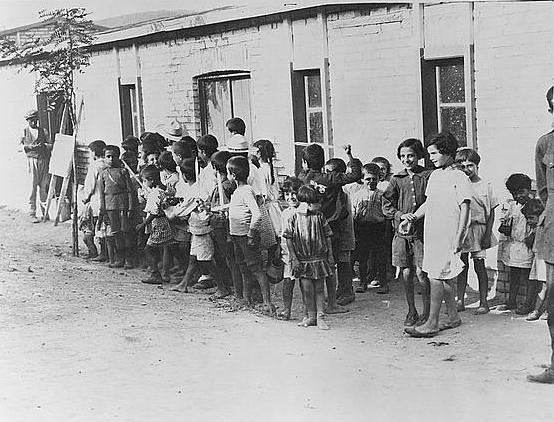 Human Rights – Children’s Rights / The right of refugee children Human Rights – Children’s Rights / The right of refugee children | |||||||||||||||||||||||||||||||||||||
| Developed by | AENAO | |||||||||||||||||||||||||||||||||||||
| Duration | 60 | |||||||||||||||||||||||||||||||||||||
| Energizers |  5 - Good morning or evening 5 - Good morning or evening Everybody walks around the room greeting each other (as if everybody was their close friends) using words and gestures (shake hand, kiss, hug). Then they repeat the greeting in silence using only their eyes. When the exercise is over, the teacher asks students how did they feel with the two different ways of greeting (eg was it difficult, how did they manage to communicate, etc). | |||||||||||||||||||||||||||||||||||||
| Relaxing Exercises |  8 - Seasons of the year 8 - Seasons of the year All players sit in a circle, but not too close to one another. The teacher moves like a plant during the seasons of the year. Winter: the plants are small, weak and are crunched together on the ground. Spring: through the stronger sunshine, the plants grow slowly and slowly rise. Summer: through the warm sun, the plants slowly open their arms, the flowers open their blooms are stand up straight. Autumn: the sun rays become weaker. The plants begin to slowly shrivel, the blooms and leaves begin to fall away. | |||||||||||||||||||||||||||||||||||||
| Objectives |
| |||||||||||||||||||||||||||||||||||||
| Preparation |
Refugee and migrant children in Europe
Whiteboard/blackboard, markers in different colours, big cartons/flipcharts | |||||||||||||||||||||||||||||||||||||
| Introduction | According to Article 22 of the Convention on the Rights of the Child, a child who is considered a refugee or seeking refugee status, whether accompanied or unaccompanied by a parent of another person, has the right to receive appropriate protection and humanitarian assistance. | |||||||||||||||||||||||||||||||||||||
| Methodology | NFE Tool Brainstorming, team work, artistic creation Introduction Step: Students watch the introductory video of Children's Rights prior to the activity HR_Intro. (5')
* Note: teacher should assist students to think about the following:
After reflection, teacher shows the video HR6 - Refugee Children. (5') | |||||||||||||||||||||||||||||||||||||
| Reflection | Teacher asks students in the plenary: Do you think that these pictures represent also every student in this school? if not, what should be different? Was it difficult to think about the situation of a refugee child? (5’) | |||||||||||||||||||||||||||||||||||||
| Notes | ||||||||||||||||||||||||||||||||||||||
| Digital Resource | ||||||||||||||||||||||||||||||||||||||
| 40 | ||||||||||||||||||||||||||||||||||||||
 | ||||||||||||||||||||||||||||||||||||||
| 7 | 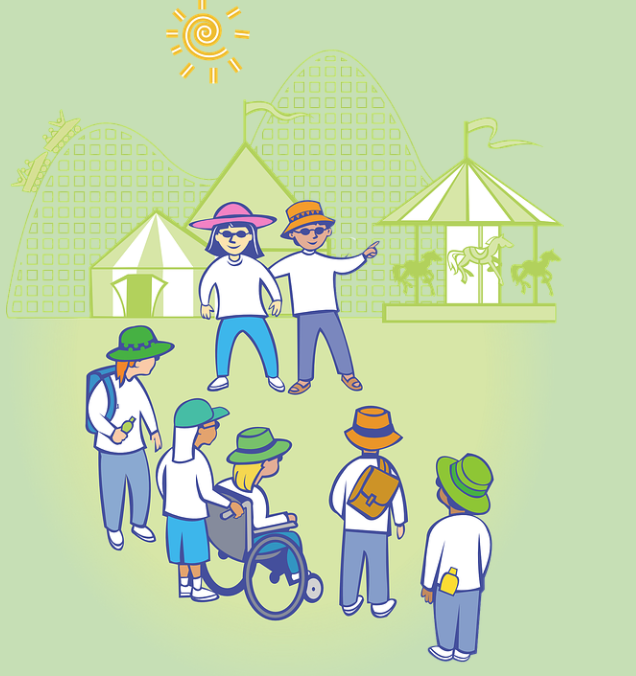 Human Rights – Children’s Rights / The rights of disabled children Human Rights – Children’s Rights / The rights of disabled children | |||||||||||||||||||||||||||||||||||||
| Developed by | IPSantarém: Bento Cavadas | Ana Torres | Maurício | |||||||||||||||||||||||||||||||||||||
| Duration | 60 | |||||||||||||||||||||||||||||||||||||
| Energizers |  14 - I am going on a trip 14 - I am going on a trip Everyone sits in a circle. Start by saying “I’m going on a trip and I’m taking a hug”, and hug the person to your right. That person then has to say “I’m going on a trip and I’m taking a hug and a pat on the back”, and then give the person on their right a hug and a pat on the back. Each person repeats what has been said and adds a new action to the list. Go round the circle until everyone has had a turn. | |||||||||||||||||||||||||||||||||||||
| Relaxing Exercises |  1 - Guided fantasy 1 - Guided fantasy Students are asked to close their eyes (if comfortable) and, with the guidance of the facilitator, slowly imagine a scene of the past or future event. More and more details are used to describe the event with all senses and thoughts. A suggested brief script could be à Begin by breathing slowly and deeply… Think of yourself in a place where you feel relaxed and at ease… Create all the details in your mind, what do you see… what the sounds are like, the smells and colors of this special place… Are there any people …? | |||||||||||||||||||||||||||||||||||||
| Objectives | Students will learn:
| |||||||||||||||||||||||||||||||||||||
| Preparation | Suggested pedagogical resources: SDG Resources for educators | SDG 10 - Reduced inequalities | |||||||||||||||||||||||||||||||||||||
| Introduction | In Convention of the Rights of the Child, article 23 states the right do disabel children had a full and grateful life. They have the right to special care and assistance. States should provide education, training, health care services, rehabilitation services, preparation for employment and recreation opportunities adequate for disable children. The UNESCO SDG10 is dedicated to Reduce Inequalities. According to UNESCO', to achieve SDG10 specific objectives, the link between education and the reduction of inequalities should be explored. Students should learn to express views on why a particular inequality is negative and develop solutions for reversing this kind of situations, while respecting diversity and the choices of others.
5' | |||||||||||||||||||||||||||||||||||||
| Methodology | NFE Tool : Team work with discussion
DT: video | |||||||||||||||||||||||||||||||||||||
| Reflection | Teachers should promote a discussion with all students about the video content. Questions to be asked:
5' | |||||||||||||||||||||||||||||||||||||
| Notes | The Disability and Child Protection | UNICEF video does not need subtitles. | |||||||||||||||||||||||||||||||||||||
| Digital Resource | Disability and Child Protection | UNICEF video UNICEF Children's Rights video. | |||||||||||||||||||||||||||||||||||||
| 41 | ||||||||||||||||||||||||||||||||||||||
 | ||||||||||||||||||||||||||||||||||||||
| 8 |  Human Rights – Children’s Rights / The right to social care and health Human Rights – Children’s Rights / The right to social care and health | |||||||||||||||||||||||||||||||||||||
| Developed by | AENAO | |||||||||||||||||||||||||||||||||||||
| Duration | 45 | |||||||||||||||||||||||||||||||||||||
| Energizers |  12 - Body spelling 12 - Body spelling Teacher asks students to write their name in the air using different parts of their body, for example with the hand/leg/elbow/nose. Optional: If time allows teacher asks to the class to spell out some words reproducing the letters with their bodies. Students can collaborate all together or can create different groups. | |||||||||||||||||||||||||||||||||||||
| Relaxing Exercises |  2 - Progressive muscle relaxation 2 - Progressive muscle relaxation To release tension from head to toe, students are asked to close their eyes (if comfortable) and focus on tensing and relaxing each muscle group for two to three seconds each. The teacher guides the students; he/she asks them to start with the feet and toes, then move up to the knees, thighs, rumps, chest, arms, hands, neck, jaw, and eyes—all while maintaining deep, slow breaths. Kelly Roper | |||||||||||||||||||||||||||||||||||||
| Objectives | - Raise awareness that health is a fundamental human right. - Become aware why access to social care and health is very important to everyone. | |||||||||||||||||||||||||||||||||||||
| Preparation | - Suggested Reading - Materials Printed Case Study HR8_The Story of Daisy | |||||||||||||||||||||||||||||||||||||
| Introduction | Health is the state of physical, mental and social well-being and does not only mean an absence of illness or disease. The right to health is closely linked to other fundamental human rights, most notably access to potable water and adequate hygiene. The right to health includes access to health services.
| |||||||||||||||||||||||||||||||||||||
| Methodology | NFE Tool Case Study, Team Work Introduction Step: Students watch the introductory video of Children's Rights prior to the activity HR_Intro. (5') 1. Teacher divides students in two groups and provides the Case Study HR8_The Story of Daisy. Both groups are requested to read the case study and continue the story. Group 1: Daisy has access to social care and health. What can be done?Group 2: Daisy does not have access to social care and health. Are there any alternatives? (10’) 2. Teacher asks students to think about Daisy and what would happen to her health condition, depending on the group that they are. Once they decide, they need to present their thoughts in the plenary. (10’) 3. After reflection, teacher shows the video HR8 - Spiderman and discuss with students the importance of access to social care and health. (5’) | |||||||||||||||||||||||||||||||||||||
| Reflection | Teacher asks students in the plenary: - What do you think about the right to social care and health? Is it important? - Was it difficult to find alternatives for someone like Daisy who does not have access to social care and health? (5’) | |||||||||||||||||||||||||||||||||||||
| Notes | - | |||||||||||||||||||||||||||||||||||||
| Digital Resource |
Case study - The story of Daisy Spiderman - video | |||||||||||||||||||||||||||||||||||||
| 42 | ||||||||||||||||||||||||||||||||||||||
 | ||||||||||||||||||||||||||||||||||||||
| 9 | 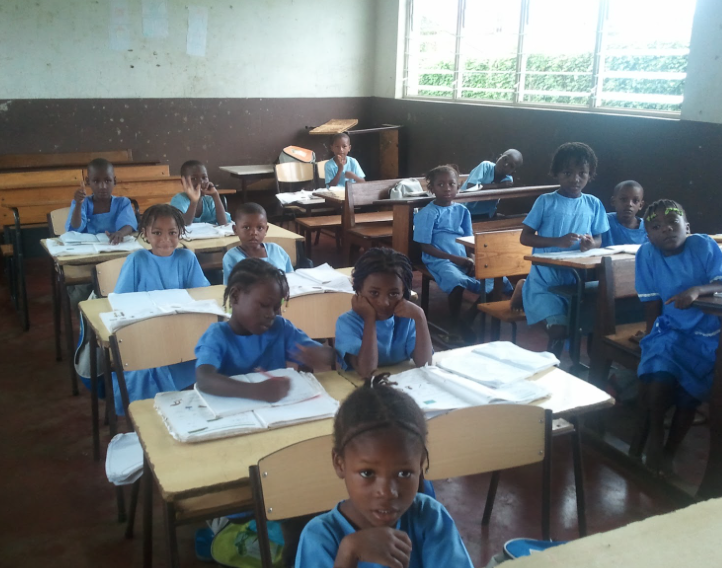 Human Rights – Children’s Rights / The right to education Human Rights – Children’s Rights / The right to education | |||||||||||||||||||||||||||||||||||||
| Developed by | IPSantarém: Bento Cavadas | Ana Torres | Maurício | |||||||||||||||||||||||||||||||||||||
| Duration | 60 | |||||||||||||||||||||||||||||||||||||
| Energizers |  12 - Body spelling 12 - Body spelling Teacher asks students to write their name in the air using different parts of their body, for example with the hand/leg/elbow/nose. Optional: If time allows teacher asks to the class to spell out some words reproducing the letters with their bodies. Students can collaborate all together or can create different groups. | |||||||||||||||||||||||||||||||||||||
| Relaxing Exercises |  5 - Use a word that describes their feelings/thoughts 5 - Use a word that describes their feelings/thoughts Students are asked to close their eyes (if comfortable) for a minute and think of a word that describes their feelings/thoughts after finishing the resource. Then the students open their eyes and one by one say their word to the classroom | |||||||||||||||||||||||||||||||||||||
| Objectives | Students will learn:
| |||||||||||||||||||||||||||||||||||||
| Preparation | Suggested pedagogical resources: SDG Resources for educators | SDG4 - Quality education https://en.unesco.org/themes/education/sdgs/material/04 Convention of the Rights of the Child https://www.ohchr.org/en/professionalinterest/pages/crc.aspx | |||||||||||||||||||||||||||||||||||||
| Introduction | In Convention of the Rights of the Child, the word “education” and derived words occur several times. The word “teaching” occurs only twice. It is important to distinguish teaching and education because human beings can learn without being taught. The articles 28 and 29 of that Convention have a focus on providing equal opportunities in education for all and in the global development of the child, with respect of childrens’ parents and context. The UNESCO SDG4 is dedicated to Quality Education and aims to ensure education for all. According UNESCO’ SDG4 specific objectives “include providing more opportunities for technical and vocational training to youth and adults so they can get better jobs; ending inequality in educational opportunities between men and women; providing the right education for children with disabilities, indigenous people and victims of conflict; improving school facilities to provide a safe and positive environment for everyone; increasing the number of trained and qualified teachers and promoting education for sustainable development”.
| |||||||||||||||||||||||||||||||||||||
| Methodology | NFE Tool : Team work with discussion Introduction Step: Students watch the introductory video of Children's Rights prior to the activity HR_Intro.
DT: | |||||||||||||||||||||||||||||||||||||
| Reflection | Teachers should promote a discussion with all students about the video content. Questions to be asked:
10’ | |||||||||||||||||||||||||||||||||||||
| Notes | The 2 girls 2 lives video does not need subtitles. | |||||||||||||||||||||||||||||||||||||
| Digital Resource | 2 girls 2 lives video UNICEF Children's Rights video. | |||||||||||||||||||||||||||||||||||||
| 43 | ||||||||||||||||||||||||||||||||||||||
 | ||||||||||||||||||||||||||||||||||||||
| 10 | 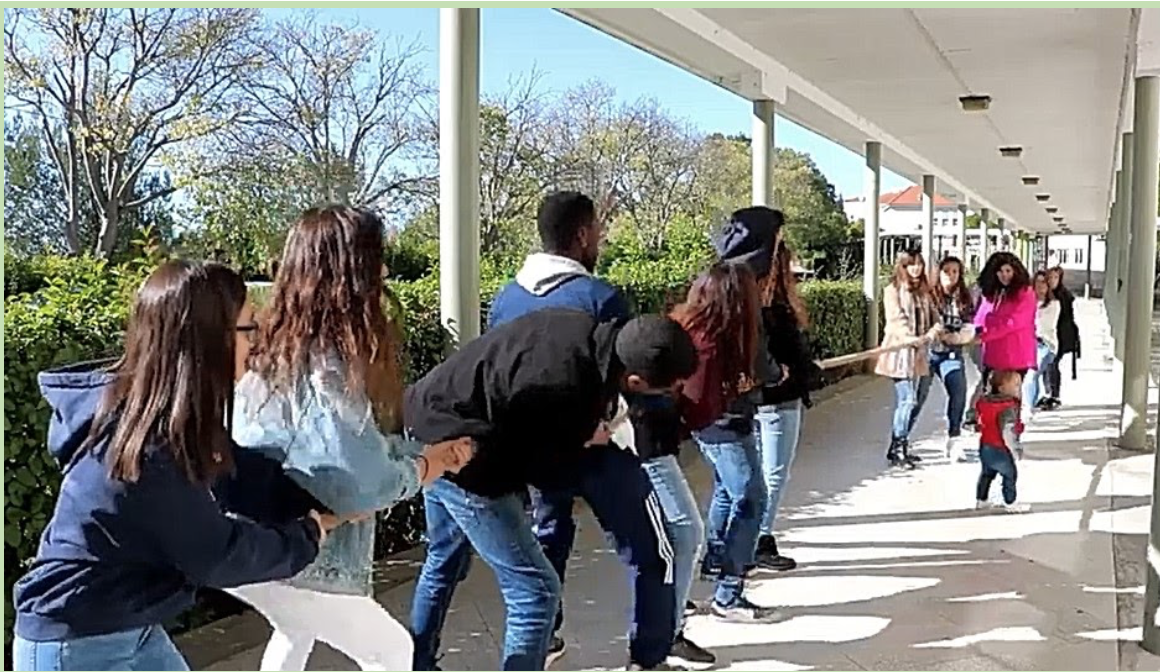 Human Rights – Children’s Rights / The right to rest and leisure, to play Human Rights – Children’s Rights / The right to rest and leisure, to play | |||||||||||||||||||||||||||||||||||||
| Developed by | IPSantarém: Ana Da Silva | Ana Torres | Maurício D | |||||||||||||||||||||||||||||||||||||
| Duration | 60 | |||||||||||||||||||||||||||||||||||||
| Energizers |  4 - Human chain 4 - Human chain Everybody stands up in a circle. They close their eyes and start moving towards the middle of the circle, holding their hands up. Whoever they touch with their hands, they hold and do not let go, so they make a knot. Then the facilitator asks the students to open their eyes and try to untangle themselves (make a circle) without letting go of their hands. | |||||||||||||||||||||||||||||||||||||
| Relaxing Exercises |  13 - Body massage 13 - Body massage The students stand in a circle: they need to follow all the movement the teacher does and massage themselves. The teacher starts to massage different parts of his/her body, starting from the head till the feet (it’s better if they take off their shoes). The teacher explains how the massage needs to be done, if delicate or more energetic. Optional: The teacher can also ask to the students to massage another classmate. | |||||||||||||||||||||||||||||||||||||
| Objectives |
| |||||||||||||||||||||||||||||||||||||
| Preparation | Material: one large and resistant rope Film on rope games: https://www.youtube.com/watch?v=RSdVBXdVI98&t=90s Competition game: Sea, Earth, Fire (Cf. movie at minute 0:22) Cooperation game: Caught inside the rope (See movie at 1:13 minute). | |||||||||||||||||||||||||||||||||||||
| Introduction | Children and youngsters have little time to play, given the demands of school schedules and tasks, and all kinds of after-school activities. However, the importance of play in their social, emotional and cognitive development is undeniable. Playing can be fun and enjoyable in many ways, but they are also a privileged means of knowing and reflecting on different cultural forms, exploring the world and better getting to know oneself. Traditional games represent and are associated with local cultures. However, there are universal playful patterns, the same traditional games being found in various regions, countries and corners of the world, although there may be differences in designations, rules and ways of playing. 5' | |||||||||||||||||||||||||||||||||||||
| Methodology | NFE Tool (Brainstorming and games) Introduction Step: Students watch the introductory video of Children's Rights prior to the activity HR_Intro.
Competition game: Sea, Earth, Fire 5' The rope must be perched on the floor in line. Play this game during 5 minutes (indoors or outdoors). Players line up along this line without stepping on it. At the beginning of the game, indicate which side of the line is the Sea and which is the Earth. The facilitator or a participant leads the group. The leader will say out loud the word "Sea", "Earth" or "Fire". If the leader says Sea, participants must jump with both feet to the side corresponding to the Sea. If the leader says Earth, they must jump to the side corresponding to Earth. If the leader says Fire, participants must have one foot on each side of the rope. The leader's commands do not follow any sequence. The same command can be given several times in a row. The leader tries to deceive players by saying several times the same command, by saying very different commands very quickly, by moving to the opposite side of the side where participants must jump, etc. Whenever a player makes a mistake, jumping the wrong way, or staying on the same side, instead of jumping, he/she leaves the game. Usually, the game ends when only one participant remains in the game, who will be the winner. In the specific activity, the winners are the participants who are still in the game at the end of 5'. Cooperation game: Caught inside the rope 5' Play this game during 5 minutes, indoors or outdoors. If you play it outdoors, you must draw a perimeter on the floor that players will not be allowed to cross. If it is played indoors, the room must have enough space for participants to run. 4 participants stand on the inside of the rope and stretch the rope at waist level, pulling to opposite sides so that it does not fall. They must keep the rope stretched. The rest of the participants are outside and will try not to get caught inside the rope. Holding the rope in their hands, they will try to coordinate their movements in order to try to catch the rest of the participants, lifting the rope to trap them inside the rope. 3. After experimenting both games, participants answer a digital matching game with definitions of rest, leisure, play, competition game and cooperation game. 5' | |||||||||||||||||||||||||||||||||||||
| Reflection | Ask the participants if they had already played these games and if they think that both cooperation and competition can contribute to rest, leisure and play, according to the ideas collected in the initial brainstorming. 5' | |||||||||||||||||||||||||||||||||||||
| Notes | ||||||||||||||||||||||||||||||||||||||
| Digital Resource | ||||||||||||||||||||||||||||||||||||||
| 44 | ||||||||||||||||||||||||||||||||||||||
 | ||||||||||||||||||||||||||||||||||||||
| 11 |  Human Rights – Children’s Rights / The right to work Human Rights – Children’s Rights / The right to work | |||||||||||||||||||||||||||||||||||||
| Developed by | PROSVETA | |||||||||||||||||||||||||||||||||||||
| Duration | 55 | |||||||||||||||||||||||||||||||||||||
| Energizers |  2 - Moo!!! 2 - Moo!!! The teacher assigns randomly in a piece of paper (turned upside down on their desks) each student with farm animal, i.e. ‘cow’, ‘horse’, ‘sheep’, ‘rooster’, etc. Once the students are informed of their animal role, they are instructed to walk around the room acting like the animal they are assigned (i.e. making its sound), in order to find their kind. | |||||||||||||||||||||||||||||||||||||
| Relaxing Exercises |  15 - Moving like a toy 15 - Moving like a toy The teacher uses a magic word to change the students into many string-loaded (wind-up) toys. At the teacher’s signal, the toys start to move across the class, as many robots, to get their sits. They have to move more quickly at the beginning and then gradually more and more slowly, because their charge is finishing. Some of them will be frozen in the middle of the room, and the teacher has to give their cranks one more turn to help them reach their seats | |||||||||||||||||||||||||||||||||||||
| Objectives |
| |||||||||||||||||||||||||||||||||||||
| Preparation | Suggested reading:
Required equipment: projector and laptop Required materials: printed voting cards HR11_2, scissors for the students to cut them on their own. Digital resources: HR11_1, HR11_3 Preparation: Print the voting cards from HR11_2 for each student. You can also do the exercise by dividing the children into groups. Give each group one set of two cards. | |||||||||||||||||||||||||||||||||||||
| Introduction | All people work. Children also work - they study, they help their parents in the family and this is very useful for them. However, sometimes it happens that children are forced to do hard work that can cause harm to them. States and adults protect children and do not allow they are induced to do something that is dangerous to them. Children also have the right to refuse to do hard and harmful work. Students watch the introductory video of Children's Rights prior to the activity HR_Intro. 5' | |||||||||||||||||||||||||||||||||||||
| Methodology | NFE Tools: Brainstorming, discussion. 1. Play the video (HR11_3) and comment briefly why the lion's "employer" changes his attitude - Is the lion entitled to good working conditions at the circus? (NFE tool: discussion) 5’ 2. Ask students to think of the different activiities children do. Is this work? (NFE tool: brainstorming) Record their answers on a flip chart or on the board in the classroom. After that, let them think and suggest, how you can group the activities children do. Examples: a. Activities at school - study, tidy the classroom, etc. b. Activities at home – household chores; taking care of a pet; c . Working with adults - in the garden; related to cares for livestock, etc. 5’ 3. Discuss with the students: When is it useful to work and what kind of work can harm children? Accept all ideas. Let everybody come up with an example or opinion. 5’ 4. Use the photos in the video (HR11_1). Firstly, show photos from slides 2, 3, and 4. You will see examples of different activities that children do. States and adults make sure that children are protected from work that could harm them, and that they are paid fairly. As you explain this, let slide 5 stand on the screen. Explain that children have the right to refuse to do work which is harmful for them, and have someone to protect them if they are forced to work: show slide 6. Give an example with slide 7 - a job we have the right to refuse; and slide 8 - a job that children are good at. Explain that √ and x are the marks that indicate whether the images show acceptable jobs (√) or not (x). The signs are shown on slide 9. 15’ 5. Hand out the two voting cards from HR11_2 to the students so that they have their cards on paper. Show them, one after the other, the pictures from slides 10, 11, 12, and 13 from HR11_1, and ask students to pick up one of the voting cards to indicate whether what they see in the picture is useful work or it can cause harm to children. 5’ | |||||||||||||||||||||||||||||||||||||
| Reflection | Ask the following questions and encourage children to share: 5' 1. If you see other kids doing hard work, what will you think? 2. What will you do if you were forced to do hard or dangerous work? 3. Who can you turn to for help if the work you have to do makes you feel bad? | |||||||||||||||||||||||||||||||||||||
| Notes | ||||||||||||||||||||||||||||||||||||||
| Digital Resource | HR11_1 video http://yesii.eu/atividades/digital/11/HR11_1.ppsx HR11_2 - voting cards yesii.eu/atividades/pdf/11_HR11_2-handout.pdf HR11_3 - video yesii.eu/atividades/videos/11_HR11_3.mp4 | |||||||||||||||||||||||||||||||||||||
| 45 | ||||||||||||||||||||||||||||||||||||||
 | ||||||||||||||||||||||||||||||||||||||
| 12 | 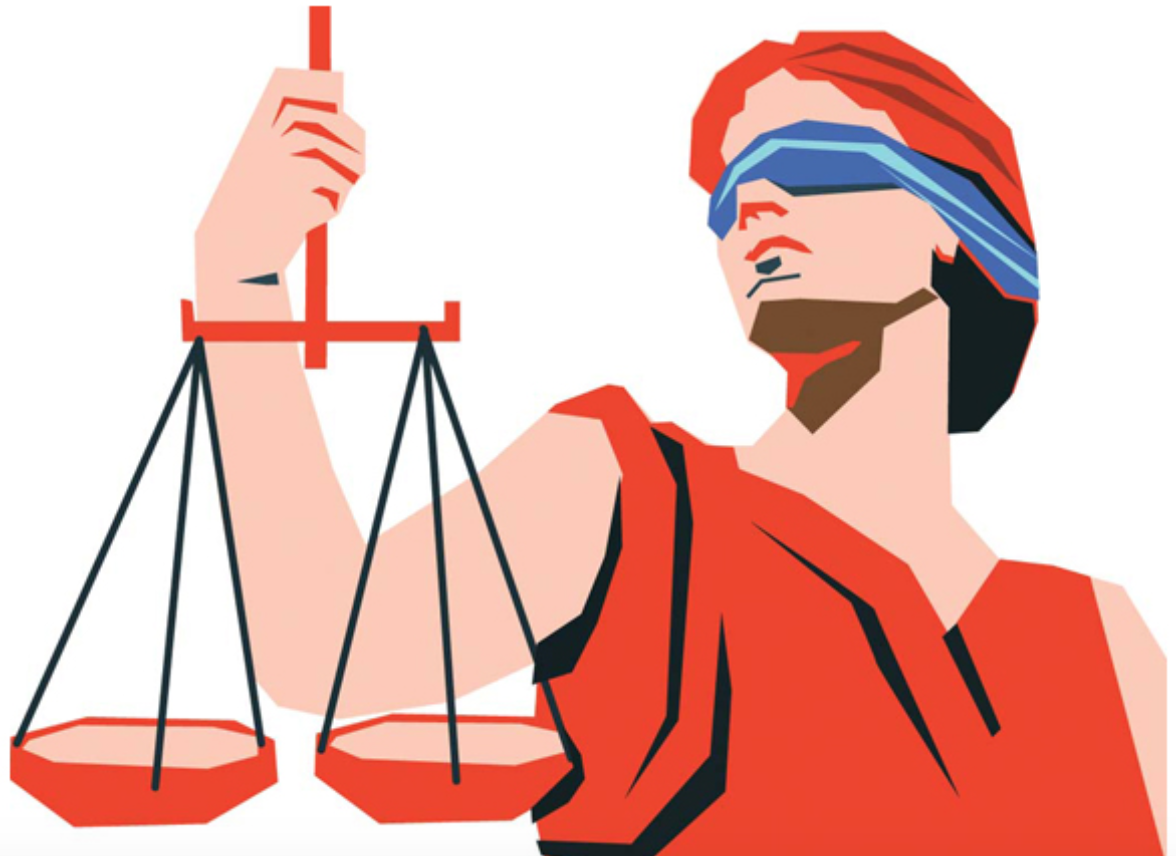 Human Rights – Children’s Rights / The right to justice and law Human Rights – Children’s Rights / The right to justice and law | |||||||||||||||||||||||||||||||||||||
| Developed by | IPSantarém - Bento Cavadas | Ana Torres | Maurício | |||||||||||||||||||||||||||||||||||||
| Duration | 60 | |||||||||||||||||||||||||||||||||||||
| Energizers |  16 - Back to back 16 - Back to back Participants find a pair of similar size and weight. They sit on the floor, back to back with their pair. They hold their arms. They have to get up, while keeping the arms and backs together. After trying once-twice with their pair they switch pairs. They can repeat this process with other pairs for a few times. | |||||||||||||||||||||||||||||||||||||
| Relaxing Exercises |  5 - Use a word that describes their feelings/thoughts 5 - Use a word that describes their feelings/thoughts Students are asked to close their eyes (if comfortable) for a minute and think of a word that describes their feelings/thoughts after finishing the resource. Then the students open their eyes and one by one say their word to the classroom | |||||||||||||||||||||||||||||||||||||
| Objectives | Students will learn:
| |||||||||||||||||||||||||||||||||||||
| Preparation | Suggested reading: https://www.wvi.org/child-rights-and-equity/article/understanding-how-children-experience-injustice Suggested video: https://www.youtube.com/watch?v=r6H1wfU0vkc Legislation about inequalities in the access to health https://ec.europa.eu/social/BlobServlet?docId=20339&langId=en | |||||||||||||||||||||||||||||||||||||
| Introduction | The UNESCO SDG16 is dedicated to promote peaceful and inclusive societies for sustainable development, provide access to justice for all and build effective, accountable and inclusive institutions at all levels
| |||||||||||||||||||||||||||||||||||||
| Methodology | NFE Tool (Role play) Introduction Step: Students watch the introductory video of Children's Rights prior to the activity HR_Intro. See the vídeo https://www.youtube.com/watch?v=r6H1wfU0vkc
| |||||||||||||||||||||||||||||||||||||
| Reflection | The teacher discusses with the students from both groups:
| |||||||||||||||||||||||||||||||||||||
| Notes | ||||||||||||||||||||||||||||||||||||||
| Digital Resource | ||||||||||||||||||||||||||||||||||||||
| 46 | ||
 | ||
| Diversity and Social Inclusion
| ||
| 47 | ||||||||||||||||||||||||||||||||||||||
 | ||||||||||||||||||||||||||||||||||||||
| 1 | 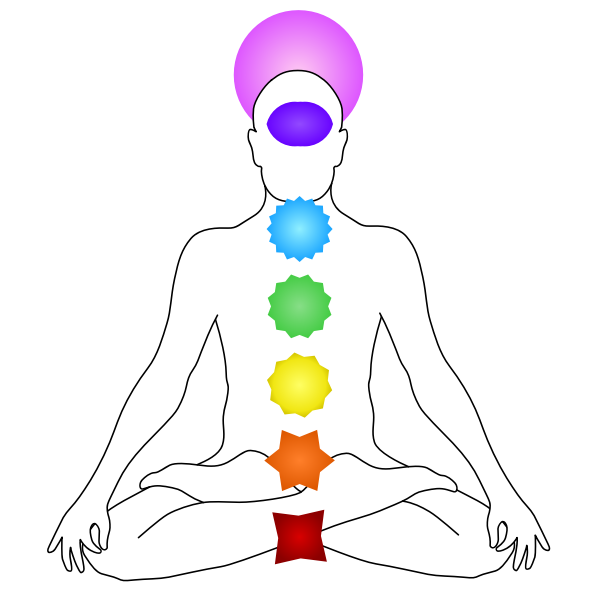 Diversity and Social Inclusion / Body diversity Diversity and Social Inclusion / Body diversity | |||||||||||||||||||||||||||||||||||||
| Developed by | AENAO | |||||||||||||||||||||||||||||||||||||
| Duration | 60 | |||||||||||||||||||||||||||||||||||||
| Energizers |  12 - Body spelling 12 - Body spelling Teacher asks students to write their name in the air using different parts of their body, for example with the hand/leg/elbow/nose. Optional: If time allows teacher asks to the class to spell out some words reproducing the letters with their bodies. Students can collaborate all together or can create different groups. | |||||||||||||||||||||||||||||||||||||
| Relaxing Exercises |  16 - Pass the face 16 - Pass the face It is like the game "telephone" but instead of passing a word or sentence around the group, participants pass a facial expression. | |||||||||||||||||||||||||||||||||||||
| Objectives |
| |||||||||||||||||||||||||||||||||||||
| Preparation |
Large papers (i.e. flipcharts stuck together with paper tape or blue tack), markers, newspapers, magazines, scissors, glue. Optional: old pieces of fabric/buttons, yarn
Collages can be stuck on the wall of the class or somewhere else in the school. | |||||||||||||||||||||||||||||||||||||
| Introduction |
We don’t shame flowers for being too big or too little, too short or too tall, too pink or too red, we just embrace them for their unique beauty… Why don’t we start doing that with ourselves? Unknown | |||||||||||||||||||||||||||||||||||||
| Methodology | NFE Tool Artistic creation (collage, drawing), team work, discussion. NFE tool inspired by Compasito, “A Body of Knowledge”, pp 53-55 Introduction Step: Students watch the introductory video of Diversity and Social Inclusion prior to the activity DSI_Intro. (5')
Optional: If there is time, the teacher can initiate a conversation; they discuss all together on the ways that they can use these abilities and skills shown in the drawings according to everyone’s body dissimilarity/diversity. If something was different in their body, how could they adapt in order to have the abilities/skills shown in the drawings? (10’) 3. After reflection, teacher shows DSI1 - Everyday Concerns (5') | |||||||||||||||||||||||||||||||||||||
| Reflection |
Teacher asks students in the plenary: (a) Was it easy to find things you are able to do? (b) Are there big differences between the collages? (c) Do you think that everyone can have the same skills/abilities? Why? (5’) | |||||||||||||||||||||||||||||||||||||
| Notes | Teacher and Students can watch the following video (optional) at home - or if there is enough time after the completion of the activity: Ian - A movie for disability, non-discrimination and integration (5') | |||||||||||||||||||||||||||||||||||||
| Digital Resource | ||||||||||||||||||||||||||||||||||||||
| 48 | ||||||||||||||||||||||||||||||||||||||
 | ||||||||||||||||||||||||||||||||||||||
| 2 |  Diversity and Social Inclusion / Language / Country diversity Diversity and Social Inclusion / Language / Country diversity | |||||||||||||||||||||||||||||||||||||
| Developed by | PROSVETA | |||||||||||||||||||||||||||||||||||||
| Duration | 60 | |||||||||||||||||||||||||||||||||||||
| Energizers |  13 - Simon says 13 - Simon says Teacher tells the group that they should follow instructions when he/she starts the instruction by saying “Simon says...”. If the teacher does not begin the instructions with the words “Simon says”, then the group should not follow the instructions! The teacher begins by saying something like “Simon says clap your hands” while clapping their hands. The participants follow. The teacher speeds up the actions, always saying “Simon says” first. After a short while, the “Simon says” is omitted. Those participants who do follow the instructions anyway are ‘out’ of the game. The game can be continued for as long as it remains fun. | |||||||||||||||||||||||||||||||||||||
| Relaxing Exercises |  12 - Warm back 12 - Warm back A piece of paper is stuck to each student’s back and they are given a pen. The paper is already prepared. Each piece of paper says: “I like………..”. Slow music is played and the students walk around and write characteristics about the person whom they like on the paper. Each child is allowed to look at the paper at the end and take it home. | |||||||||||||||||||||||||||||||||||||
| Objectives |
| |||||||||||||||||||||||||||||||||||||
| Preparation | Required equipment: laptop, loudspeakers | |||||||||||||||||||||||||||||||||||||
| Introduction | There are different people around the world. They live in different countries - big and small; with mountains and seas. In some of them it is very cold and in others - it is warmer. This makes the world very interesting. People love to travel so that they get to know new countries. People around the world speak different languages. Apart from words, we also say different things with our body movements. Different people use the language differently - some people speak a lot, others are not so talkative. Through language we make friends and get along with others. Introduction Step: Students watch the introductory video of Diversity and Social Inclusion prior to the activity DSI_Intro. 5' | |||||||||||||||||||||||||||||||||||||
| Methodology | NFE Tools: Brainstorming, work in pairs
| |||||||||||||||||||||||||||||||||||||
| Reflection | Discuss with your students the following questions: 5'
| |||||||||||||||||||||||||||||||||||||
| Notes | The modified version of the CC videos have been used in the presentation DSI2_1. | |||||||||||||||||||||||||||||||||||||
| Digital Resource | DSI2_1 - presentation yesii.eu/atividades/digital/18/DSI2_1_EN.ppsx DSI2_2 - video yesii.eu/atividades/videos/18_Autism Eng.mp4 | |||||||||||||||||||||||||||||||||||||
| 49 | ||||||||||||||||||||||||||||||||||||||
 | ||||||||||||||||||||||||||||||||||||||
| 3 | 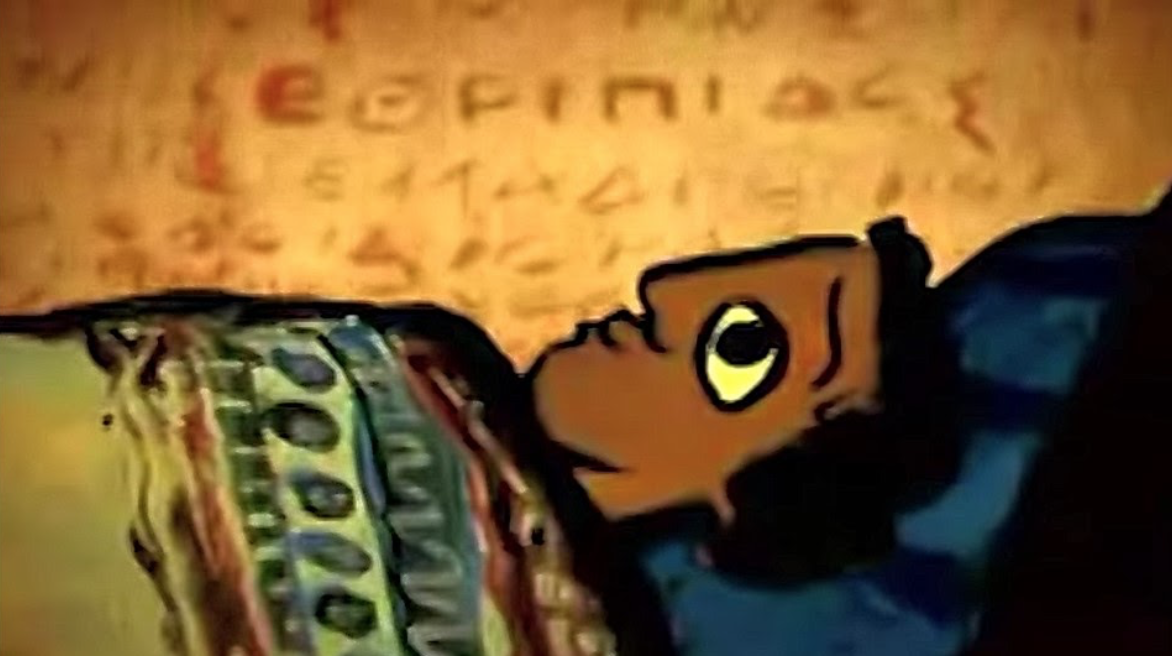 Diversity and Social Inclusion / Cultural / Ethnic diversity Diversity and Social Inclusion / Cultural / Ethnic diversity | |||||||||||||||||||||||||||||||||||||
| Developed by | IPSantarém: Ana Da Silva | Ana Torres | Maurício D | |||||||||||||||||||||||||||||||||||||
| Duration | 60 | |||||||||||||||||||||||||||||||||||||
| Energizers |  12 - Body spelling 12 - Body spelling Teacher asks students to write their name in the air using different parts of their body, for example with the hand/leg/elbow/nose. Optional: If time allows teacher asks to the class to spell out some words reproducing the letters with their bodies. Students can collaborate all together or can create different groups. | |||||||||||||||||||||||||||||||||||||
| Relaxing Exercises |  1 - Guided fantasy 1 - Guided fantasy Students are asked to close their eyes (if comfortable) and, with the guidance of the facilitator, slowly imagine a scene of the past or future event. More and more details are used to describe the event with all senses and thoughts. A suggested brief script could be à Begin by breathing slowly and deeply… Think of yourself in a place where you feel relaxed and at ease… Create all the details in your mind, what do you see… what the sounds are like, the smells and colors of this special place… Are there any people …? | |||||||||||||||||||||||||||||||||||||
| Objectives |
| |||||||||||||||||||||||||||||||||||||
| Preparation | Explore Lullabies of the World Project: a Russian animation project on the lullabies of different nations. The project created about a dozen music cartoons with a lullaby in native languages and plot based on the content of the songs. Portuguese Lullaby (3:06 min) https://www.youtube.com/watch?v=w5rb3xEVa4U&list=PL1JPCVROsLh4E7zmzUGvuTDFikc_Lbsfl&index=21 Greek Lullaby (3:10 min) https://www.youtube.com/watch?v=sAGpmSFobjY&list=PL1JPCVROsLh4E7zmzUGvuTDFikc_Lbsfl&index=20 Bulgarian Lullaby (3:09 min) https://www.youtube.com/watch?v=ERcyvABn2zs&list=PL1JPCVROsLh4E7zmzUGvuTDFikc_Lbsfl&index=42 Serbian lullaby (2:22) It seems that this project did not include a Serbian lullaby. The suggested serbian lullaby is the following: https://www.youtube.com/watch?v=G3fdqj1P3Ns | |||||||||||||||||||||||||||||||||||||
| Introduction | Lullabies are songs that are often accompanied by gestures and balancing movements, so they have both melodic and performative characteristics. Through lullabies, the cultural heritage of a civilization or of one or more ethnic groups is transmitted from generation to generation: music, singing, gesture, poetry, contents and meanings of the lyrics, language, images about ways of living and thinking. These songs can have a very strong impact on children, not only on their psychological and physical well-being, but also on the initiation to a whole culture and feeling of belonging to that culture. Although these songs are intended to calm the children and make them fall asleep, they sometimes contain references to distressing elements, such as a beast or a monster, but the singing voice is always reassuring and protective, in order to keep the beasts and monsters away from the children, to protect them from what may cause them fear, which is also an element of a culture. Introduction Step: Students watch the introductory video of Diversity and Social Inclusion prior to the activity DSI_Intro. | |||||||||||||||||||||||||||||||||||||
| Methodology | NFE Tool (lullabies case study and mind map)
Not all fields have to be filled in. It depends on the specific lullabies and what participants identified. If there is nothing to say in one category, turn the wheel again. | |||||||||||||||||||||||||||||||||||||
| Reflection | The facilitator can ask the participants the following questions:
| |||||||||||||||||||||||||||||||||||||
| Notes | As an after activity suggestion, you can share with participants the link of all lullabies and suggest them to play with the random wheel. Or to use it for other games that they can invent themselves. | |||||||||||||||||||||||||||||||||||||
| Digital Resource | Random wheel for identifying cultural/ethnic differences of the lullabies: | |||||||||||||||||||||||||||||||||||||
| 50 | ||||||||||||||||||||||||||||||||||||||
 | ||||||||||||||||||||||||||||||||||||||
| 4 |  Diversity and Social Inclusion / Religious diversity Diversity and Social Inclusion / Religious diversity | |||||||||||||||||||||||||||||||||||||
| Developed by | IPSantarém: Ana Torres | Maurício D | |||||||||||||||||||||||||||||||||||||
| Duration | 60 | |||||||||||||||||||||||||||||||||||||
| Energizers |  20 - Chief of clan 20 - Chief of clan Everyone stands in a circle. One participant closes his/her eyes or steps out of the room. He/She will have to guess who is the chief of the clan. One participant volunteers to be the secret Chief (quietly, so the "guesser" can't hear anything). The chief begins an action such as snapping fingers, patting the tummy, or slapping knees, and everyone in the circle imitates him/her. The guesser returns to the room and tries to figure out who the chief is. As the guesser looks around, the chief changes the action avoiding being detected. | |||||||||||||||||||||||||||||||||||||
| Relaxing Exercises |  14 - Give me your energy 14 - Give me your energy The students stand in a circle. The teacher starts, pretending he/she is holding a ball on the hands and passing it to the student on his/her right; this one do the same, until the ball comes back to the teacher. The ball needs to be passed in a gentle way, as it is very precious. At the second round, the teacher passes the ball to students in another side of the circle, making a gesture and a noise. The students will do the same until everyone will have touched the ball at least once. The ball can be passed in any way (in form of kick, kiss…), pretending it becomes bigger or smaller depending on the will of the students. | |||||||||||||||||||||||||||||||||||||
| Objectives |
| |||||||||||||||||||||||||||||||||||||
| Preparation | Reading suggestions Declaration on the Elimination of All Forms of Intolerance and of Discrimination Based on Religion or Belief, articles 1-3 and 6: https://www.un.org/en/universal-declaration-human-rights/index.html (UN, 2016) European Convention on Human Rights, pages 10-12 and 48: http://www.echr.coe.int/Documents/Convention_ENG.pdf (Europe, 2016) Arda Religion Dictionary: http://www.thearda.com/learningcenter/religiondictionary.asp (ARDA, 2016) Presentation: https://docs.google.com/presentation/d/1MXv5FPaoDCWhbgJXKmNGlUK4Esbx5s1A7TwS6lmULEE/edit?usp=sharing | |||||||||||||||||||||||||||||||||||||
| Introduction | The religious diversity is represented by the wide variety of religions present throughout the world. In this perspective, millions of people worship different gods (with different moral teachings), which represents the manifestation of freedom of religious expression. In practice, religious diversity is seen when we find different religious temples (with different beliefs) in a given city. Introduction Step: Students watch the introductory video of Diversity and Social Inclusion prior to the activity DSI_Intro. | |||||||||||||||||||||||||||||||||||||
| Methodology | NFE Tool Gamification
| |||||||||||||||||||||||||||||||||||||
| Reflection | The facilitator ask the students:
| |||||||||||||||||||||||||||||||||||||
| Notes | ||||||||||||||||||||||||||||||||||||||
| Digital Resource | 1 game 2 game | |||||||||||||||||||||||||||||||||||||
| 51 | ||||||||||||||||||||||||||||||||||||||
 | ||||||||||||||||||||||||||||||||||||||
| 5 |  Diversity and Social Inclusion / Gender diversity (Man vs Woman) Diversity and Social Inclusion / Gender diversity (Man vs Woman) | |||||||||||||||||||||||||||||||||||||
| Developed by | AENAO | |||||||||||||||||||||||||||||||||||||
| Duration | 60 | |||||||||||||||||||||||||||||||||||||
| Energizers |  3 - Amoeba 3 - Amoeba An evolution game! Everyone starts off as an amoeba, with the purpose of evolving to a human. All students walk around acting like an amoeba and when they meet with another amoeba, they play one round of rock/paper/scissors. Whoever wins evolves into a worm. When two worms meet they play again rock/paper/scissors and whoever wins turns into a wasp, but whoever loses goes back to becoming an amoeba. This continues until one becomes human. The evolution stages are: amoeba à worm à wasp à chicken à monkey à human. | |||||||||||||||||||||||||||||||||||||
| Relaxing Exercises |  5 - Use a word that describes their feelings/thoughts 5 - Use a word that describes their feelings/thoughts Students are asked to close their eyes (if comfortable) for a minute and think of a word that describes their feelings/thoughts after finishing the resource. Then the students open their eyes and one by one say their word to the classroom | |||||||||||||||||||||||||||||||||||||
| Objectives |
| |||||||||||||||||||||||||||||||||||||
| Preparation |
Big carton papers/flipchart papers, markers | |||||||||||||||||||||||||||||||||||||
| Introduction |
Gender diversity is equitable or fair representation of people of different genders. Gender diversity is often related to Gender equity, since the latter refers to the justice in the distribution of benefits and responsibilities between women and men. It’s time that we all see Gender as a spectrum instead of two sets of opposing ideals. Emma Watson | |||||||||||||||||||||||||||||||||||||
| Methodology |
NFE Tool Team work, artistic creation Introduction Step: Students watch the introductory video of Diversity and Social Inclusion prior to the activity DSI_Intro. (5')
Students need to write these skills on their drawings. (10’) * Teacher at this point should not encourage students to lead to a certain direction in regards to a man’s or a woman’s skills.
For further explanations, kindly see “Notes” below. | |||||||||||||||||||||||||||||||||||||
| Reflection |
Teacher asks students in the plenary: (a) Did you find similarities within the two genders? (b) Did you find differences within the two genders? (c) Could a difference be overcome so that it becomes a similarity? (5’) | |||||||||||||||||||||||||||||||||||||
| Notes |
In Step 4 of the methodology, the teacher should advice students that whatever characteristic they have chosen is fine. Teacher should also mention that students could try to imagine the story in the background and should explain how all characteristics match nearly every person depicted. Some examples are:
The whole point is to give alternative narratives to pre-existing gender roles. The teacher could also engage in a brief conversation in the plenary, asking i.e. “Was there a characteristic that you thought matched in many people or a characteristic that you found it difficult to match to a person? Or was there a person you found it difficult to match with a characteristic?” As a conclusion, the teacher could emphasize to the students that they could be anything, no matter their gender or pre-defined gender role. | |||||||||||||||||||||||||||||||||||||
| Digital Resource | ||||||||||||||||||||||||||||||||||||||
| 52 | ||||||||||||||||||||||||||||||||||||||
 | ||||||||||||||||||||||||||||||||||||||
| 6 | 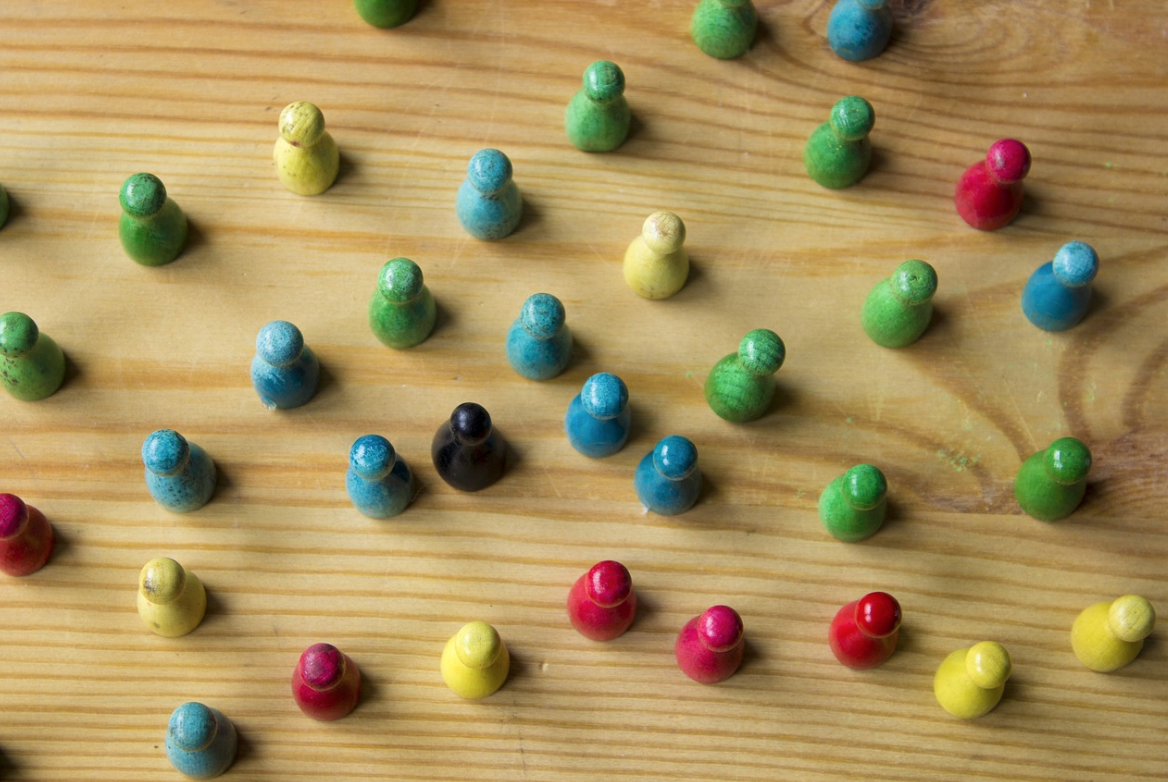 Diversity and Social Inclusion / Diversity at school Diversity and Social Inclusion / Diversity at school | |||||||||||||||||||||||||||||||||||||
| Developed by | IPSantarém - Bento Cavadas | Ana Torres | Maurício | |||||||||||||||||||||||||||||||||||||
| Duration | 60 | |||||||||||||||||||||||||||||||||||||
| Energizers |  2 - Moo!!! 2 - Moo!!! The teacher assigns randomly in a piece of paper (turned upside down on their desks) each student with farm animal, i.e. ‘cow’, ‘horse’, ‘sheep’, ‘rooster’, etc. Once the students are informed of their animal role, they are instructed to walk around the room acting like the animal they are assigned (i.e. making its sound), in order to find their kind. | |||||||||||||||||||||||||||||||||||||
| Relaxing Exercises |  5 - Use a word that describes their feelings/thoughts 5 - Use a word that describes their feelings/thoughts Students are asked to close their eyes (if comfortable) for a minute and think of a word that describes their feelings/thoughts after finishing the resource. Then the students open their eyes and one by one say their word to the classroom | |||||||||||||||||||||||||||||||||||||
| Objectives | Students will learn:
| |||||||||||||||||||||||||||||||||||||
| Preparation | Suggested reading: UNESCO SDG4-Ensure inclusive and equitable quality education and promote lifelong learning opportunities for all | |||||||||||||||||||||||||||||||||||||
| Introduction | In Convention of the Rights of the Child, article 38 recognizes the right of the child to education. With the same goals, UNESCO SDG4 aims, by 2030, ensure that all girls and boys complete free, equitable and quality primary and secondary education leading to relevant and effective learning outcomes. The UNESCO SDG4 approaches the diversity at school with the aim, by 2030, eliminate gender disparities in education and ensure equal access to all levels of education and vocational training for the vulnerable, including persons with disabilities, indigenous peoples and children in vulnerable situations. | |||||||||||||||||||||||||||||||||||||
| Methodology | NFE Tool ( Brainstorming, tema work)
Teacher should ask each group which conclusions they have achieved and discuss what they have in common and what they have different. 5’ | |||||||||||||||||||||||||||||||||||||
| Reflection | Teacher reflect with the studens about:
| |||||||||||||||||||||||||||||||||||||
| Notes | ||||||||||||||||||||||||||||||||||||||
| Digital Resource | ||||||||||||||||||||||||||||||||||||||
| 53 | ||||||||||||||||||||||||||||||||||||||
 | ||||||||||||||||||||||||||||||||||||||
| 7 | 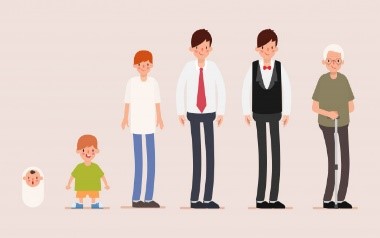 Diversity and Social Inclusion / Age diversity Diversity and Social Inclusion / Age diversity | |||||||||||||||||||||||||||||||||||||
| Developed by | PROSVETA | |||||||||||||||||||||||||||||||||||||
| Duration | 60 | |||||||||||||||||||||||||||||||||||||
| Energizers |  16 - Back to back 16 - Back to back Participants find a pair of similar size and weight. They sit on the floor, back to back with their pair. They hold their arms. They have to get up, while keeping the arms and backs together. After trying once-twice with their pair they switch pairs. They can repeat this process with other pairs for a few times. | |||||||||||||||||||||||||||||||||||||
| Relaxing Exercises |  10 - Mountain range 10 - Mountain range Stand side by side in a line, in mountain pose, your feet hip-width apart. Each foot must touch the foot of the person on each side. Walk (as a group) across the room without separating their feet from your partner’s. Variation: Ask the students to walk on their toes. | |||||||||||||||||||||||||||||||||||||
| Objectives |
| |||||||||||||||||||||||||||||||||||||
| Preparation | Preparation:
Required equipment: laptop and projector Digital tool: video DSI7_1 | |||||||||||||||||||||||||||||||||||||
| Introduction | People differ not only in appearance, origin, character and qualities, but also in age. Communicating with people of different ages can sometimes be difficult for us, because each generation has its own preferred ways of expressing and receiving information. On the other hand, intergenerational communication has many benefits - we share experiences, children can learn interesting things about the past, and adults can master modern technologies with the support of their children and grandchildren. Students watch the introductory video of Diversity and Social Inclusion prior to the activity DSI_Intro. 5' | |||||||||||||||||||||||||||||||||||||
| Methodology | NFE Tools: discussion, role play, team work.
| |||||||||||||||||||||||||||||||||||||
| Reflection | Discuss the following questions to help students understand the topic: 5'
| |||||||||||||||||||||||||||||||||||||
| Notes | At the discretion of the teacher and the size of the group, activity 4 can be realized by discussions in pairs or in small groups instead of the suggested role play. | |||||||||||||||||||||||||||||||||||||
| Digital Resource | DSI7_1 - video yesii.eu/atividades/digital/23/DSI7_1.ppsx DSI7_2 - handout http://yesii.eu/atividades/pdf/23_DSI7_2.pdf | |||||||||||||||||||||||||||||||||||||
| 54 | ||||||||||||||||||||||||||||||||||||||
 | ||||||||||||||||||||||||||||||||||||||
| 8 |  Diversity and Social Inclusion / Diversity and stereotypes Diversity and Social Inclusion / Diversity and stereotypes | |||||||||||||||||||||||||||||||||||||
| Developed by | AENAO | |||||||||||||||||||||||||||||||||||||
| Duration | 60 | |||||||||||||||||||||||||||||||||||||
| Energizers |  2 - Moo!!! 2 - Moo!!! The teacher assigns randomly in a piece of paper (turned upside down on their desks) each student with farm animal, i.e. ‘cow’, ‘horse’, ‘sheep’, ‘rooster’, etc. Once the students are informed of their animal role, they are instructed to walk around the room acting like the animal they are assigned (i.e. making its sound), in order to find their kind. | |||||||||||||||||||||||||||||||||||||
| Relaxing Exercises |  20 - Holding legs 20 - Holding legs Participants work in pairs. And you can put a quiet and relaxing music (or sounds like water falling down, sea waves, etc.). Half of the participants are asked to lie down face up, eyes closed, with their left leg extended on the floor and their right leg elevated. Another participant stands up and loops a towel around the heel of the other’s right foot and holds the ends of the towel in his/her hands, and makes soft and gentle movements (upwards and downwards, and sidewards) while the other totally relaxes his/her leg. Then they repeat the same process with the left leg. Then the participants switch roles. | |||||||||||||||||||||||||||||||||||||
| Objectives |
| |||||||||||||||||||||||||||||||||||||
| Preparation |
Stereotype development and formation, pgs 548-549
Printed version of DSI8_Cards
The cards given in DSI8_Cards are divided in 3 sets as follows:
| |||||||||||||||||||||||||||||||||||||
| Introduction |
By definition, a stereotype is an idea or belief that many people have about a thing or group of people. This idea or belief is based upon how they look on the outside, which may be untrue or only partly true. Types of stereotypes in society include gender, race, religion, culture, age and profession. | |||||||||||||||||||||||||||||||||||||
| Methodology | NFE Tool Game, Team work Introduction Step: Students watch the introductory video of Diversity and Social Inclusion prior to the activity DSI_Intro. (5')
Groups that find a card win 1 point, whereas groups who don’t find a card do not win any points. (15’)
After reflection, teacher shows the DSI8 - Walter the Wolf. (5') | |||||||||||||||||||||||||||||||||||||
| Reflection |
Teacher asks students in the plenary: (a) Was it easy to relate words/phrases with the descriptions? (b) Was it easier to identify the description when there is a stereotype or not? (5’) | |||||||||||||||||||||||||||||||||||||
| Notes | Teacher and Students can watch the following video (optional) at home - or if there is enough time after the completion of the activity: Lambs - A movie for difference and acceptance (5') | |||||||||||||||||||||||||||||||||||||
| Digital Resource | ||||||||||||||||||||||||||||||||||||||
| 55 | ||||||||||||||||||||||||||||||||||||||
 | ||||||||||||||||||||||||||||||||||||||
| 9 | 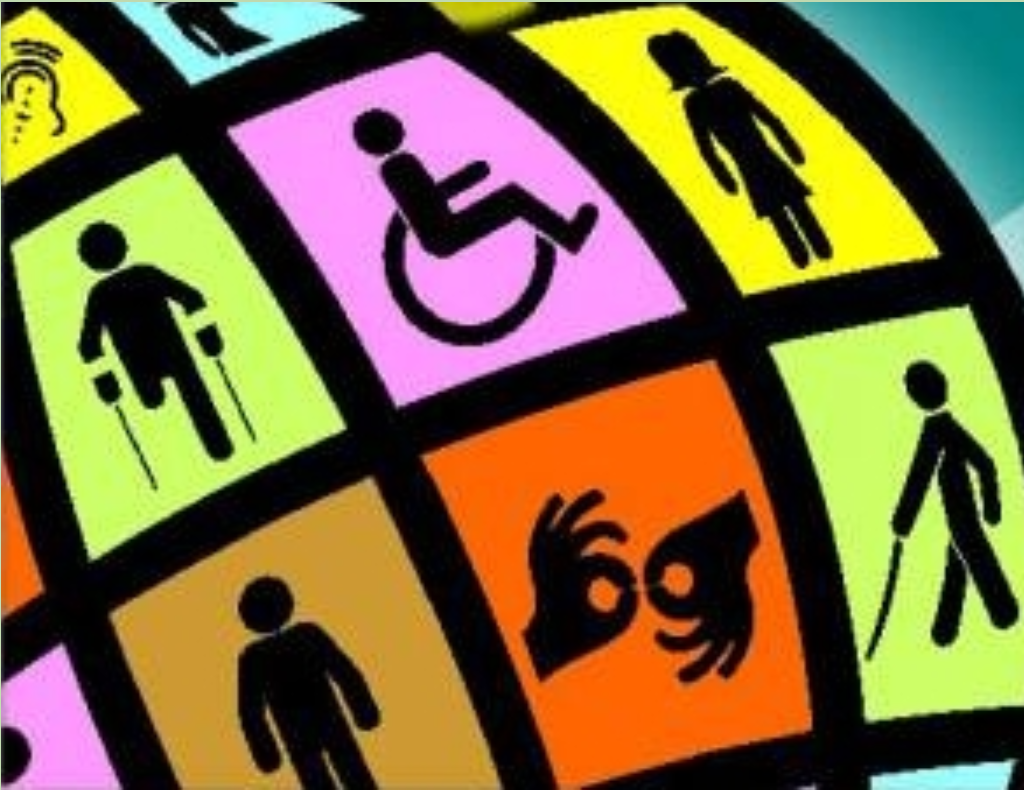 Diversity and Social Inclusion / Diversity in abilities_ Ability and disability_social inclusion Diversity and Social Inclusion / Diversity in abilities_ Ability and disability_social inclusion | |||||||||||||||||||||||||||||||||||||
| Developed by | IPSantarém: Ana da Silva| Bento Cavadas| Ana Torre | |||||||||||||||||||||||||||||||||||||
| Duration | 55 | |||||||||||||||||||||||||||||||||||||
| Energizers |  16 - Back to back 16 - Back to back Participants find a pair of similar size and weight. They sit on the floor, back to back with their pair. They hold their arms. They have to get up, while keeping the arms and backs together. After trying once-twice with their pair they switch pairs. They can repeat this process with other pairs for a few times. | |||||||||||||||||||||||||||||||||||||
| Relaxing Exercises |  11 - Breathing exercise 11 - Breathing exercise Teacher asks students to make a circle and do the following exercises, repeating each one few times and alternate them. Teacher can also add new ones. Breathing in raise your arms above your head and say “Elevator Up!” Breathing out, float your arms back down to your sides, saying “Elevator Down.” Repeat. Take three quick breaths in while wiggling your nose. Wiggle your nose on each breath in. Then wiggle your nose on each breath out. Hold your hand in front of your nose and hiss hiss hiss while breathing out. | |||||||||||||||||||||||||||||||||||||
| Objectives |
| |||||||||||||||||||||||||||||||||||||
| Preparation |
| |||||||||||||||||||||||||||||||||||||
| Introduction | We all have a role to play in building an inclusive community. Inclusion is the right of all individuals to participate, in a conscious and responsible way, in the society of which they are a part, and to be accepted and respected in what differentiates them from others. | |||||||||||||||||||||||||||||||||||||
| Methodology | NFE Tool: Role play Introduction Step: Students watch the introductory video of Diversity and Social Inclusion prior to the activity DSI_Intro.
| |||||||||||||||||||||||||||||||||||||
| Reflection | The facilitator asks the participants:
| |||||||||||||||||||||||||||||||||||||
| Notes | ||||||||||||||||||||||||||||||||||||||
| Digital Resource | ||||||||||||||||||||||||||||||||||||||
| 56 | ||||||||||||||||||||||||||||||||||||||
 | ||||||||||||||||||||||||||||||||||||||
| 10 | ||||||||||||||||||||||||||||||||||||||
| Developed by | PROSVETA | |||||||||||||||||||||||||||||||||||||
| Duration | 60 | |||||||||||||||||||||||||||||||||||||
| Energizers |  5 - Good morning or evening 5 - Good morning or evening Everybody walks around the room greeting each other (as if everybody was their close friends) using words and gestures (shake hand, kiss, hug). Then they repeat the greeting in silence using only their eyes. When the exercise is over, the teacher asks students how did they feel with the two different ways of greeting (eg was it difficult, how did they manage to communicate, etc). | |||||||||||||||||||||||||||||||||||||
| Relaxing Exercises |  16 - Pass the face 16 - Pass the face It is like the game "telephone" but instead of passing a word or sentence around the group, participants pass a facial expression. | |||||||||||||||||||||||||||||||||||||
| Objectives | Students will:
| |||||||||||||||||||||||||||||||||||||
| Preparation | Materials: large cardboards or flipchart paper, felt tips and colored pencils – for the posters in activity 3 | |||||||||||||||||||||||||||||||||||||
| Introduction | We usually think it is not our responsibility and often blame the others when we see children who are unhappy, not being involved in the life of the community or even depressed. We consider we cannot do anything about that because this is life, and this is society. But WE ARE SOCIETY, we can make a difference with our actions. Maybe not a big difference, but our small steps can make someone happy; they can change lives. Students watch the introductory video of Diversity and Social Inclusion prior to the activities. (DSI_Intro) 5' | |||||||||||||||||||||||||||||||||||||
| Methodology | NFE Tool: team work, discussion, artistic work.
| |||||||||||||||||||||||||||||||||||||
| Reflection | As a final wrap-up of the training students could discuss to implement some of the ideas presented by groups 1, 2 1and 3 in order to have a more inclusive classroom. If they agree that some of the suggestions are good and realistic for implementation, they could plan the practical steps, set up the timing, etc. 5’ | |||||||||||||||||||||||||||||||||||||
| Notes | ||||||||||||||||||||||||||||||||||||||
| Digital Resource | ||||||||||||||||||||||||||||||||||||||
| 57 | ||||||||||||||||||||||||||||||||||||||
 | ||||||||||||||||||||||||||||||||||||||
| 10 | 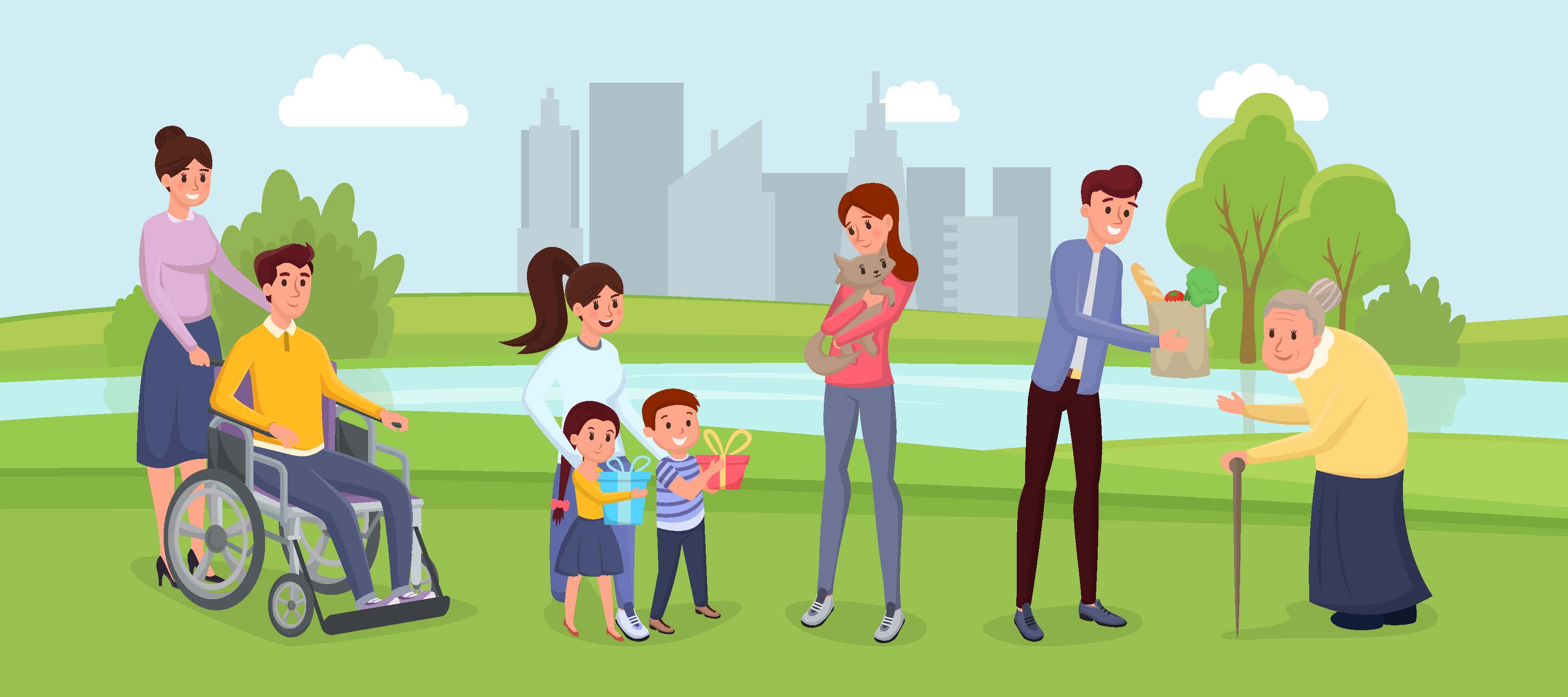 Diversity and Social Inclusion / Socioeconomic diversity and social inclusion Diversity and Social Inclusion / Socioeconomic diversity and social inclusion | |||||||||||||||||||||||||||||||||||||
| Developed by | PROSVETA | |||||||||||||||||||||||||||||||||||||
| Duration | 60 | |||||||||||||||||||||||||||||||||||||
| Energizers |  15 - Animal roundup 15 - Animal roundup The teacher tells to the class to silently think of an animal. Then he/she tells to the group that without talking, they need to arrange themselves on a line from largest to smallest animals. Group members can only make gestures and the noise of their animal. After they have finished, teacher ask to the students to say the animal they were supposed to be to see if the order is correct. | |||||||||||||||||||||||||||||||||||||
| Relaxing Exercises |  10 - Mountain range 10 - Mountain range Stand side by side in a line, in mountain pose, your feet hip-width apart. Each foot must touch the foot of the person on each side. Walk (as a group) across the room without separating their feet from your partner’s. Variation: Ask the students to walk on their toes. | |||||||||||||||||||||||||||||||||||||
| Objectives | Students will:
| |||||||||||||||||||||||||||||||||||||
| Preparation | Preparation:
Required equipment: Laptop and projector for activity 1 (for watching the presentation) | |||||||||||||||||||||||||||||||||||||
| Introduction | We are all different, even within our own cultures. Quite often, we reject and are suspicious of people who are different. We feel safer when communicating with people who physically and mentally look like us. But this is the easy way. We are missing a lot – life would be much more colourful and interesting if we embrace diversity and value it as an asset. We will be happier if we live in a community where everybody feels safe, accepted and appreciated. Students watch the introductory video of Diversity and Social Inclusion prior to the activities. ( DSI_Intro) 5' | |||||||||||||||||||||||||||||||||||||
| Methodology | NFE Tools: discussion, team work, snow balling.
| |||||||||||||||||||||||||||||||||||||
| Reflection | As a close-up of the training, students could be encouraged to share the most valuable aspects of the activity; the most interesting ones; most surprising part of the activity, etc. 5' | |||||||||||||||||||||||||||||||||||||
| Notes | Follow-up: This training is linked to lesson 10.2: Social Inclusion: My Dream Classroom | |||||||||||||||||||||||||||||||||||||
| Digital Resource | DSI10_1 - interactive presentation Voting cards - yesii.eu/atividades/pdf/11_HR11_2-handout.pdf | |||||||||||||||||||||||||||||||||||||
| 58 | ||||||||||||||||||||||||||||||||||||||
 | ||||||||||||||||||||||||||||||||||||||
| 11 | 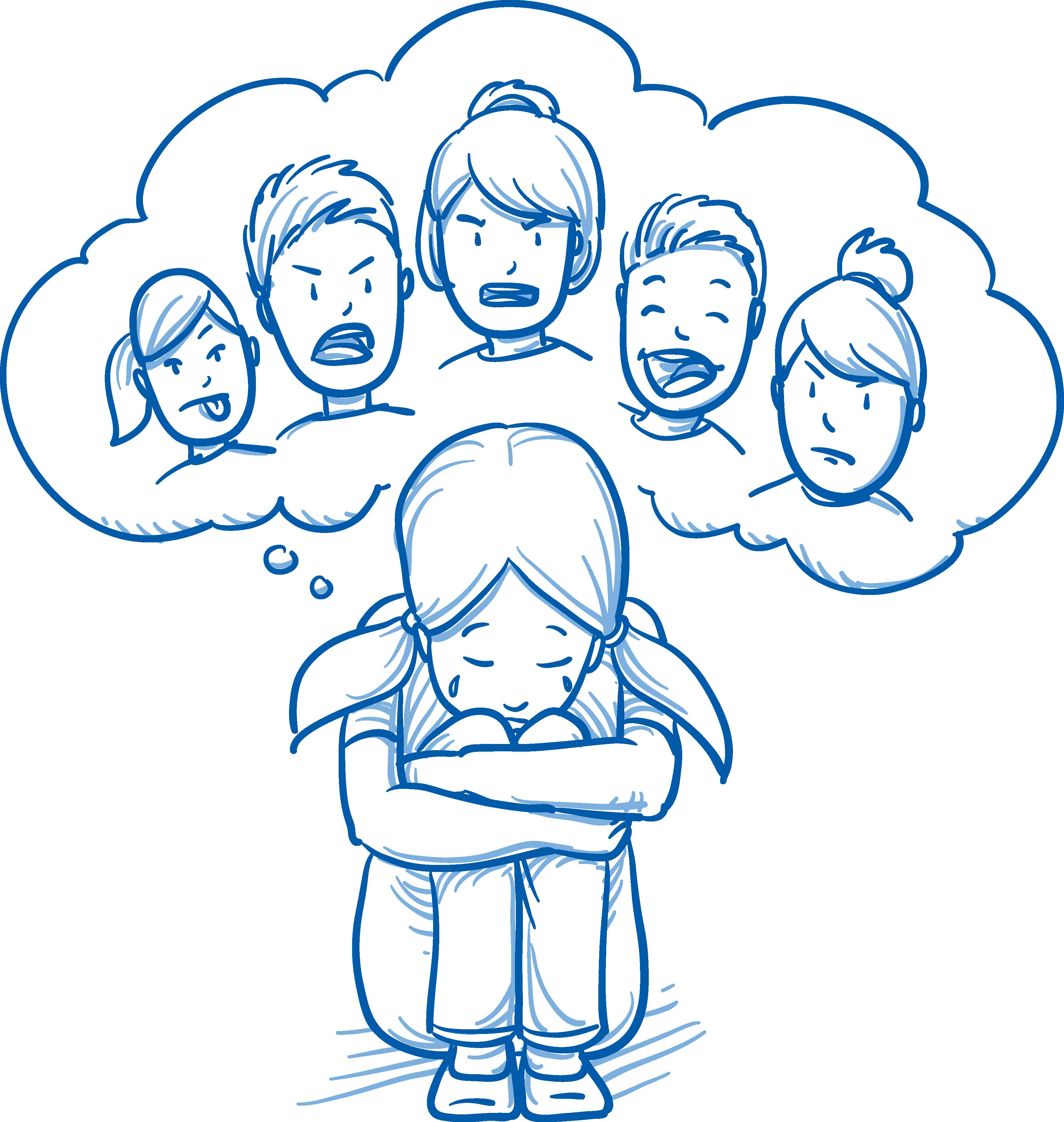 Diversity and Social Inclusion / Bullying and social inclusion Diversity and Social Inclusion / Bullying and social inclusion | |||||||||||||||||||||||||||||||||||||
| Developed by | PROSVETA | |||||||||||||||||||||||||||||||||||||
| Duration | 60 | |||||||||||||||||||||||||||||||||||||
| Energizers |  1 - Break the Circle 1 - Break the Circle The teacher assigns randomly a number to each student, depending on the group size, i.e. for 20 students, numbers 1-4 are ok, so each group has 5 people (groups could be synthesized by the students with the same number, i.e. all having been assigned number ‘1’ or by students where each one has his/her own unique number 1-4; similarly and more fun is grouping by ingredient for a Greek salad, where every student is i.e. ‘tomato’, ‘cucumber’, ‘onion’, ‘oregano’, etc.) Once the groups have been formed, they make circles and the teacher randomly picks a number (or an ingredient) to step out of the circle and try to break in, while the others remaining are instructed to not let go of their hands no matter what. This can be repeated once more with another number stepping out. | |||||||||||||||||||||||||||||||||||||
| Relaxing Exercises |  5 - Use a word that describes their feelings/thoughts 5 - Use a word that describes their feelings/thoughts Students are asked to close their eyes (if comfortable) for a minute and think of a word that describes their feelings/thoughts after finishing the resource. Then the students open their eyes and one by one say their word to the classroom | |||||||||||||||||||||||||||||||||||||
| Objectives | Students will:
| |||||||||||||||||||||||||||||||||||||
| Preparation | Preparation: print handout DSI11_2 for each student:
Equipment: laptop and projector for activity 1 (DSI11_1) | |||||||||||||||||||||||||||||||||||||
| Introduction | Bullying is a major problem that affects both kids and adults, yes, adults too. Many of us have had to deal with bullies at some point in life, perhaps as children or maybe in adulthood. But although bullying is common, no one needs to put up with a bully’s behavior. Taking power from a bully is not always easy, but there are wise ways to deal with them. Students watch the introductory video of Diversity and Social Inclusion prior to the activities. (DSI_Intro) 5' | |||||||||||||||||||||||||||||||||||||
| Methodology | NFE tools: discussion (act. 1), artistic work/ drama (act. 2, steps 2, 3)
Step 1: Self-esteem 15’ If you have been bullied, remember that this isn’t your fault! There are many reasons why bullies do what they do; but they have little to do with you and a lot to do with the bullies’ personal issues. So, don’t start viewing yourself through the bullies’ eyes. This is not your real portrait. Activity 2.1.1. Students receive copies of the big heart from handout 2.1. and find the side entitled ME-ME. Instruct them to write down all the great qualities that make them unique – maybe they have good grades in Maths or PE, or play a musical instrument, or tell interesting stories to their grandmother and make her laugh, etc. Activity 2.1.2. When they are ready with the ME-ME side, they hang the hearts on their back facing down (the ME-ME side faces their backs) and start walking round the classroom. Whenever the meet someone, they write a good quality of the person on his heart (OTHERS-ME side) and continue walking around. Activity 2.1.3. Wrap-up: Students read the OTHERS-ME side of their hearts. All the qualities on the two sides – this is who they really are. The next time a bully makes them feel miserable, they can remember this amazing collection of positive traits and talents. Step 2: Back-up team 5’ Students receive a printed copy of the 2.2. handout (pages 4-5) and are instructed to keep it and think it over at home. In class you read and act a plot illustrating the step (students are divided in groups of 4 and are asked to come up with a simple plot illustrating the possible benefits (or drawbacks) of step 2. Step 3: Ignore and get out of the situation 5’ Similarly, students receive a printed copy of the 2.3. handout (page 6); they keep it as food for thought at home. In class you read step 3 and students (in the same groups of step 2) act a plot illustrating it. Step 4: Talk to someone. 5’ Students receive a printed copy of the 2.4. handout (page 7) and keep it so that they can think it over at home. In class you read step 4 together and discuss practical things as uggested, e.g. the name of the guidance counselor in school and how students can contact her/him; other teachers in school who can help; the national hotline they can call, etc. | |||||||||||||||||||||||||||||||||||||
| Reflection | Guided reflection – suggested activities and questions: 10'
| |||||||||||||||||||||||||||||||||||||
| Notes | ||||||||||||||||||||||||||||||||||||||
| Digital Resource | DSI11_1 - presentation yesii.eu/atividades/digital/27/DSI11_1.ppsx Handouts 2.1, 2.2, 2.3, 2.4, 2.5 yesii.eu/atividades/pdf/27_DSI11_2_handouts 2.1_2.2_2.3_2.4_2.5.pdf | |||||||||||||||||||||||||||||||||||||
| 59 | ||||||||||||||||||||||||||||||||||||||
 | ||||||||||||||||||||||||||||||||||||||
| 12 |  Diversity and Social Inclusion / Racism_social inclusion Diversity and Social Inclusion / Racism_social inclusion | |||||||||||||||||||||||||||||||||||||
| Developed by | AENAO | |||||||||||||||||||||||||||||||||||||
| Duration | 60 | |||||||||||||||||||||||||||||||||||||
| Energizers |  14 - I am going on a trip 14 - I am going on a trip Everyone sits in a circle. Start by saying “I’m going on a trip and I’m taking a hug”, and hug the person to your right. That person then has to say “I’m going on a trip and I’m taking a hug and a pat on the back”, and then give the person on their right a hug and a pat on the back. Each person repeats what has been said and adds a new action to the list. Go round the circle until everyone has had a turn. | |||||||||||||||||||||||||||||||||||||
| Relaxing Exercises |  7 - Strong as a tree 7 - Strong as a tree All students spread out in the room. With their feet firmly planted on the ground, they pretend they are trees that are slowly swaying back and forth with a breeze. The movements become stronger as a storm approaches. The students try to make their movements as strong as possible, but remember to keep their feet on the ground. Slowly the wind dies down and the trees can rest. | |||||||||||||||||||||||||||||||||||||
| Objectives |
| |||||||||||||||||||||||||||||||||||||
| Preparation |
Printed Case Studies given at DSI12_Case Study_1,2,3,4 | |||||||||||||||||||||||||||||||||||||
| Introduction |
“There is nothing more unequal than equal treatment of inequality” Aristotle | |||||||||||||||||||||||||||||||||||||
| Methodology | NFE Tool Case Study, Discussion in plenary, Discussion in groups Introduction Step: Students watch the introductory video of Diversity and Social Inclusion prior to the activity DSI_Intro. (5')
After reflection teacher shows DSI12 - Fruit Salad. (5') | |||||||||||||||||||||||||||||||||||||
| Reflection |
Teacher asks students in the plenary: (a) Was it easy for you to decide on the question given in the Case Study? (b) Would you decide something differently, now that you are aware of your classmates’ decisions? (5') | |||||||||||||||||||||||||||||||||||||
| Notes | Teacher and Students can watch the following videos (optional) at home - or if there is enough time after the completion of the activity: Ian - A movie for disability, non-discrimination and integration Birds - A movie for diversity and bullying (5') | |||||||||||||||||||||||||||||||||||||
| Digital Resource | ||||||||||||||||||||||||||||||||||||||
| 60 | ||
 | ||
| Identity, Active Citizenship and Social Involvement
| ||
| 61 | ||||||||||||||||||||||||||||||||||||||
 | ||||||||||||||||||||||||||||||||||||||
| 1 | 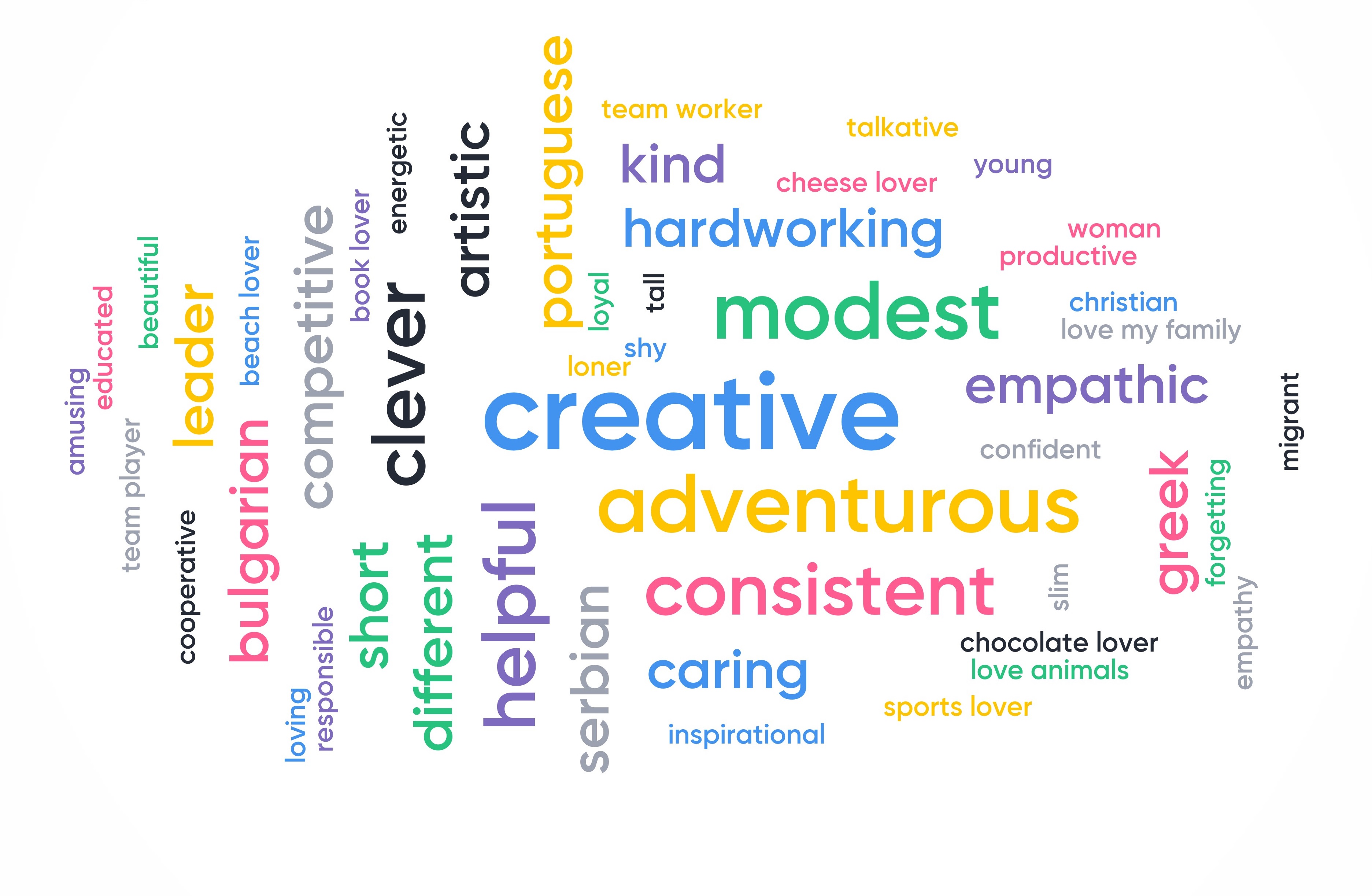 Identity, Active Citizenship and Social Involvement / My identities Identity, Active Citizenship and Social Involvement / My identities | |||||||||||||||||||||||||||||||||||||
| Developed by | PROSVETA | |||||||||||||||||||||||||||||||||||||
| Duration | 45 | |||||||||||||||||||||||||||||||||||||
| Energizers |  9 - Balloon pop 9 - Balloon pop Have everyone form a circle. Instruct the participants to put one piece of information about themselves, e.g. I have 2 sisters, or my mother is called Samy, on a small slip of paper, fold it, and put it in a blown up balloon. Throw the balloons in the middle of the circle and then have people take turns popping a balloon, reading the piece of paper, and guessing to whom the information applies. Participants could wander round the room asking ‘yes/ no’ questions to the other participants but not exactly the statement from the paper slip, e.g. they cannot ask “Have you got 2 sisters? But could ask “Have you got sisters?” and then “Have you got more than 1 sister?’, “Have got less than 3 sisters?”, etc. Game finishes when all participants have identified the author of the paper slip they have. *Note: this exercise should be used if there is enough time. | |||||||||||||||||||||||||||||||||||||
| Relaxing Exercises |  5 - Use a word that describes their feelings/thoughts 5 - Use a word that describes their feelings/thoughts Students are asked to close their eyes (if comfortable) for a minute and think of a word that describes their feelings/thoughts after finishing the resource. Then the students open their eyes and one by one say their word to the classroom | |||||||||||||||||||||||||||||||||||||
| Objectives |
| |||||||||||||||||||||||||||||||||||||
| Preparation | Preparation:
Required materials: sticky tape Required equipment: laptop, projector, loudspeakers for the video (step 4) | |||||||||||||||||||||||||||||||||||||
| Introduction | A person's identity is composed of both an 'I' and a 'we'. The 'I' finds itself in love, work, and pleasure, but it also locates itself within some meaningful group identity - a tribe, a community, a 'we.' Students watch the introductory video for module "Active Citizenship and Social Involvement". 5' | |||||||||||||||||||||||||||||||||||||
| Methodology |
The printed posters IAC1_1 on A4 size paper are stuck on the walls of the classroom. Pupils walk around and whenever they see a characteristic they consider it applies to them, they write their name on the poster. 10’
| |||||||||||||||||||||||||||||||||||||
| Reflection | Guided reflection: 5’
| |||||||||||||||||||||||||||||||||||||
| Notes | Activity 3 is about making pupils understand that we all live in society, in a community – the class, the school, the neighborhood. We are all different and that is fantastic, but we share some characteristics with other people. Everyone belongs to a group considering one or more characteristics. Whatever your likes/dislikes/ inborn characteristics are, you will always find someone who has similar interests or characteristics. Activity 5
| |||||||||||||||||||||||||||||||||||||
| Digital Resource | IAC1_1 - posters yesii.eu/atividades/pdf/33_IAC1_1.pdf IAC1_2 - video yesii.eu/atividades/digital/33/IAC1_2_My identities.ppsx | |||||||||||||||||||||||||||||||||||||
| 62 | ||||||||||||||||||||||||||||||||||||||
 | ||||||||||||||||||||||||||||||||||||||
| 2 | 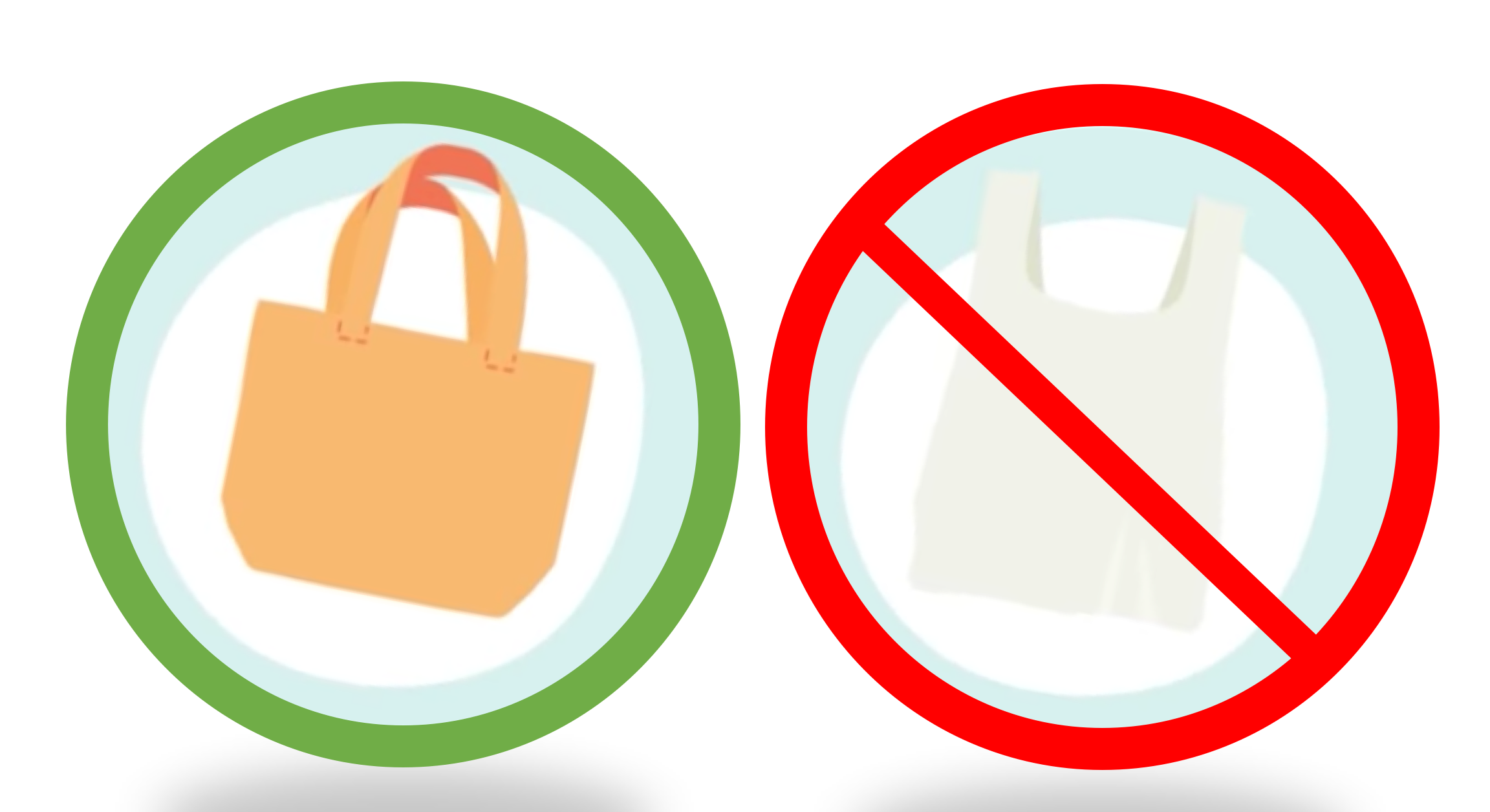 Identity, Active Citizenship and Social Involvement / IAC2 - Active Citizenship at school Identity, Active Citizenship and Social Involvement / IAC2 - Active Citizenship at school | |||||||||||||||||||||||||||||||||||||
| Developed by | IPSantarém: Ana Da Silva |Ana Torres|Bento Cavadas | |||||||||||||||||||||||||||||||||||||
| Duration | 60 | |||||||||||||||||||||||||||||||||||||
| Energizers |  16 - Back to back 16 - Back to back Participants find a pair of similar size and weight. They sit on the floor, back to back with their pair. They hold their arms. They have to get up, while keeping the arms and backs together. After trying once-twice with their pair they switch pairs. They can repeat this process with other pairs for a few times. | |||||||||||||||||||||||||||||||||||||
| Relaxing Exercises |  2 - Progressive muscle relaxation 2 - Progressive muscle relaxation To release tension from head to toe, students are asked to close their eyes (if comfortable) and focus on tensing and relaxing each muscle group for two to three seconds each. The teacher guides the students; he/she asks them to start with the feet and toes, then move up to the knees, thighs, rumps, chest, arms, hands, neck, jaw, and eyes—all while maintaining deep, slow breaths. Kelly Roper | |||||||||||||||||||||||||||||||||||||
| Objectives | Students will learn:
| |||||||||||||||||||||||||||||||||||||
| Preparation | Suggested reading: Plastic Free July – Be Part of the Solution My challenge choices GETTING https://www.plasticfreejuly.org/wp-content/uploads/2019/06/Plastic-Free-July_Action-Picker_Getting-started.pdf Sea Change (2015). Ocean Literacy. The European Union’s Horizon 2020 Framework Programme for Research and Innovation (H2020-BG-2014-1). Disponível em http://seachangeproject.eu/seachange-about-2/ocean-literacy SDG 14 | https://sustainabledevelopment.un.org/sdg14 Documentary Midway Movie | https://vimeo.com/30919668 Materials: Flipchart papers Crayons | |||||||||||||||||||||||||||||||||||||
| Introduction | To be active citizens, students should be engaged in collective actions in order to contribute to solve a local or global problem. It’s very important for them to act on the problem. With that aim, their participation must be valued in every phase of the collective action. Students watch the introductory video for module "Active Citizenship and Social Involvement". | |||||||||||||||||||||||||||||||||||||
| Methodology | NFE Tool (Team work and Artistic Creation)
After all posters are ready, students should post them in public places at the school. The goal is to alert other children about what they can do to reduce plastic pollution. | |||||||||||||||||||||||||||||||||||||
| Reflection | Teachers should ask the children how they can contribute individually to diminish the plastic waste and to alert others to do the same. | |||||||||||||||||||||||||||||||||||||
| Notes | ||||||||||||||||||||||||||||||||||||||
| Digital Resource | IAC2Game - My choises can make a difference | |||||||||||||||||||||||||||||||||||||
| 63 | ||||||||||||||||||||||||||||||||||||||
 | ||||||||||||||||||||||||||||||||||||||
| 3 |  Identity, Active Citizenship and Social Involvement / AC and the protection of the environment Identity, Active Citizenship and Social Involvement / AC and the protection of the environment | |||||||||||||||||||||||||||||||||||||
| Developed by | AENAO | |||||||||||||||||||||||||||||||||||||
| Duration | 60 | |||||||||||||||||||||||||||||||||||||
| Energizers |  18 - Mosquito game 18 - Mosquito game The group stands in a circle and the facilitator tells a story about a plague of mosquitoes and that everybody has to kill the mosquitoes so as they don’t get malaria. The facilitator puts up a mosquito on the head of a person who must lower in order to avoid the mosquito. The two persons next to that person must clap their hands above his/her head to kill the mosquito, but the mosquito escapes and it goes on. When the group is already doing the game well and quickly, the facilitator will add more mosquitoes until it is almost impossible for the group to catch as many mosquitoes. | |||||||||||||||||||||||||||||||||||||
| Relaxing Exercises |  8 - Seasons of the year 8 - Seasons of the year All players sit in a circle, but not too close to one another. The teacher moves like a plant during the seasons of the year. Winter: the plants are small, weak and are crunched together on the ground. Spring: through the stronger sunshine, the plants grow slowly and slowly rise. Summer: through the warm sun, the plants slowly open their arms, the flowers open their blooms are stand up straight. Autumn: the sun rays become weaker. The plants begin to slowly shrivel, the blooms and leaves begin to fall away. | |||||||||||||||||||||||||||||||||||||
| Objectives |
| |||||||||||||||||||||||||||||||||||||
| Preparation |
The ecological footprint explained
Video projector, pen and copy of IAC3_Questionnaire for each student
- When the students answer the questionnaire, it is preferably to use an outdoor space or large indoor space. - If required, teacher can assist students while they answer the questionnaire. | |||||||||||||||||||||||||||||||||||||
| Introduction |
Duane Elgin “The greatest threat to our planet is the belief that someone else will save it.” Robert Swan | |||||||||||||||||||||||||||||||||||||
| Methodology | NFE Tool Questionnaire - adapted and modified from Handbood for Action against Climate Change, pg 26-28 Introduction Step: Students watch the introductory video of Identity and Active Citizenship prior to the activity IAC_Intro. (5') 1. Teacher first shows IAC3_Environment and explains to the students what an ecological footprint is. He/she also needs to focus on the fact students are not to feel guilty but to realise which areas they can improve. For each question, students should consider for themselves which answer to give. If they are not sure which answer to give, they should ask the teacher, or estimate, or else take the average answer. (10’) 2. Students are given a copy of the IAC3_Questionnaire and stand in a line. Teacher reads one question at a time - students mark their answers on the questionnaire and take the required steps forward. (15’) 3. When all questions are read, students can observe where they are. They come together in a group. (5’) * Optional: Students can sum up their results, either in the classroom or at home with their parents. The calculation can be done in two ways. 1st option is to calculate the corresponding points which are shown right next to the steps. The result is the ecological footprint. 2nd option is to calculate the number of steps and multiply by 10 in order to get the final result which is the ecological footprint.Teacher explains what the numbers are and allows students to compare their results with the global average. For results, kindly consult pg 26 of the Handbood for Action against Climate Change 4. Teacher shows IAC3 - Tips and discuss briefly the ways to become more eco-friendly. (5') | |||||||||||||||||||||||||||||||||||||
| Reflection |
Teacher asks students in the plenary: (a) Was it confusing to calculate your footprint? (b) How did you feel when you were taking the maximum number of steps? (c) How did you feel when you found out about your personal ecological footprint? (d) Do you think that there are things that can change in your daily life in order to reduce your footprint? (10’) | |||||||||||||||||||||||||||||||||||||
| Notes | - | |||||||||||||||||||||||||||||||||||||
| Digital Resource | ||||||||||||||||||||||||||||||||||||||
| 64 | ||||||||||||||||||||||||||||||||||||||
 | ||||||||||||||||||||||||||||||||||||||
| 4 | 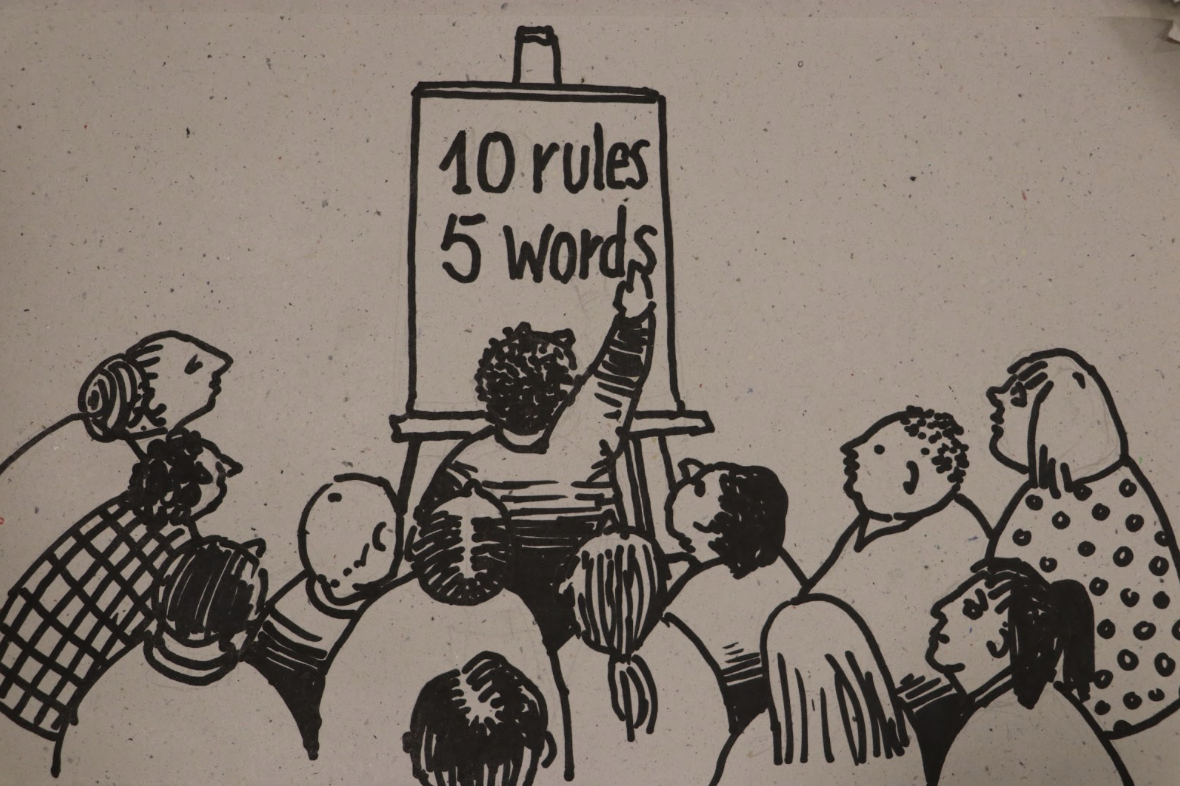 Identity, Active Citizenship and Social Involvement / AC in combatting violence Identity, Active Citizenship and Social Involvement / AC in combatting violence | |||||||||||||||||||||||||||||||||||||
| Developed by | IPSantarém: Ana da Silva | |||||||||||||||||||||||||||||||||||||
| Duration | 55 | |||||||||||||||||||||||||||||||||||||
| Energizers |  16 - Back to back 16 - Back to back Participants find a pair of similar size and weight. They sit on the floor, back to back with their pair. They hold their arms. They have to get up, while keeping the arms and backs together. After trying once-twice with their pair they switch pairs. They can repeat this process with other pairs for a few times. | |||||||||||||||||||||||||||||||||||||
| Relaxing Exercises |  5 - Use a word that describes their feelings/thoughts 5 - Use a word that describes their feelings/thoughts Students are asked to close their eyes (if comfortable) for a minute and think of a word that describes their feelings/thoughts after finishing the resource. Then the students open their eyes and one by one say their word to the classroom | |||||||||||||||||||||||||||||||||||||
| Objectives |
| |||||||||||||||||||||||||||||||||||||
| Preparation | There are some films/cartoons that can help the facilitator to prepare him/herself for this activity. https://www.youtube.com/watch?v=pzKXRuKNd8Q https://www.youtube.com/watch?v=UAwqkIzKK08 | |||||||||||||||||||||||||||||||||||||
| Introduction | Students watch the introductory video for module "Acive Citizenship and Social Involvement". Violence does not solve anything, however, currently, we watch it every day, in different ways, often without realizing it, so it is important to be aware and active. It often happens at school, often in the school playground, at lunch time, at the entrance of the school, etc. Children are capable of causing pain, with and without awareness of the act and without putting themselves in the place of others. >The negative consequences that violent behavior can have on the physical and psychological development of the children involved should be discussed as well as strategies to prevent or stop violence. | |||||||||||||||||||||||||||||||||||||
| Methodology | NFE Tool (Blue skies thinking method, pair work)
| |||||||||||||||||||||||||||||||||||||
| Reflection | Ask participants
| |||||||||||||||||||||||||||||||||||||
| Notes | ||||||||||||||||||||||||||||||||||||||
| Digital Resource | ||||||||||||||||||||||||||||||||||||||
| 65 | |||||||||||||||||||||||||||||||||||||||||
 | |||||||||||||||||||||||||||||||||||||||||
| 5 |  Identity, Active Citizenship and Social Involvement / AC in protecting those in need Identity, Active Citizenship and Social Involvement / AC in protecting those in need | ||||||||||||||||||||||||||||||||||||||||
| Developed by | IPSantarém: Ana Da Silva | Ana Torres | Maurício D | ||||||||||||||||||||||||||||||||||||||||
| Duration | 60 | ||||||||||||||||||||||||||||||||||||||||
| Energizers |  7 - Connecting eyes 7 - Connecting eyes Participants stand in a circle. Each person makes eye contact with another person across the circle. The two walk across the circle and exchange positions, while maintaining eye contact. Many pairs can exchange at the same time, and the group should try to make sure that everyone in the circle is included in the exchange. Tip: Begin by trying this in silence and then exchange greetings in the middle of the circle. Variations: If the teacher considers, knowing the class atmosphere, that some students might be left not participating, i.e. they try to make eye contact but nobody responds to them and they have no chance to move from their initial position, the moderator could divide the class in 2 groups and introduce a competitive element – after the activity each group will be marked on the ‘team spirit thermometer’ (which could be printed on a A4 paper and the teacher marks the degrees with a marker). The more people you have left not participating in the ‘eye contact’ activity – the lower the degrees to be marked on the thermometer. | ||||||||||||||||||||||||||||||||||||||||
| Relaxing Exercises |  17 - Circle massage 17 - Circle massage The group forms a circle and faces one direction. Each participant places his/her hands on the shoulders of the person in front of her/him. Each person then gives the person who is in front a shoulder massage. The person being massaged can give a feedback. After a few minutes, the group turns the other way so that the person who has been making the massage is then receiving it in return. | ||||||||||||||||||||||||||||||||||||||||
| Objectives |
| ||||||||||||||||||||||||||||||||||||||||
| Preparation | Documents that can help to deepen the duty to protect persons https://europa.eu/european-union/topics/human-rights_en | ||||||||||||||||||||||||||||||||||||||||
| Introduction | Students watch the introductory video for module "Acive Citizenship and Social Involvement". When we grow up, it is important to realize that everyone has the right to be protected and to see their needs met and that this often involves being more attentive to the needs of the people around us, decentralizing ourselves from our own needs, seeing the world in an increasingly complex and integrated way. It is important to reflect on different situations in which people need to be protected and what can be done in those situations. 3´ | ||||||||||||||||||||||||||||||||||||||||
| Methodology | NFE Tool - (Tema work and Artistic Creation)
| ||||||||||||||||||||||||||||||||||||||||
| Reflection | Facilitator can ask the following questions to the group: 5´
| ||||||||||||||||||||||||||||||||||||||||
| Notes | |||||||||||||||||||||||||||||||||||||||||
| Digital Resource | |||||||||||||||||||||||||||||||||||||||||
| 66 | ||||||||||||||||||||||||||||||||||||||
 | ||||||||||||||||||||||||||||||||||||||
| 6 | 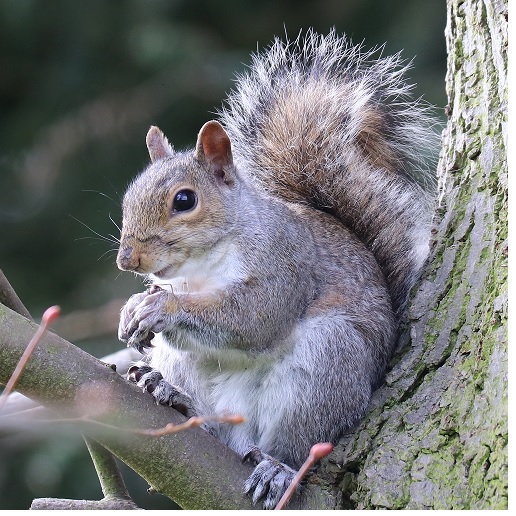 Identity, Active Citizenship and Social Involvement / AC in respecting and protecting animals (outdoor activities) Identity, Active Citizenship and Social Involvement / AC in respecting and protecting animals (outdoor activities) | |||||||||||||||||||||||||||||||||||||
| Developed by | PROSVETA | |||||||||||||||||||||||||||||||||||||
| Duration | 60 | |||||||||||||||||||||||||||||||||||||
| Energizers |  2 - Moo!!! 2 - Moo!!! The teacher assigns randomly in a piece of paper (turned upside down on their desks) each student with farm animal, i.e. ‘cow’, ‘horse’, ‘sheep’, ‘rooster’, etc. Once the students are informed of their animal role, they are instructed to walk around the room acting like the animal they are assigned (i.e. making its sound), in order to find their kind. | |||||||||||||||||||||||||||||||||||||
| Relaxing Exercises |  5 - Use a word that describes their feelings/thoughts 5 - Use a word that describes their feelings/thoughts Students are asked to close their eyes (if comfortable) for a minute and think of a word that describes their feelings/thoughts after finishing the resource. Then the students open their eyes and one by one say their word to the classroom | |||||||||||||||||||||||||||||||||||||
| Objectives | Teaching children to care for and respect animal life lets them know the importance of being kind to all creatures, whether great or small. Learning kindness to animals at an early age can benefit children as it helps them become better and more compassionate individuals as they grow. | |||||||||||||||||||||||||||||||||||||
| Preparation |
| |||||||||||||||||||||||||||||||||||||
| Introduction | Compassion for animals is intimately associated with goodness of character, and it may be confidently asserted that he who is cruel to animals cannot be a good man. Students watch the introductory video for module "Acive Citizenship and Social Involvement". 5' | |||||||||||||||||||||||||||||||||||||
| Methodology | Organize an outdoor observation walk (to a local park/fields/forest) aimed at teaching pupils to observe animals in their natural setting without disturbing them. Part of effectively teaching pupils to respect animals is to make them learn how to observe animals in their natural setting. This means simply looking at them and taking note of their behavior or appearance without disturbing or scaring them away. Ask them to observe without touching. Pupils could take notes of how the animals are behaving, take photos/videos with their mobiles, draw what they see, etc. Recorded visual materials might also be used in Nature Studies lessons or any other cross-curricular activities. Suggested observations:
Pupils work individually or in pairs and keep track of their observations in the provided observation table IAC6.1_1 (to be printed beforehand). | |||||||||||||||||||||||||||||||||||||
| Reflection | Pupils report about their observations with facts from the observation tables, share pictures, photos and videos they have taken or mirror the behaviour of the animals they have observed. The latter is something kids love to do (e.g. stepping in the shoes of the sparrows from AC6.1_2) 10' | |||||||||||||||||||||||||||||||||||||
| Notes | Timing: Outdoor activities: 35 min. or as much time you have. Reflection: 10 min. (could be done outdoors or indoors in the classroom) The activity is to be done outdoors during a school trip or a specially organized outing. The overall duration will vary depending on the distance to the site you visit. Once you are there, the duration of the activity is 35 min. Tips: What to do in case students spot a living creature (and manage to take a photo of it), e.g. a bug (beetle, ladybug, cricket) but don’t know its name, and nobody, including the teacher, can name it? It is easy – use Google Lens (IAC6.1_GoogleLens instructions) Follow up: Pupils might launch a DIY project of making bird water feeder from a plastic bottle (tutorial: AC6.1_3) | |||||||||||||||||||||||||||||||||||||
| Digital Resource | AC6.1_1 - observation table yesii.eu/atividades/pdf/38_AC6.1_1 Observation table.pdf AC6.1_2 - video yesii.eu/atividades/videos/38_IAC6.1_2 EN.mp4 AC6.2_3 - video yesii.eu/atividades/digital/38/IAC6.1_3 EN.mp4 Instruction: How to use Google Lens http://yesii.eu/atividades/pdf/38_IAC6_Google Lens instructions_en.pdf | |||||||||||||||||||||||||||||||||||||
| 67 | ||||||||||||||||||||||||||||||||||||||
 | ||||||||||||||||||||||||||||||||||||||
| 6 | ||||||||||||||||||||||||||||||||||||||
| Developed by | PROSVETA | |||||||||||||||||||||||||||||||||||||
| Duration | 60 | |||||||||||||||||||||||||||||||||||||
| Energizers |  15 - Animal roundup 15 - Animal roundup The teacher tells to the class to silently think of an animal. Then he/she tells to the group that without talking, they need to arrange themselves on a line from largest to smallest animals. Group members can only make gestures and the noise of their animal. After they have finished, teacher ask to the students to say the animal they were supposed to be to see if the order is correct. | |||||||||||||||||||||||||||||||||||||
| Relaxing Exercises |  6 - Bee breathing 6 - Bee breathing The teacher instructs the students to get in a comfortable position to practice bee breathing. They have to imagine that they are sitting on a leaf or a flower petal, to sit straight and allow the leaf or petal to gently support them. The teacher gives students the following instructions: Breathe in, allowing the air to just gently come in through your nose, filling up your lungs. As you breathe out, buzz like a bee. See how long your buzz can last. See how far your bee is going to fly before sitting down and resting again. Buzz. Buzz. Buzz. On the next breath, see if your bee can fly with a loud, strong buzz. On the next breath, see if your bee can fly with a soft buzz. When the exercise is finished, the teacher gives time for a short discussion: Does it feel different with a strong or a soft buzz? How does your body feel? Optional (use if time allows): After breathing practice, draw a picture of a bumblebee and the leaf or flower that you were “sitting on” in your imagination. This picture can be used as a relaxation practice reminder. When you see the picture, practice being like a Bee on a leaf and practice a Bee breath. | |||||||||||||||||||||||||||||||||||||
| Objectives | Teaching children to care for and respect animal life lets them know the importance of being kind to all creatures, whether great or small. Learning kindness to animals at an early age can benefit children as it helps them become better and more compassionate individuals as they grow. Through planning the "Clean Up" activities student will improve their analytical and presentation skills. | |||||||||||||||||||||||||||||||||||||
| Preparation | Required equipment: projector and loud speakers Required materials:
| |||||||||||||||||||||||||||||||||||||
| Introduction | Only when we have become nonviolent towards all life will we have learned to live well with others. Cesar Chavez Students watch the introductory video for module "Acive Citizenship and Social Involvement".5' | |||||||||||||||||||||||||||||||||||||
| Methodology |
NFE tools: discussion, team work, artistic creation, brain storming.
Encourage pupils to clean up any litter that they find on the playground, in the park or in the yard. Explain that cats and dogs can get poisoned from seemingly innocuous items such as chocolate, cleaning products, batteries. Small birds can choke on small pieces of plastic, while ducks, fish, and other creatures that live in the water can be harmed by plastic soda rings and other trash. Ask students to share any stories they know about cleaning up litter to help animals or cases they know about animals being harmed due to litter.
2.1. Watch the video AC6.2_1 Lilly’s Plastic Pickup 5’ 2.2. Plan a similar campaign in the school yard/local park/ neighborhood. Students can choose between working in a group or planning personal activities like the girl from the video. Students who prefer to work on their own, start planning their activities. The remaining part of the class is divided in big groups of ca. 10 people. The task is to plan a “Clean Up Day”. They have to come up with all the details of the campaign, e.g. what is to be cleaned, what materials/equipment is needed (if any), meeting point, timing, etc.. After agreeing on the details, they have to create a poster to advertise it (or present it) to the rest of the school. 15’
3.1. Watch the video AC6.2_2 Become an animal rescue volunteer. 5’ 3.2. Pupils discuss what they can do to help animals and show them they care, love and respect them taking ideas from the video or come up with their own ideas. 5’ | |||||||||||||||||||||||||||||||||||||
| Reflection | Six thinking hats (Eduard de Bono) – guided reflection: Thinking about past and future events and decisions can be very frustrating. Life is a complex thing and everything might seem to be mixed up and complicated. It is usually a good idea to distinguish between the different aspects of an event or a decision in order to see the real picture. Here is how we can do it. Imagine that when you put on a hat of specific colour, you consider only one aspect of a case or a decision. 5’
| |||||||||||||||||||||||||||||||||||||
| Notes | As a follow-up of the training the teacher could hold another session and choose to do the following activities:
| |||||||||||||||||||||||||||||||||||||
| Digital Resource | AC6.2_1 - video youtu.be/k84pC1ISfzo AC6,2_2 - video youtu.be/CH28yx8B1wU | |||||||||||||||||||||||||||||||||||||
| 68 | ||||||||||||||||||||||||||||||||||||||||||||||||||||||||||||||||||||||||||||||||||||||||||||||||||
 | ||||||||||||||||||||||||||||||||||||||||||||||||||||||||||||||||||||||||||||||||||||||||||||||||||
| 7 |  Identity, Active Citizenship and Social Involvement / AC in Europe (our European Values) Identity, Active Citizenship and Social Involvement / AC in Europe (our European Values) | |||||||||||||||||||||||||||||||||||||||||||||||||||||||||||||||||||||||||||||||||||||||||||||||||
| Developed by | PROSVETA | |||||||||||||||||||||||||||||||||||||||||||||||||||||||||||||||||||||||||||||||||||||||||||||||||
| Duration | 60 | |||||||||||||||||||||||||||||||||||||||||||||||||||||||||||||||||||||||||||||||||||||||||||||||||
| Energizers |  21 - Name game with balls 21 - Name game with balls Students stand in a circle. The teacher gives a ball to one of the students. He/she holds the ball, then says the name of another participant and passes them the ball. After a few passes, the teacher adds one more ball in the game, and then – another one. This way there will be 2/3/4 balls in the air at a time and all participants will be calling each other’s names | |||||||||||||||||||||||||||||||||||||||||||||||||||||||||||||||||||||||||||||||||||||||||||||||||
| Relaxing Exercises |  3 - Guided breathing 3 - Guided breathing Teacher asks the students to close their eyes (if comfortable), inhale for a count of four, then exhale for a count of four (all through the nose, which adds a natural resistance to the breath). Then, with one hand on the chest and the other on the belly, the students can take a deep breath in through the nose and exhale through the mouth, ensuring this way that the diaphragm (not the chest) inflates with enough air to create a stretch in the lungs Jordan Shakeshaft | |||||||||||||||||||||||||||||||||||||||||||||||||||||||||||||||||||||||||||||||||||||||||||||||||
| Objectives | Students will:
| |||||||||||||||||||||||||||||||||||||||||||||||||||||||||||||||||||||||||||||||||||||||||||||||||
| Preparation | Equipment: laptop and projector for IAC7_1; Preparation - printed deliverables: | |||||||||||||||||||||||||||||||||||||||||||||||||||||||||||||||||||||||||||||||||||||||||||||||||
| Introduction | Values are the fundamentals of society. They significantly influence our actions and choices. They are the foundation of everyday life. Students watch the introductory video for module "Acive Citizenship and Social Involvement". 5' | |||||||||||||||||||||||||||||||||||||||||||||||||||||||||||||||||||||||||||||||||||||||||||||||||
| Methodology |
2.1. Firstly, the students fill in only the left column with their answers. 10' Answers will vary but you can see a pre-filled table with a few examples below: What types of books do you like to read?
What subjects do you like in school?
What motivates you?
2.2. Students are asked to think why they love all these things. This will link the things they like to their values. Pupils are asked to fill in the right column with their answers choosing from the non-exclusive list of values (provided in IAC7_2) . 15' Answers will vary but here is a pre-filled table with possible examples: What types of books do you like to read?
What subjects do you like in school?
What motivates you?
This activity is a way to support students to identify what their core values are and learn that they are part of their everyday life. | |||||||||||||||||||||||||||||||||||||||||||||||||||||||||||||||||||||||||||||||||||||||||||||||||
| Reflection | Guided reflection: 10' The printed flashcards with emotions (IAC7_3) are placed round the classroom. The teacher asks the pupils: 1. How did you feel during the training? Pupils go to one of the spaces marked with the feeling which represents their overall emotion regarding the training activity as a whole: 1. Interested ; 2. Content; 3. Confused; 4. Surprised; 5. Excited; 6. Happy; 7. Embarrassed; 8. Nervous. When pupils split in the groups, they share in the group why they chose this feeling. After that one representative of the group reports to the other groups the why the pupils from his group have chosen the corresponding feeling. | |||||||||||||||||||||||||||||||||||||||||||||||||||||||||||||||||||||||||||||||||||||||||||||||||
| Notes | ||||||||||||||||||||||||||||||||||||||||||||||||||||||||||||||||||||||||||||||||||||||||||||||||||
| Digital Resource | IAC7_1 - video yesii.eu/atividades/digital/39/IAC7_1.ppsx IAC7_2 - handout yesii.eu/atividades/pdf/39_IAC7_2.pdf IAC7_3 - flashcards with emotions yesii.eu/atividades/pdf/39_IAC7_3.pdf | |||||||||||||||||||||||||||||||||||||||||||||||||||||||||||||||||||||||||||||||||||||||||||||||||
| 69 | ||||||||||||||||||||||||||||||||||||||
 | ||||||||||||||||||||||||||||||||||||||
| 8 | 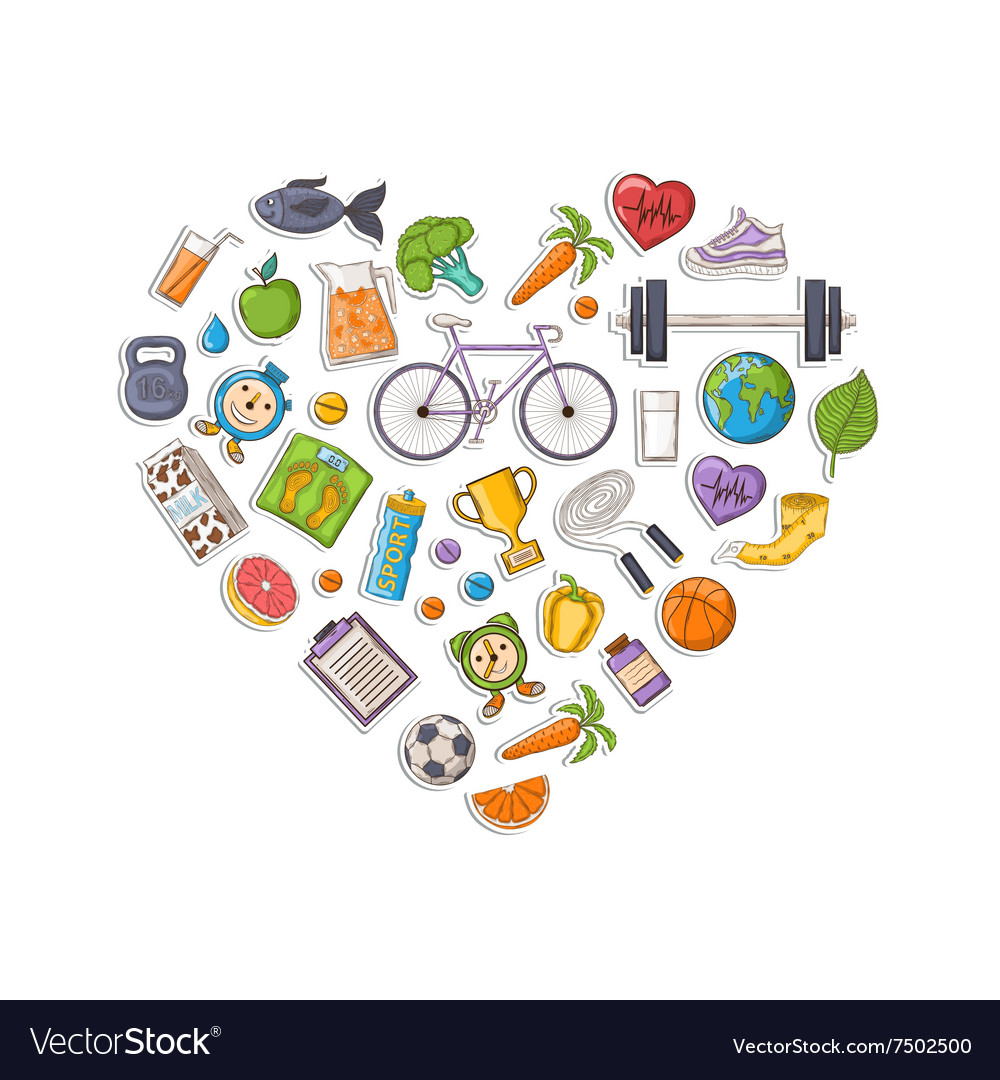 Identity, Active Citizenship and Social Involvement / AC in healthy living Identity, Active Citizenship and Social Involvement / AC in healthy living | |||||||||||||||||||||||||||||||||||||
| Developed by | AENAO | |||||||||||||||||||||||||||||||||||||
| Duration | 55 | |||||||||||||||||||||||||||||||||||||
| Energizers |  15 - Animal roundup 15 - Animal roundup The teacher tells to the class to silently think of an animal. Then he/she tells to the group that without talking, they need to arrange themselves on a line from largest to smallest animals. Group members can only make gestures and the noise of their animal. After they have finished, teacher ask to the students to say the animal they were supposed to be to see if the order is correct. | |||||||||||||||||||||||||||||||||||||
| Relaxing Exercises |  7 - Strong as a tree 7 - Strong as a tree All students spread out in the room. With their feet firmly planted on the ground, they pretend they are trees that are slowly swaying back and forth with a breeze. The movements become stronger as a storm approaches. The students try to make their movements as strong as possible, but remember to keep their feet on the ground. Slowly the wind dies down and the trees can rest. | |||||||||||||||||||||||||||||||||||||
| Objectives |
| |||||||||||||||||||||||||||||||||||||
| Preparation |
Markers in different colours, big sheets (or A4) of paper.
Optional: Teacher can ask students (right after reflection) to actually apply some of the aspects of healthy living for a week (eg reduce TV time, go for a walk with their parents, study on time so that they reduce their stress, prepare their own breakfast, go to sleep early, etc). They can discuss the benefits the following week. | |||||||||||||||||||||||||||||||||||||
| Introduction | Take care of your body. It’s the only place you have to live. Jim Rohn | |||||||||||||||||||||||||||||||||||||
| Methodology | NFE Tool Brainstorming, team work, artistic creation Introduction Step: Students watch the introductory video of Identity and Active Citizenship prior to the activity IAC_Intro. (5') 1. Students watch IAC8 – Healthy Oliver (5’) 2. Teacher asks students to brainstorm about three major pillars of healthy living: a) Nutrition b) Exercise c) Mental health (eg not to be stressed when studying for an exam) Their brainstorming will conclude in ways to help Oliver so that he feels better and be healthy (10’) 3. Teacher divides students in 3 groups according to the 3 major pillars mentioned above. Group A. Nutrition Group B. Exercise Group C. Mental health 4. Each group creates a poster that shows the healthy model of the group (15’) 5. The groups present the posters. Can these models provide a healthy living to Oliver (and hence themselves)? (5’) | |||||||||||||||||||||||||||||||||||||
| Reflection |
Teacher asks students in the plenary: (a) Was it difficult to identify the aspects of healthy living? (b) Do you think that you will be able to apply some of these aspects (if you are not doing so already)? If yes, which ones? (5’) | |||||||||||||||||||||||||||||||||||||
| Notes | - | |||||||||||||||||||||||||||||||||||||
| Digital Resource | ||||||||||||||||||||||||||||||||||||||
| 70 | ||||||||||||||||||||||||||||||||||||||
 | ||||||||||||||||||||||||||||||||||||||
| 9 |  Identity, Active Citizenship and Social Involvement / AC and volunteering Identity, Active Citizenship and Social Involvement / AC and volunteering | |||||||||||||||||||||||||||||||||||||
| Developed by | AENAO | |||||||||||||||||||||||||||||||||||||
| Duration | 65 | |||||||||||||||||||||||||||||||||||||
| Energizers |  1 - Break the Circle 1 - Break the Circle The teacher assigns randomly a number to each student, depending on the group size, i.e. for 20 students, numbers 1-4 are ok, so each group has 5 people (groups could be synthesized by the students with the same number, i.e. all having been assigned number ‘1’ or by students where each one has his/her own unique number 1-4; similarly and more fun is grouping by ingredient for a Greek salad, where every student is i.e. ‘tomato’, ‘cucumber’, ‘onion’, ‘oregano’, etc.) Once the groups have been formed, they make circles and the teacher randomly picks a number (or an ingredient) to step out of the circle and try to break in, while the others remaining are instructed to not let go of their hands no matter what. This can be repeated once more with another number stepping out. | |||||||||||||||||||||||||||||||||||||
| Relaxing Exercises |  17 - Circle massage 17 - Circle massage The group forms a circle and faces one direction. Each participant places his/her hands on the shoulders of the person in front of her/him. Each person then gives the person who is in front a shoulder massage. The person being massaged can give a feedback. After a few minutes, the group turns the other way so that the person who has been making the massage is then receiving it in return. | |||||||||||||||||||||||||||||||||||||
| Objectives |
| |||||||||||||||||||||||||||||||||||||
| Preparation |
Volunteering, pg 4-5
Whiteboard/flipchart, markers, printed IAC9_Plan | |||||||||||||||||||||||||||||||||||||
| Introduction | The term “volunteering” is used to describe an altruistic activity where an individual or group provides services to another individual or group for no financial or social gain. “Volunteers are not paid - not because they are worthless, but because they are priceless.” (A volunteer’s quote) | |||||||||||||||||||||||||||||||||||||
| Methodology |
NFE Tool Brainstorming, Discussion in groups, team work Introduction Step: Students watch the introductory video of Identity and Active Citizenship prior to the activity IAC_Intro. (5')
* Teacher ensures that all students are members of a group.
Note: Teacher should be available to volunteer and assist the groups to provide their services. They assign a period of 2-3 weeks as their “volunteering period”. | |||||||||||||||||||||||||||||||||||||
| Reflection |
Teacher asks students in the plenary: (a) Was it difficult to think about your skill(s)? (b) Have you ever thought of offering something as a volunteer? (c) Do you think that volunteering is important in the society? * Optional: if there are offers in step 6 and students actually volunteer during the “volunteering period”, teacher can have a conversation again at the end of this period. He/She can ask students the following: (d) How did you feel when volunteering? (e) To those who were “trained” from others: how did you feel when you were taught a skill that you didn't know before? (5’) | |||||||||||||||||||||||||||||||||||||
| Notes | For partners: Volunteer Stories are available in many languages. Find your own language using the corresponding link on the website OR you can find similar stories in your own country to share with teachers. Teacher and Students can watch the following video (optional) at home - or if there is enough time after the completion of the activity: Pip - A movie for volunteering and helping others (5') | |||||||||||||||||||||||||||||||||||||
| Digital Resource | ||||||||||||||||||||||||||||||||||||||
| 71 | ||||||||||||||||||||||||||||||||||||||
 | ||||||||||||||||||||||||||||||||||||||
| 10 |  Identity, Active Citizenship and Social Involvement / AC and law / democracy Identity, Active Citizenship and Social Involvement / AC and law / democracy | |||||||||||||||||||||||||||||||||||||
| Developed by | AENAO | |||||||||||||||||||||||||||||||||||||
| Duration | 65 | |||||||||||||||||||||||||||||||||||||
| Energizers |  13 - Simon says 13 - Simon says Teacher tells the group that they should follow instructions when he/she starts the instruction by saying “Simon says...”. If the teacher does not begin the instructions with the words “Simon says”, then the group should not follow the instructions! The teacher begins by saying something like “Simon says clap your hands” while clapping their hands. The participants follow. The teacher speeds up the actions, always saying “Simon says” first. After a short while, the “Simon says” is omitted. Those participants who do follow the instructions anyway are ‘out’ of the game. The game can be continued for as long as it remains fun. | |||||||||||||||||||||||||||||||||||||
| Relaxing Exercises |  14 - Give me your energy 14 - Give me your energy The students stand in a circle. The teacher starts, pretending he/she is holding a ball on the hands and passing it to the student on his/her right; this one do the same, until the ball comes back to the teacher. The ball needs to be passed in a gentle way, as it is very precious. At the second round, the teacher passes the ball to students in another side of the circle, making a gesture and a noise. The students will do the same until everyone will have touched the ball at least once. The ball can be passed in any way (in form of kick, kiss…), pretending it becomes bigger or smaller depending on the will of the students. | |||||||||||||||||||||||||||||||||||||
| Objectives |
| |||||||||||||||||||||||||||||||||||||
| Preparation |
Whiteboard/flipchart, markers, printed copies of IAC10_A and IAC10_B. | |||||||||||||||||||||||||||||||||||||
| Introduction |
“Democracy is when the indigent, and not the men of property, are the rulers.” Aristotle “As the straight do not need rules, so the law does not need justice.” Epictetus | |||||||||||||||||||||||||||||||||||||
| Methodology |
NFE Tool Brainstorming, Simulation Introduction Step: Students watch the introductory video of Identity and Active Citizenship prior to the activity IAC_Intro. (5')
After reflection, students do the IAC10 - Quiz. (5’) | |||||||||||||||||||||||||||||||||||||
| Reflection |
Teacher asks students in the plenary: (a) Was it difficult or easy to prepare a new rule? (b) In case of a positive vote (which means that the rule will be applied as set), do you think that there should be consequences to those who disobey? (c) In case of a negative vote, why do think that has happened? Do you think that the result could be different if the rule was different? If yes, in what way? (5’) | |||||||||||||||||||||||||||||||||||||
| Notes | - | |||||||||||||||||||||||||||||||||||||
| Digital Resource | ||||||||||||||||||||||||||||||||||||||
| 72 | ||||||||||||||||||||||||||||||||||||||
 | ||||||||||||||||||||||||||||||||||||||
| 11 |  Identity, Active Citizenship and Social Involvement / AC - protecting my rights and the rights of others; duties and obligations Identity, Active Citizenship and Social Involvement / AC - protecting my rights and the rights of others; duties and obligations | |||||||||||||||||||||||||||||||||||||
| Developed by | PROSVETA | |||||||||||||||||||||||||||||||||||||
| Duration | 65 | |||||||||||||||||||||||||||||||||||||
| Energizers |  4 - Human chain 4 - Human chain Everybody stands up in a circle. They close their eyes and start moving towards the middle of the circle, holding their hands up. Whoever they touch with their hands, they hold and do not let go, so they make a knot. Then the facilitator asks the students to open their eyes and try to untangle themselves (make a circle) without letting go of their hands. | |||||||||||||||||||||||||||||||||||||
| Relaxing Exercises |  1 - Guided fantasy 1 - Guided fantasy Students are asked to close their eyes (if comfortable) and, with the guidance of the facilitator, slowly imagine a scene of the past or future event. More and more details are used to describe the event with all senses and thoughts. A suggested brief script could be à Begin by breathing slowly and deeply… Think of yourself in a place where you feel relaxed and at ease… Create all the details in your mind, what do you see… what the sounds are like, the smells and colors of this special place… Are there any people …? | |||||||||||||||||||||||||||||||||||||
| Objectives | Students will:
| |||||||||||||||||||||||||||||||||||||
| Preparation |
| |||||||||||||||||||||||||||||||||||||
| Introduction | We all have rights, and we all want the others to respect our rights. This results in some obligations we have, and some limitations to our rights. Students watch the introductory video for module "Acive Citizenship and Social Involvement". 5' | |||||||||||||||||||||||||||||||||||||
| Methodology |
We all have rights and we all want to live in a place where everybody respects our rights. Pupils play the game and try to match the images with the corresponding rights. They can do that together as a class activity, discuss the situations and the possible answers. Another option is to have each student (or small groups of 2 or 3 students) play the game on a personal device and answer the questions individually or as a group (DT IAC11_1). 10’
2.1. Students work in couples and each couple comes up with 5 things which, in their opinion, are the most important ones to make them feel well at school, e.g. 1. To be part of the games; 2. Not to be mocked at if I make a mistake when the teacher asks a question; 3. I don’t want anybody to touch the things I put on my desk during the breaks; 4. I don’t want anyone to hurt me; 5. I want all pupils to be kind to each other. Couples write the results of their work on a piece of paper but don’t write their names, and give the papers to the teacher (NFE tool: blue skies thinking). 2.2. The teacher sums up all wishes (grouping the similar ones) and writes down the final list of rules on the board or a flip chart.
3.1. Students are divided in groups of ca. 4 people. Each group needs a laptop to play the interactive case study (IAC11_2). Group members discuss the options at each step and choose one after reaching an agreement. When they finish the game, they discuss the possible drawbacks and advantages of their choices (as suggested in the resource). 10’ 3.2. In the plenary the groups present their stories based on the choices they have made at each step. They talk about the advantages (and/or drawbacks). After the presentation of all stories, the class votes for the best way to behave in this situation. 10’ | |||||||||||||||||||||||||||||||||||||
| Reflection | The teacher puts a long rope (or colored sticky tape) in the floor with a " "sign at one end, and a "-" sign on the other, and explains that the " " sign means YES, and the "-" sign stands for NO. The positions between the signs indicate the respective level of approval/ disapproval. To sum up the training, the teacher asks the students to stand up and answer the following questions by going to the " " or "-" signs. If there is enough time, students could comment why they chose the respective position along the rope. 5'
| |||||||||||||||||||||||||||||||||||||
| Notes | Activity 3.1: if it is not possible to have a computer/ laptop for each group, the activity can be done as a whole class activity – playing the presentation many times, choosing different options for each step (as suggested by students). | |||||||||||||||||||||||||||||||||||||
| Digital Resource | IAC11_1 - Interactive game https://wordwall.net/resource/1930515 IAC11_2 - interactive case study yesii.eu/atividades/digital/43/IAC11_2.ppsx | |||||||||||||||||||||||||||||||||||||
| 73 | ||||||||||||||||||||||||||||||||||||||
 | ||||||||||||||||||||||||||||||||||||||
| 12 |  Identity, Active Citizenship and Social Involvement / Active Citizenship and my personal power to change Identity, Active Citizenship and Social Involvement / Active Citizenship and my personal power to change | |||||||||||||||||||||||||||||||||||||
| Developed by | IPSantarém: Ana Da Silva | Ana Torres | Maurício D | |||||||||||||||||||||||||||||||||||||
| Duration | 60 | |||||||||||||||||||||||||||||||||||||
| Energizers |  17 - Toaster or Rock Star 17 - Toaster or Rock Star The group starts in a circle with one person in the center. The person in the center points at someone in the circle and says “Toaster” or “Rock star”.
| |||||||||||||||||||||||||||||||||||||
| Relaxing Exercises |  13 - Body massage 13 - Body massage The students stand in a circle: they need to follow all the movement the teacher does and massage themselves. The teacher starts to massage different parts of his/her body, starting from the head till the feet (it’s better if they take off their shoes). The teacher explains how the massage needs to be done, if delicate or more energetic. Optional: The teacher can also ask to the students to massage another classmate. | |||||||||||||||||||||||||||||||||||||
| Objectives | Identify positive and negative moods (state of mind, what we feel in each moment); Reflect on one’s power to change his own negative mood and other people’s moods into positive ones; Refresh the awareness that positive moods are fundamental for everyone’s well-being and for changing the difficulties and problems into challenges. | |||||||||||||||||||||||||||||||||||||
| Preparation | This author can help to reflect upon this activity: https://www.theemotionmachine.com/how-to-use-the-power-of-emotional-contagion-to-change-your-mood/ | |||||||||||||||||||||||||||||||||||||
| Introduction | The moods lead us to act in certain ways, being able to open or close opportunities for a better life (relationships with other people, school performance, employment, health, etc.). Being an active citizen for change means doing things and coordinating our actions to achieve certain goals for greater well-being: ours and others. So it is important to think that we are able to transform our mood when we do not feel well and having empathy to make conexion with others to understand and help transform their mood, trying to see things from a positive or at least less negative perspective. Students watch the introductory video for module "Acive Citizenship and Social Involvement". | |||||||||||||||||||||||||||||||||||||
| Methodology | NFE Tool Roll Play
| |||||||||||||||||||||||||||||||||||||
| Reflection | What strategies did you use to stimulate the mood change? Do you think that negative moods often block us? How can negative moods affect us and our environment? You can remind participants that often our mood (negative or positive) is contagious: when I am suspicious I inspire distrust in other people and when I am confident I inspire confidence around me. That is why it is so important to develop the power to change our moods and understand the other person's moods because not only a person’s negative mood conditions his/her actions but it also can affect the mood and actions of everyone around. 5' | |||||||||||||||||||||||||||||||||||||
| Notes | Play the Game Positive moods: trust, hope, acceptance, insight, resolution, serenity, ambition Negative moods: distrust, hopelessness, resignation, resentment, agony, arrogance, confusion | |||||||||||||||||||||||||||||||||||||
| Digital Resource | ||||||||||||||||||||||||||||||||||||||
| 74 | ||
 | ||
Bibliography
AENAO - The Violet Project . (n.d.). Retrieved from http://aenao.org/wordpress/wp-content/uploads/2013/10/V-Package1.pdf Council of Europe. (2012). Council of Europe. Retrieved from Compass: Manual for Human Rights Education with Young People: http://www.coe.int/web/compass/home Cross - Cultural Communication: Many Faces of Diversity. (n.d.). Retrieved from https://www.youtube.com/watch?v=MisplEvcl9c Dolci Amico; Amico Fausto. (n.d.). Retrieved from http://danilodolci.org/media/English.pdf European Commission . (n.d.). European Commission. Retrieved from 5 Key Consumers' Rights: http://ec.europa.eu/justice/newsroom/consumer-marketing/events/140317_en.htm European Corporate Governance Institute. (n.d.). Oxford Union style debate . Retrieved from http://www.ecgi.org/conferences/fese_efmc2005/ou_rules.htm FS2C From School to Community. (n.d.). Children and Students as Agents of Social Change . Retrieved from http://cesie.org/media/handbook-fs2c-en.pdf Heraldo V. Richards; Ayanna F. Brown; Timothy B.Forde. (2007, Jan/Feb). Addressing Diversity in Schools: Culturally Responsive Pedagogy. Teaching Exceptional Children, p. 64. Identity and Diversity Toolbox. (n.d.). Salto Youth. Retrieved from https://www.salto-youth.net/tools/toolbox/tool/identity-and-diversity-tool-box.1365 Intercultural game (Rafa Rafa). (n.d.). Salto Youth. Retrieved from https://www.salto-youth.net/tools/toolbox/tool/intercultural-game-rafa-rafa.1502/ Jigsaw of Human Rights. (n.d.). Salto Youth. Retrieved from https://www.salto-youth.net/tools/toolbox/tool/jigsaw-of-human-rights.281/ Jordan Shakeshaft. (n.d.). greatist. Retrieved from http://greatist.com/happiness/breathing-exercises-relax Kelly Roper. (n.d.). Retrieved from http://stress.lovetoknow.com/Top_Ten_Relaxation_Techniques_Children Millenium Training and Development Institute. (n.d.). SALTO Youth. Retrieved from https://www.salto-youth.net/downloads/toolbox_tool_download-file-1327/SimGame 3 - HOWGH.pdf Mind Maple. (n.d.). Retrieved from http://www.mindmaple.com/downloads/Windows/ Nansy Spetsioti. (n.d.). YouTube. Retrieved from https://www.youtube.com/watch?v=dfccrwUlROU | ||
 | ||
| Indice | Page | |
| Credits | 3 | |
| Acknowledgements | 4 | |
| Preface | 5 | |
| Introduction | 6 | |
| Instruction to teachers | 8 | |
| Class preparation | 9 | |
| Non Formal Education | 12 | |
| Use of Digital Tools | 18 | |
| Evaluation | 19 | |
| Energizers | 20 | |
| Relaxing Exercises | 26 | |
| 1 - Human Rights – Children’s Rights / Freedom from discrimination | 34 | |
| 2 - Human Rights – Children’s Rights / The right to life, liberty and personal security | 35 | |
| 3 - Human Rights – Children’s Rights / The right to opinion and expression | 36 | |
| 4 - Human Rights – Children’s Rights / The right to conscience and religion | 37 | |
| 5 - Human Rights – Children’s Rights / The right to privacy | 38 | |
| 6 - Human Rights – Children’s Rights / The right of refugee children | 39 | |
| 7 - Human Rights – Children’s Rights / The rights of disabled children | 40 | |
| 8 - Human Rights – Children’s Rights / The right to social care and health | 41 | |
| 9 - Human Rights – Children’s Rights / The right to education | 42 | |
| 10 - Human Rights – Children’s Rights / The right to rest and leisure, to play | 43 | |
| 11 - Human Rights – Children’s Rights / The right to work | 44 | |
| 12 - Human Rights – Children’s Rights / The right to justice and law | 45 | |
| 1 - Diversity and Social Inclusion / Body diversity | 47 | |
| 2 - Diversity and Social Inclusion / Language / Country diversity | 48 | |
| 3 - Diversity and Social Inclusion / Cultural / Ethnic diversity | 49 | |
| 4 - Diversity and Social Inclusion / Religious diversity | 50 | |
| 5 - Diversity and Social Inclusion / Gender diversity (Man vs Woman) | 51 | |
| 6 - Diversity and Social Inclusion / Diversity at school | 52 | |
| 7 - Diversity and Social Inclusion / Age diversity | 53 | |
| 8 - Diversity and Social Inclusion / Diversity and stereotypes | 54 | |
| 9 - Diversity and Social Inclusion / Diversity in abilities_ Ability and disability_social inclusion | 55 | |
| 10 - Diversity and Social Inclusion / Social inclusion: My Dream Classroom | 56 | |
| 10 - Diversity and Social Inclusion / Socioeconomic diversity and social inclusion | 57 | |
| 11 - Diversity and Social Inclusion / Bullying and social inclusion | 58 | |
| 12 - Diversity and Social Inclusion / Racism_social inclusion | 59 | |
| 1 - Identity, Active Citizenship and Social Involvement / My identities | 61 | |
 | ||
| 2 - Identity, Active Citizenship and Social Involvement / IAC2 - Active Citizenship at school | 62 | |
| 3 - Identity, Active Citizenship and Social Involvement / AC and the protection of the environment | 63 | |
| 4 - Identity, Active Citizenship and Social Involvement / AC in combatting violence | 64 | |
| 5 - Identity, Active Citizenship and Social Involvement / AC in protecting those in need | 65 | |
| 6 - Identity, Active Citizenship and Social Involvement / AC in respecting and protecting animals (outdoor activities) | 66 | |
| 6 - Identity, Active Citizenship and Social Involvement / AC in respecting and protecting animals (indoor activities) | 67 | |
| 7 - Identity, Active Citizenship and Social Involvement / AC in Europe (our European Values) | 68 | |
| 8 - Identity, Active Citizenship and Social Involvement / AC in healthy living | 69 | |
| 9 - Identity, Active Citizenship and Social Involvement / AC and volunteering | 70 | |
| 10 - Identity, Active Citizenship and Social Involvement / AC and law / democracy | 71 | |
| 11 - Identity, Active Citizenship and Social Involvement / AC - protecting my rights and the rights of others; duties and obligations | 72 | |
| 12 - Identity, Active Citizenship and Social Involvement / Active Citizenship and my personal power to change | 73 | |
| Bibliography | 74 | |